-
Ciao, Leipzig
Last night I had an excellent meal at Alfa. My server was from Albania, one of only 3 countries in Europe that I haven’t visited. He told me how cheap it was and gave me some great beach and mountain areas to check out.
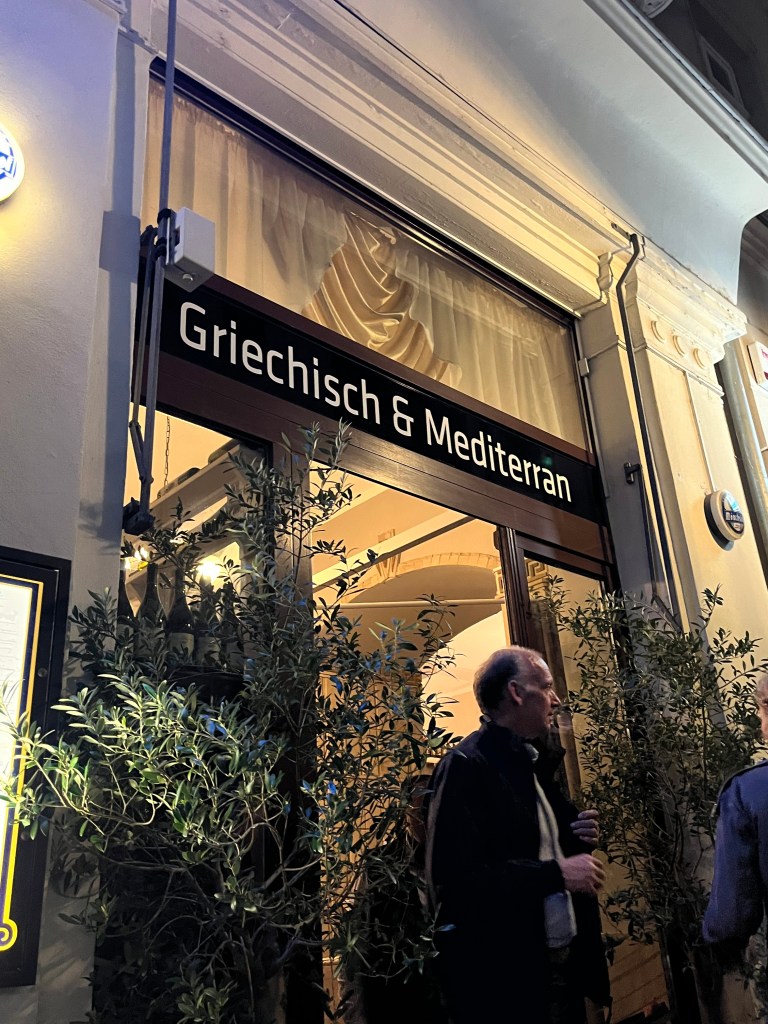

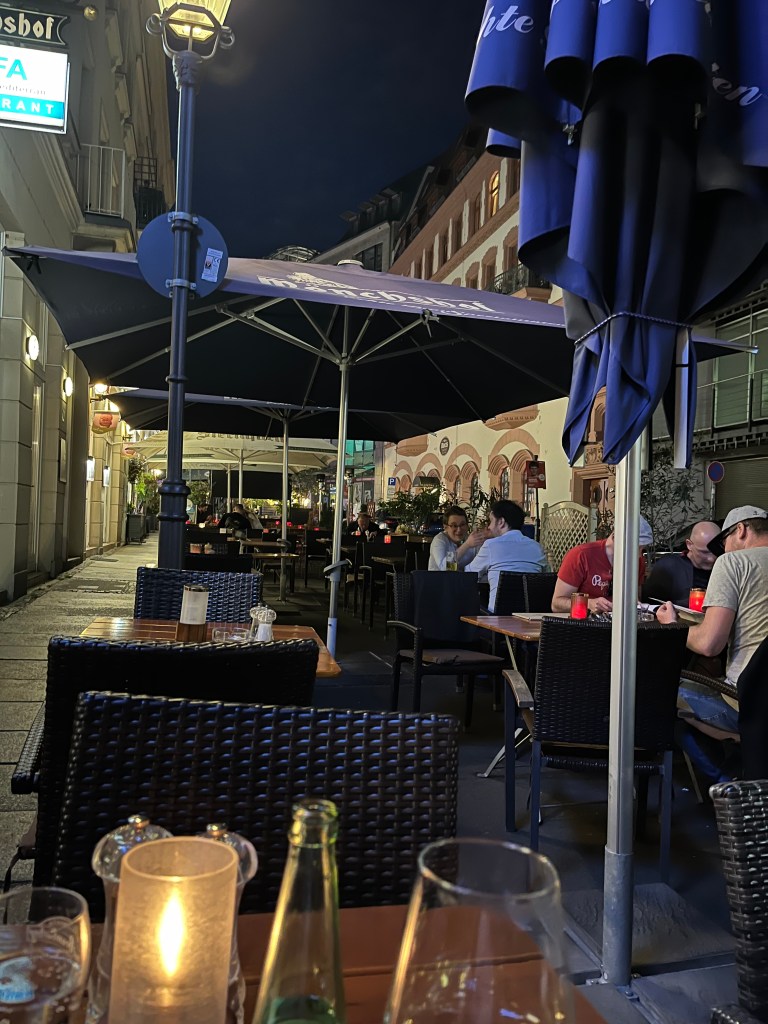
On the way back, I snapped some pics of the city.

City-Highrise built in the DDR era 
New City Hall 
New City Hall Archway 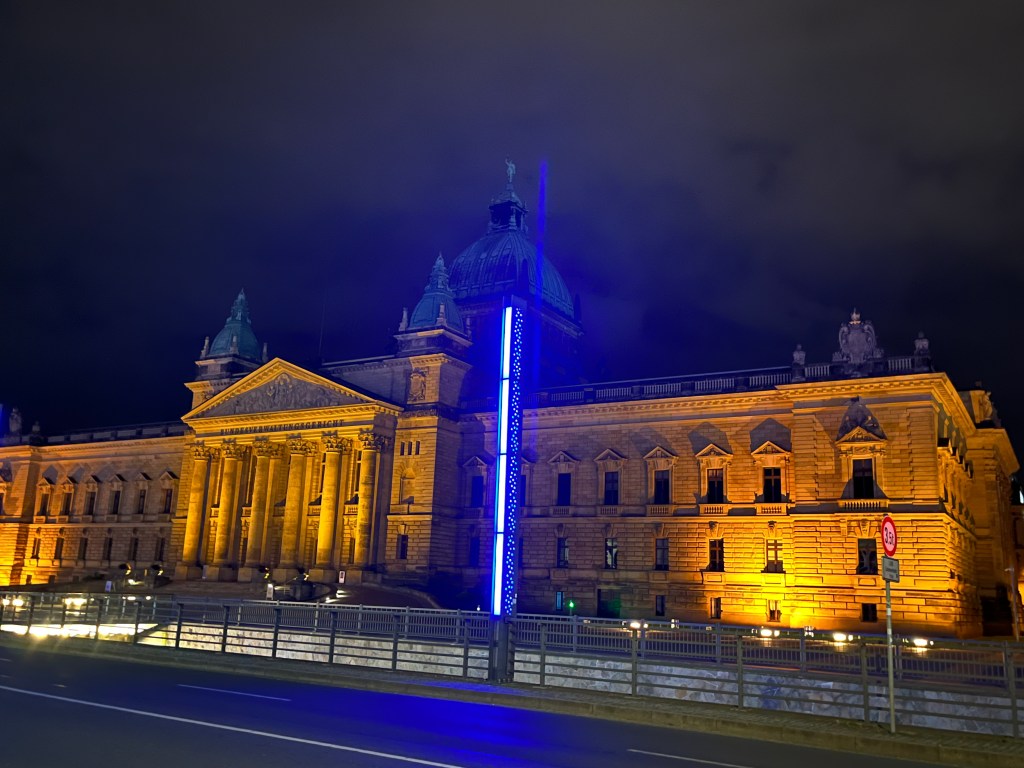
Federal Administrative Court of Germany built in 1895 This morning I dropped by Fix Coffee again and had a nice chat with the barista, who recounted her five week driving and bus trip around the USA. My train for Dresden leaves in 90 minutes. I’d love to visit Leipzig again.

-
Leipzig Day 3: May 2, 2024
Although my Airbnb has a Nespresso machine that satisfies my morning caffeine craving, I craved a well made flat white this morning, so I made my way over to Fix Coffee, which had a great aesthetic and the best coffee I’ve had so far in Europe. I love when you can taste the deep roasted espresso.

My building in the morning 
A perfect flat white 


After my caffeine fix, I walked down to the nearby market to pick up a few things. At the checkout counter I apparently placed my basket in the wrong place and was scolded by the older cashier, whereupon the young German guy in front of me smiled and said “welcome to German hospitality!”. He told me to ignore her. I probably know a thousand German words, and can read essential signs and am told that my pronunciation is good; however, I struggle to put together more than a few coherent sentences.
Since it’s another perfectly sunny day, I plan to use the bike and take a long leisurely ride through the parks and out to the lakes, which were created 30 years ago by filling in the huge coal and lignite mines. Perhaps I’ll stop by Die Spinnerei, the repurposed spinning mill that was once Europe’s largest before being closed in 1993. It’s now filled with galleries and artists’ lofts.
Well, my legendary good luck has not been with me this week! On Monday morning, I decided to use the nice hotel fitness center for a workout. I usually do at least 3 sets of 12 pull-ups per week. The gym had one of those gnarly machines with 4 angled pull-up bars instead of the traditional straight ones that I’ve been using for years. When I hopped up to grab the bar, I felt a stab of pain on the inside of my right arm, around the area of the lower bicep and forearm. I then iced it on and off for the next 24 hours until it was feeling better. Worried that I may have torn something I called my son, who’s in an orthopedic practice. I’ll see him when I’m back next Thursday . Well, about 3 miles into my ride a thick twig flew into the front wheel and I went down, involuntarily breaking the fall with my right arm! Ouch! I wasn’t going fast, but this set my recovery back. The twig broke the front plastic fender and bent a spoke. I thought it smart to return. The owner and his girlfriend came over and told me not to worry about the bike. After icing it again and taking 650 mg of Bayer aspirin, it’s feeling better. I’ll stick to walking from now on!

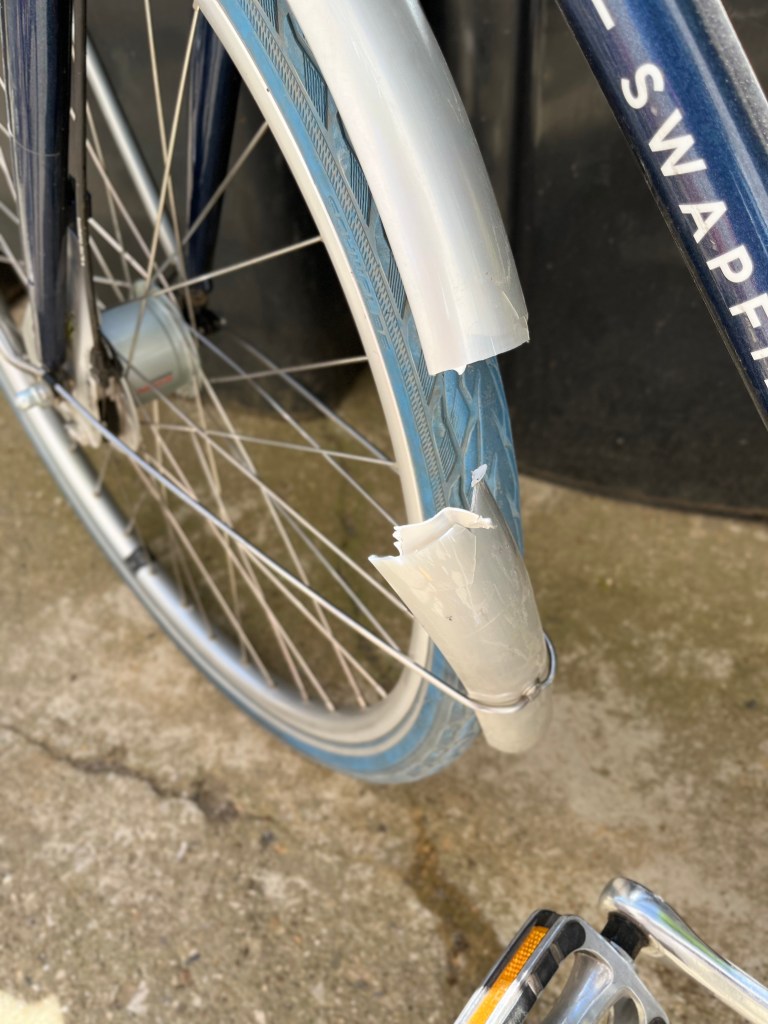

The cursed pull-up bar! An hour later they returned to announce that the shop already repaired the bike! We chatted for about an hour. Since they both lived in Brighton, England for five years, their English was perfect. They’re both from Tübingen, in the west. They said that after reunification West Germans bought up 70% of the properties in Leipzig, leaving its inhabitants with no choice but to pay higher rents, which in the past had been heavily subsidized by the Communist regime. They also said that Tesla was doing well since the German car makers have a year-long wait for their electric cars. Apparently they’re exporting them all to the US and China.
Later that afternoon I decided to walk the 3 miles to Die Spinnerei. I love walking through authentic neighborhoods in foreign cities, away from the tourist zones. I found most of the buildings in good shape, with lots of foot traffic and street activation. Die Spinnerei itself is impressive. It’s filled with galleries, tech incubators and art supply stores. There’s even a small avant-garde museum. Here are photos of the old mill.




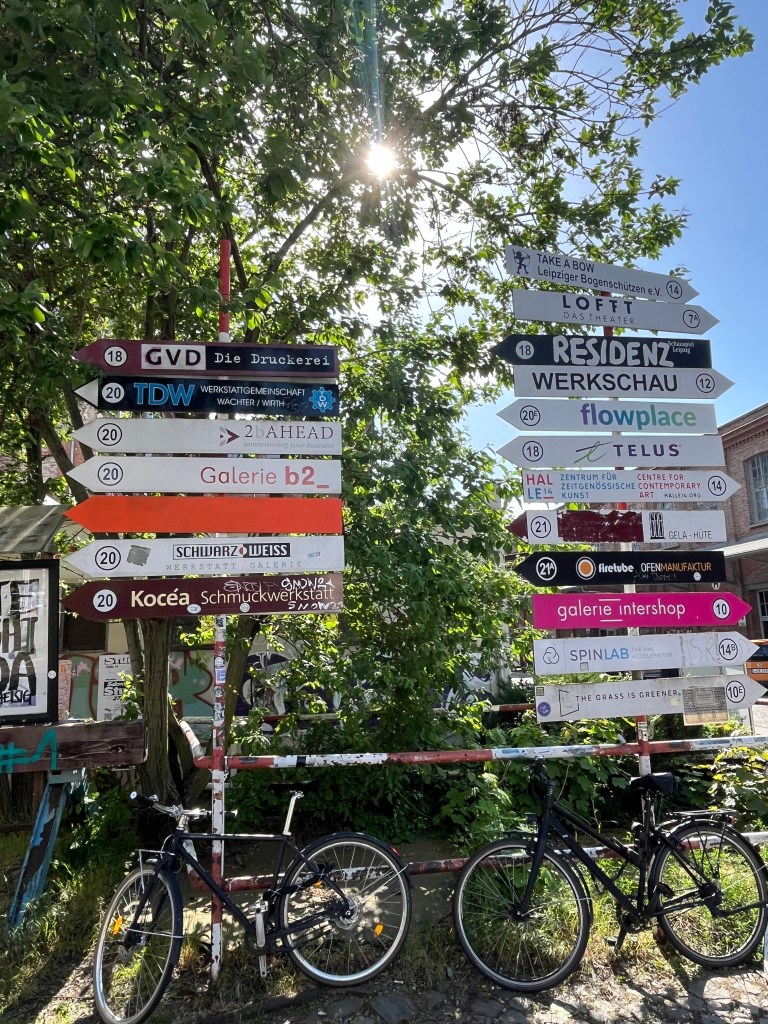

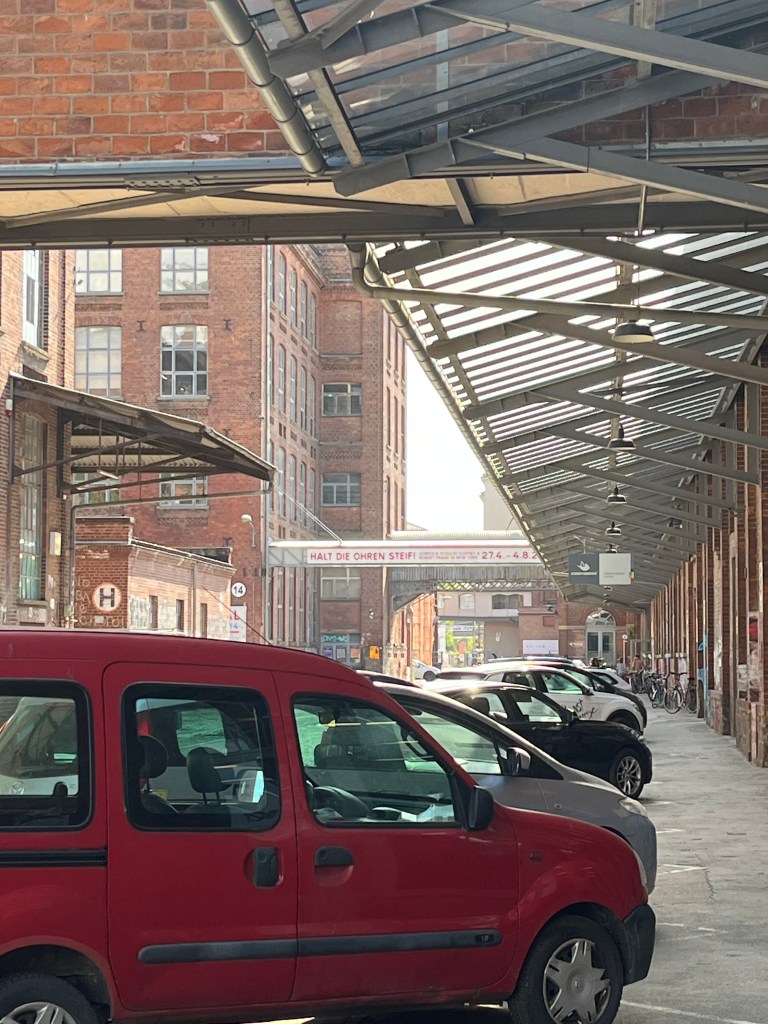
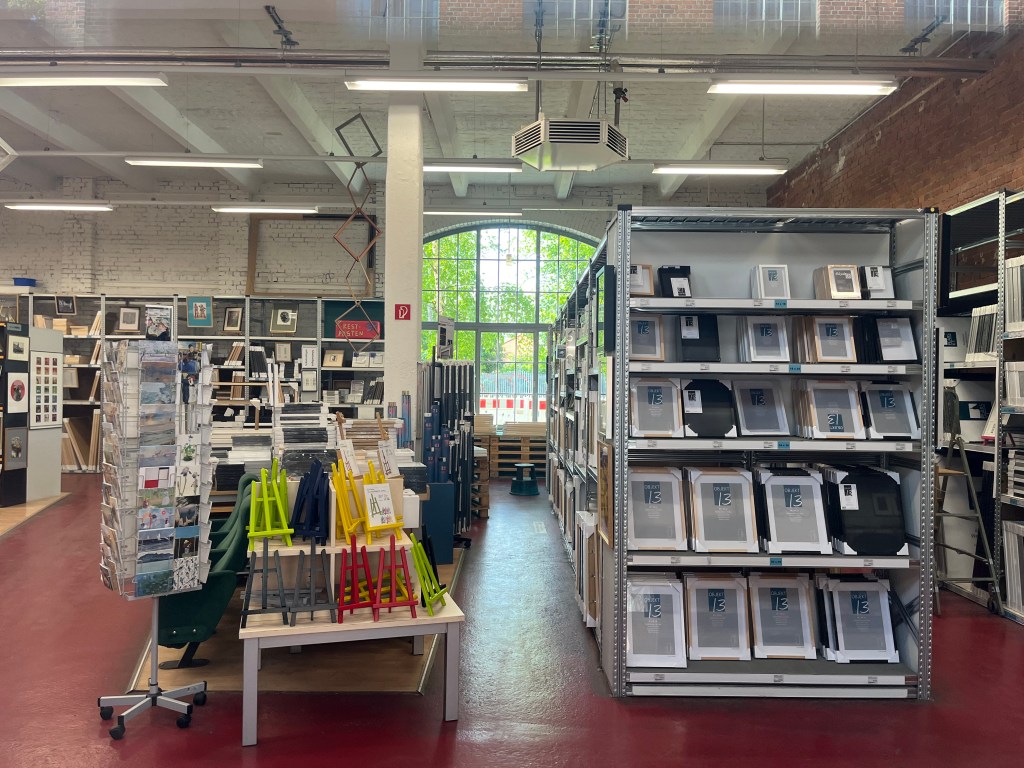
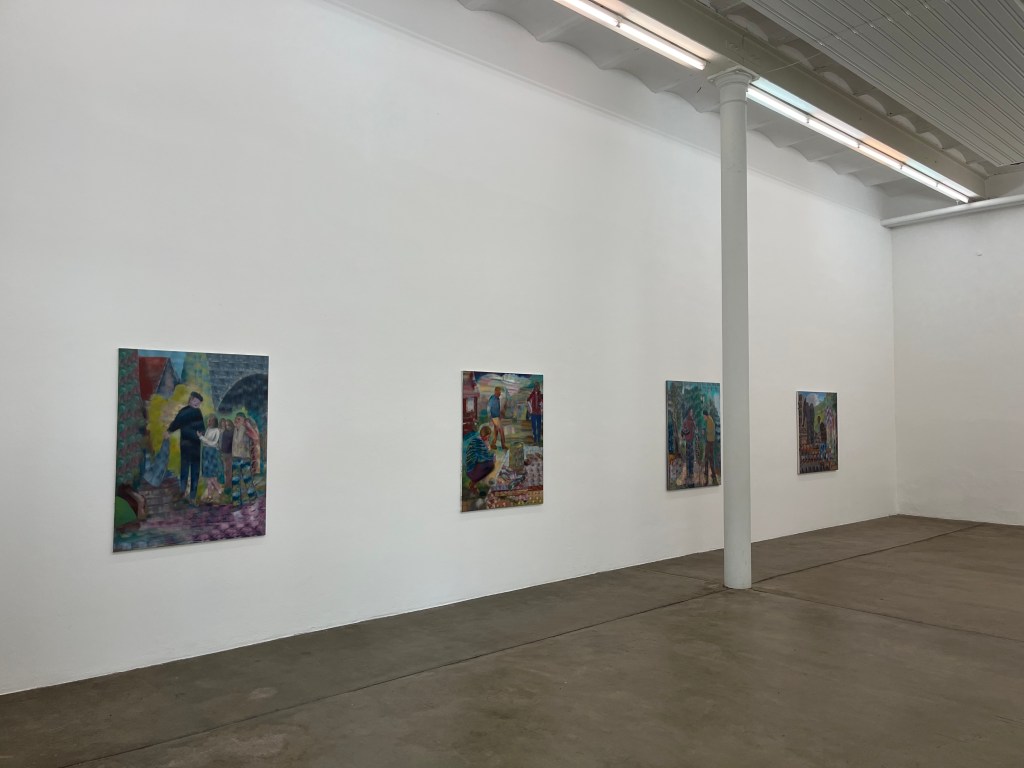

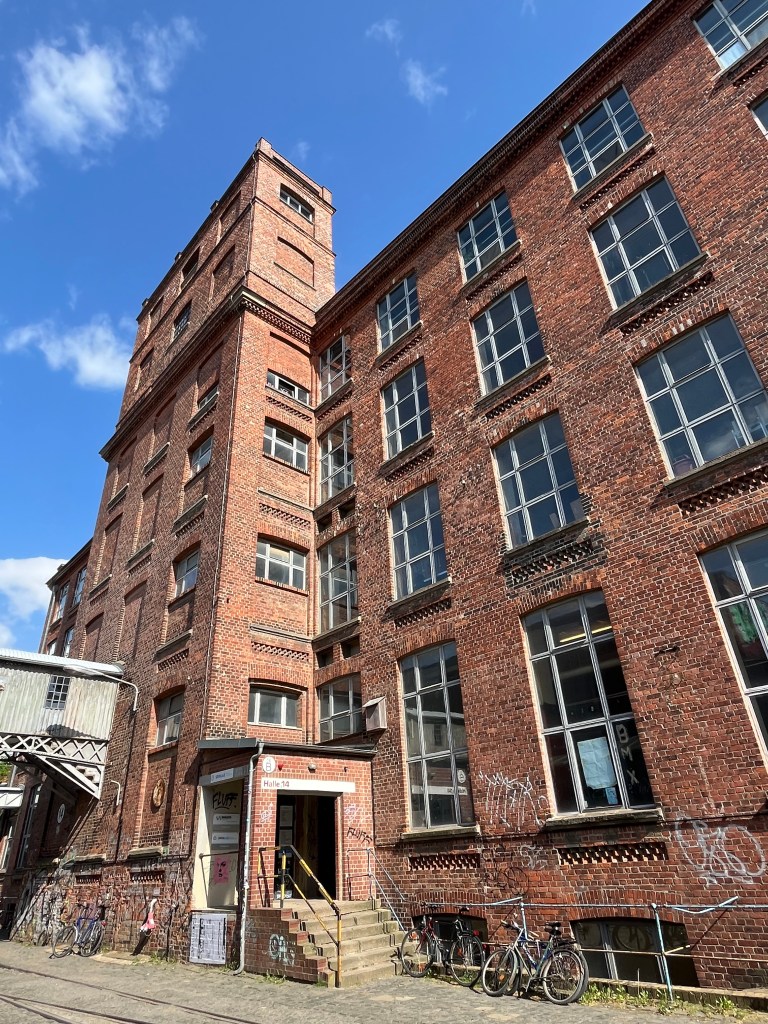

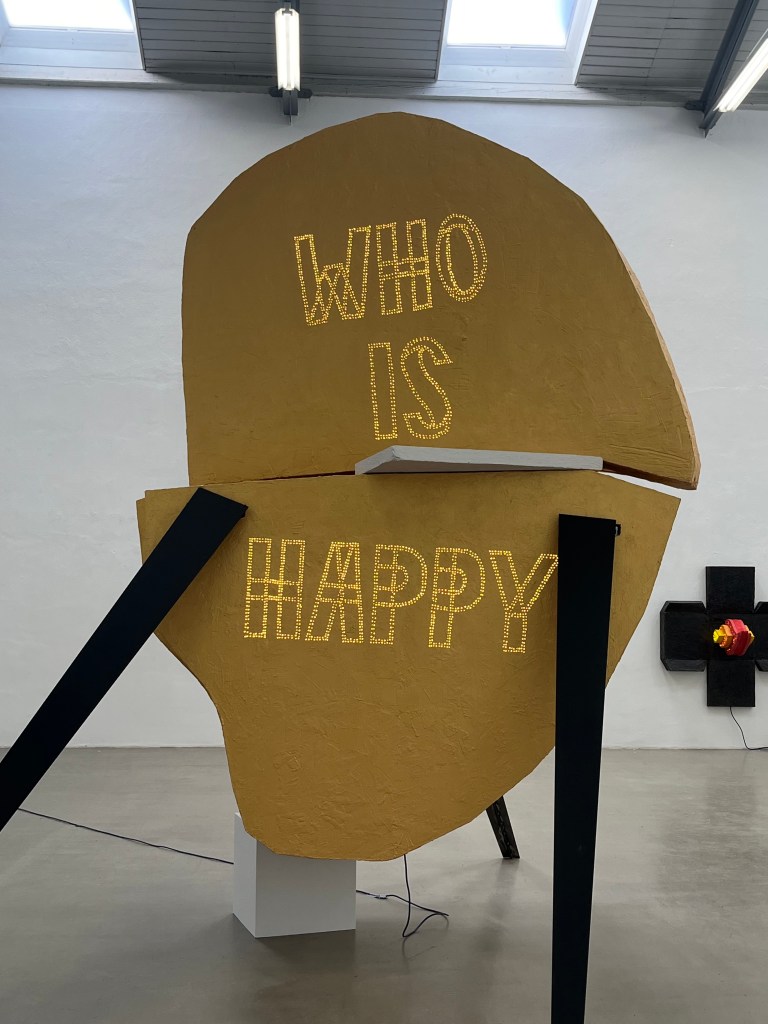

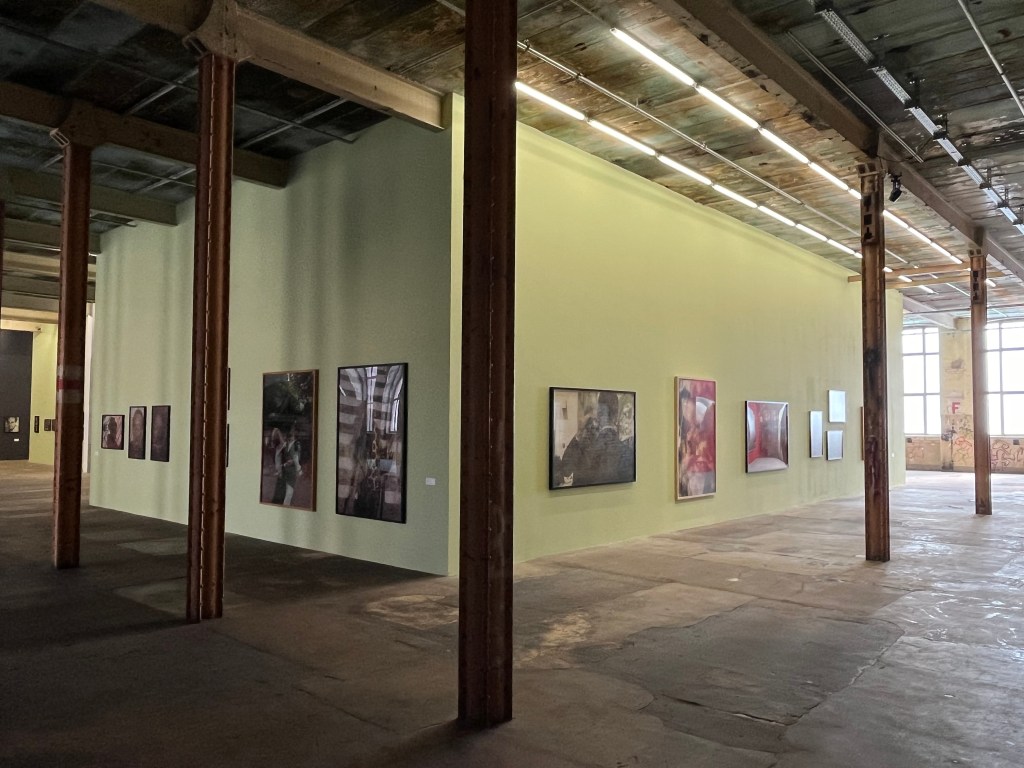
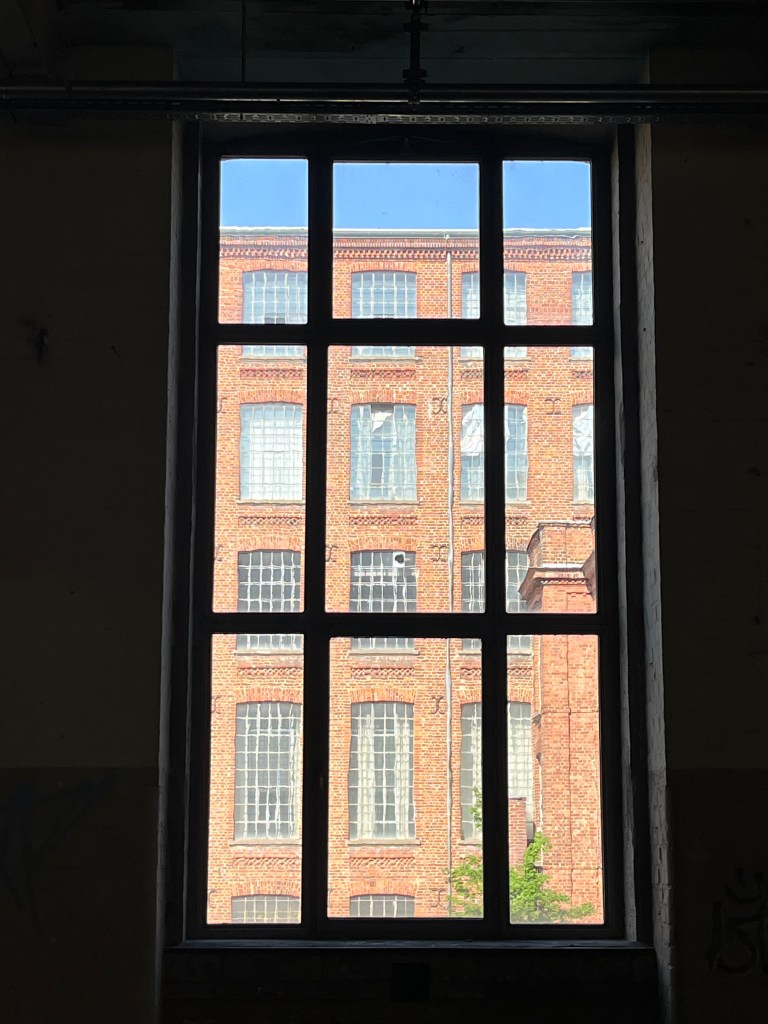
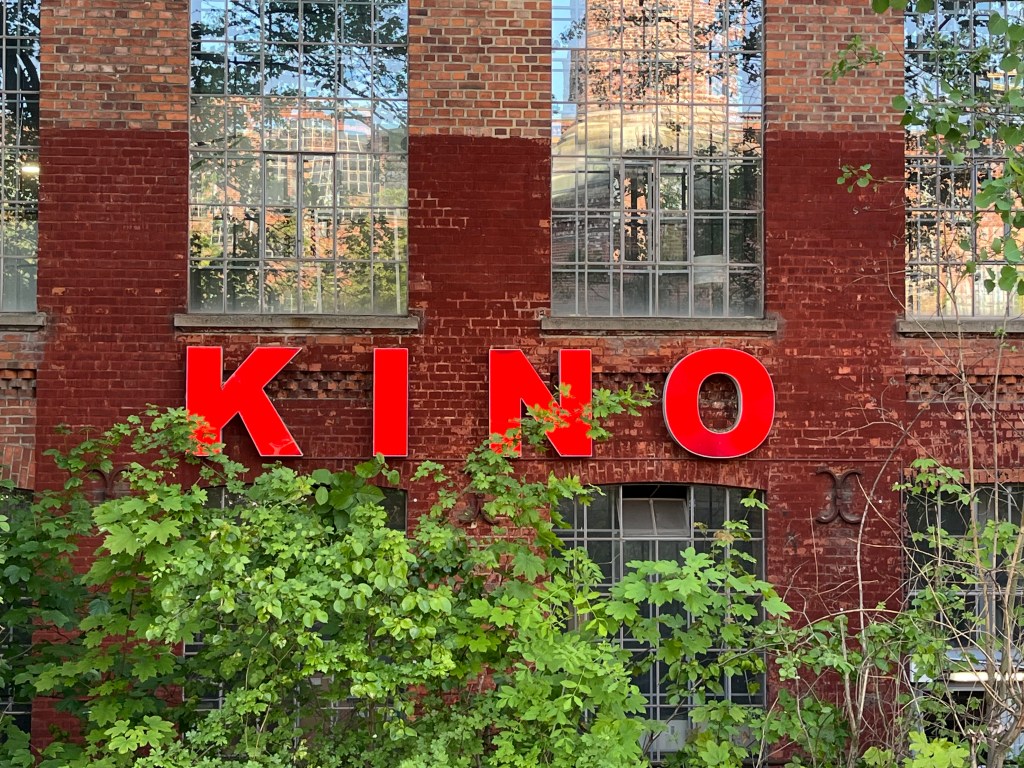
On the return I decided to take the tram part of the way since I knew I was close to my daily goal of ten miles. On the way, I snapped pictures of a canal and the River Mulde. If I hadn’t injured my right arm I would’ve rented a canoe.

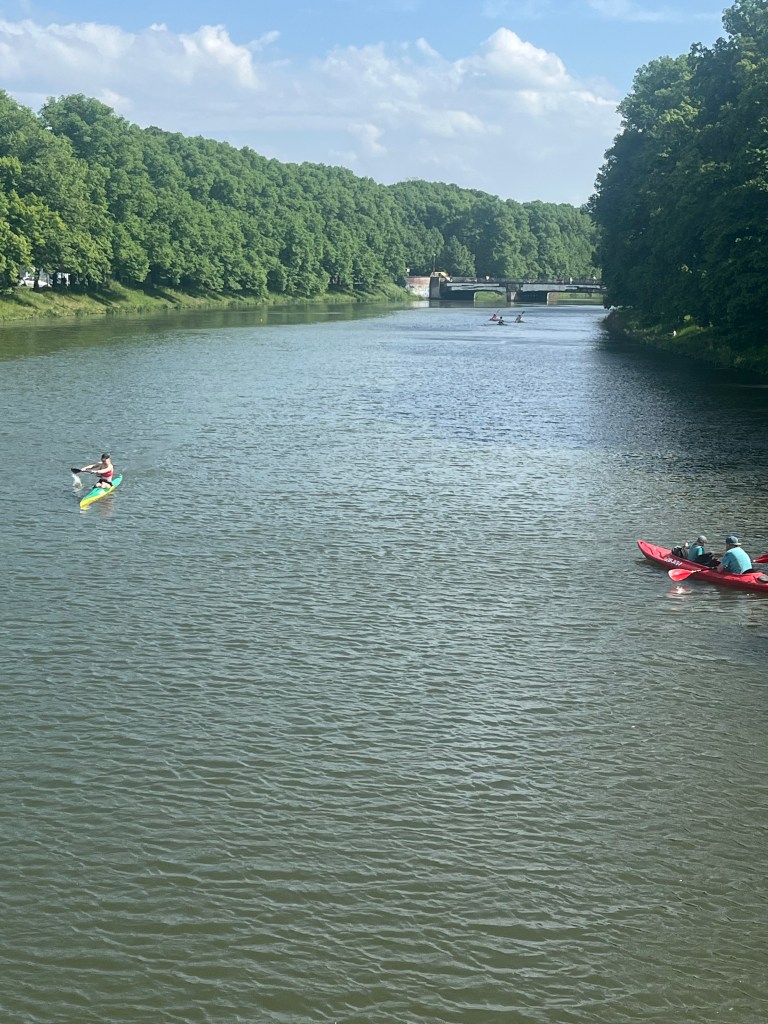
Once I got back to the center, I entered historic St Thomaskirche, founded by the Augustinians in the 13th c. It went through several renovations before becoming a Lutheran church in the early 16th c. Lutheran churches in Northern Europe would be considered “high church” in the US since they still retain a Catholic “light” liturgy and crucifixes. In the Church of Sweden, they still use incense. The organist was playing Bach during my brief visit. Bach is buried under the nave.

High Altar 
Great Organ Heading back to my Airbnb via one of the galleries, I passed by a gourmet market and wine shop. A gentleman was presiding over a kiosk of chilled wines, so I stopped and we had a nice conversation about wines. He suggested I try a local Saxon Grauburgunder ( grey Burgundy) which I found delightful. Saxony only has 600 hectares under cultivation, but the wines are dry and superb. While standing at the kiosk, I started chatting with a lovely early 60’s couple who spoke little English. Between my appalling German and their slightly better English, we shared travel stories for about thirty minutes. They grew up in Leipzig during DDR times. Jens worked for Caterpillar and his sole USA visit was a company-sponsored trip to Reno and Vegas 25 years ago, where he lost $300 at the casinos. When I told him I’d spent five nights in Berlin, he and his wife scoffed at my decision. Like most Europeans living in provincial cities, they loathe the capital! Jens lit up a cigar and that prompted me to ask for one, which I may smoke tomorrow night in Dresden. When I settled my bill with Max, the wine sommelier, he told me the wine was on the house since he enjoyed out wine conversation. What a marvelous coda to a day of mixed blessings!
-
Leipzig Day Two: May Day
As I’ve written in the past, the free city tours are always the best, since the guides make far more from tips than the guides who work for an agency. Generally, each person on the tour tips €20. Today there were 11 on the tour. I was the only American. Our guide was excellent. We stayed in the historic center, when most of the notable sites are located.
Like most major German cities, Leipzig was practically razed during the war. Since it ended up in the DDR, restoration was sporadic. Instead, the DDR built ugly replacement buildings. It wasn’t until after the 1990 reunification that the federal republic invested billions in restoring most of the significant landmarks. Today, it’s impossible to imagine that many of them were almost completely rebuilt.
We started 300 meters from my Airbnb in Augustus Platz, which is dominated by two decent DDR structures: the renowned Gewandhaus Orchestra and the Opera House. In the center is a majestic fountain.

Augustus Platz 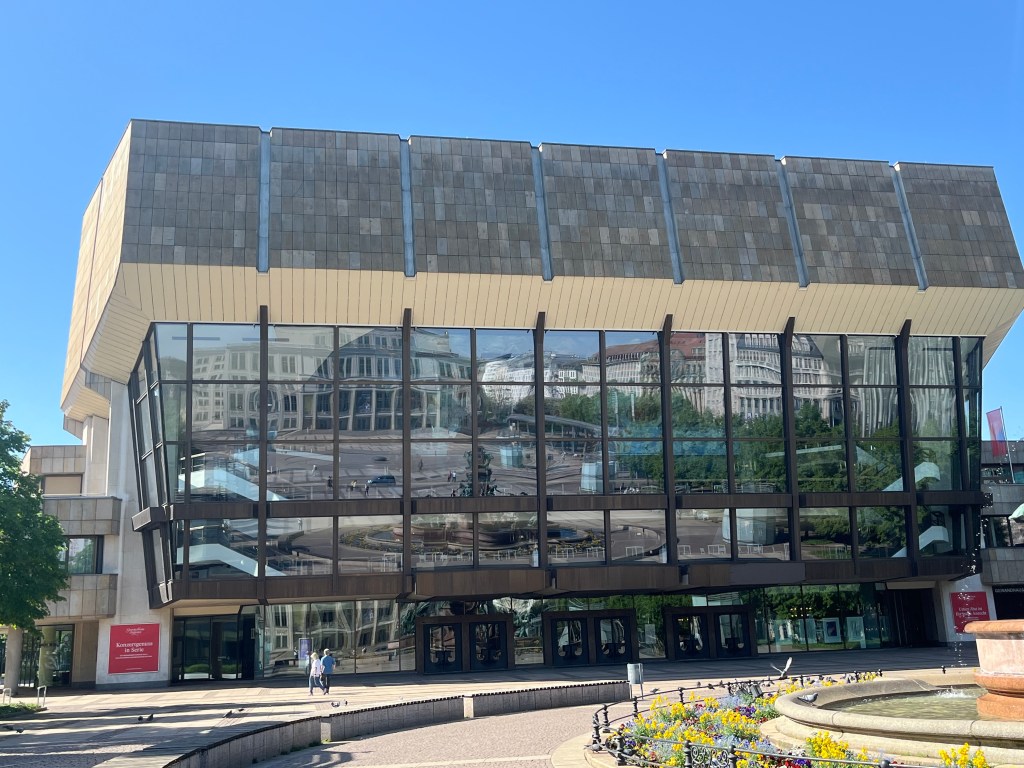
Gewandhaus 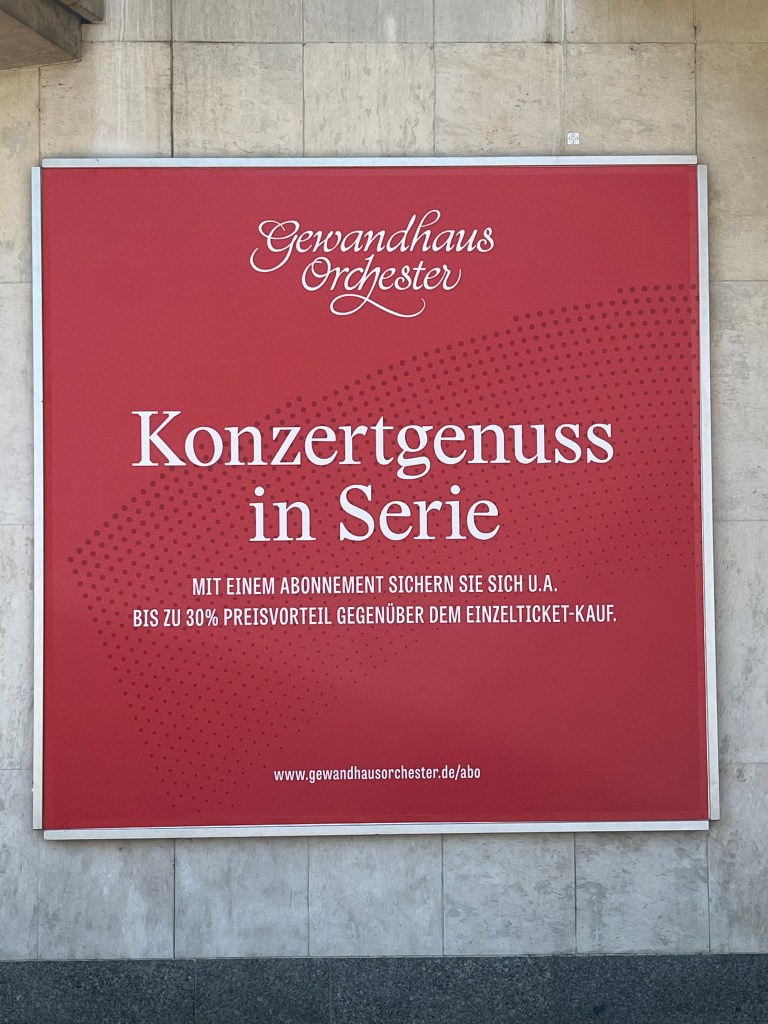
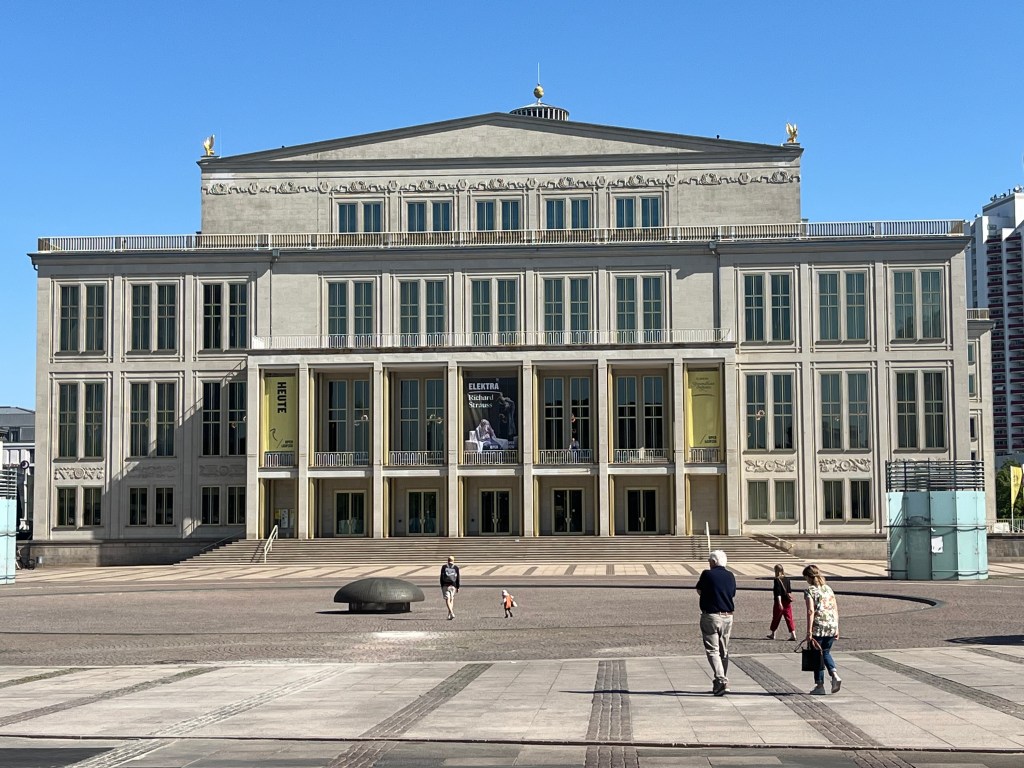
Opera House 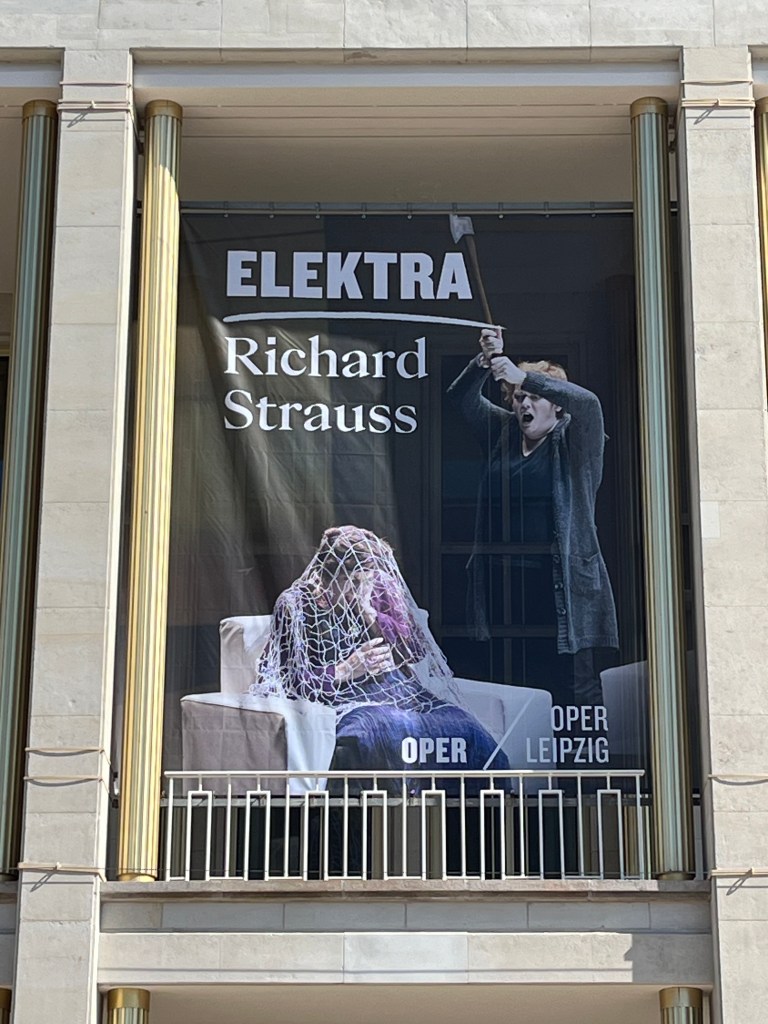
From the Augustus Platz we made our way to the University of Leipzig, established in the 15th c. Some of its famous alumni and professors include Goethe, Nietzsche, Heisenberg, Wagner, Leibniz and Angela Merkel. The university boasts of 14 Nobel Prize winners. The DDR elected not to rebuild the beautiful 18th c. main building and built a ghastly prefab building instead and also leveled the adjoining 16c. Lutheran church. The German government funded a new main building in the early 2000s.
After 1800, Leipzig grew rapidly, as its commercial fairs made it a major center of European commerce. Messe is the German word for fair and an idealized “M” is the symbol of the city. In the 19th c. the city relocated its Rathaus (city hall) to the site of an old castle, which is now the hub of a series of upscale galleries, shops and restaurants.

The old city hall 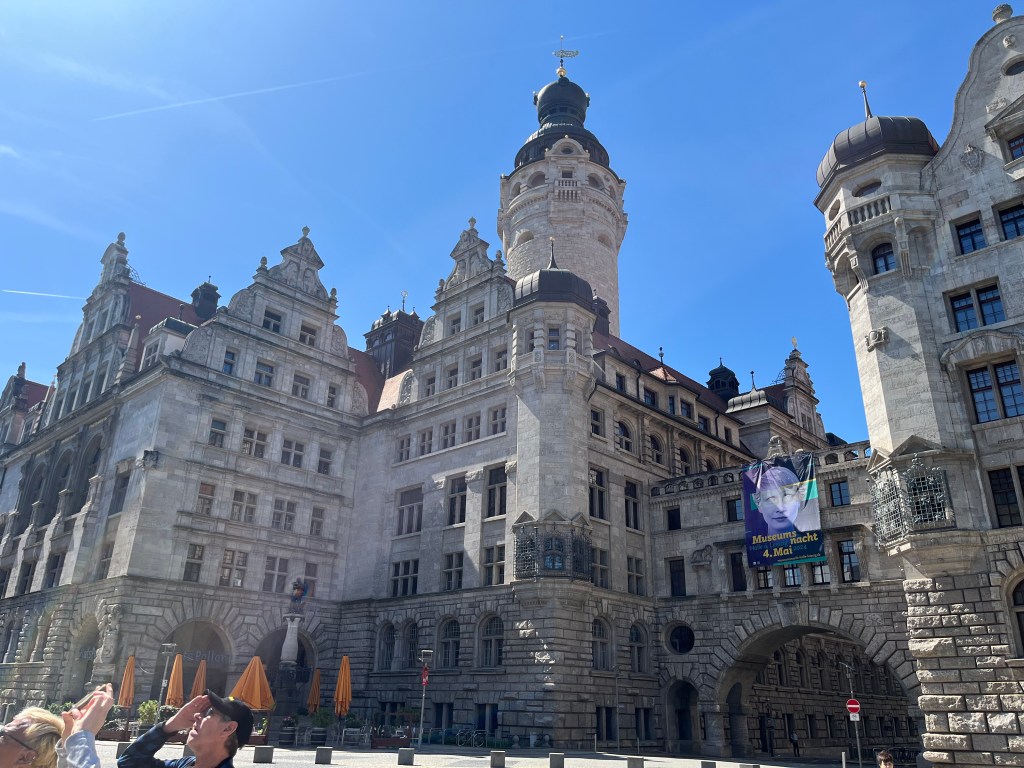
The new city hall 
Der Neues Rathaus 
One of the galleries modeled after La Galleria in Milan 
Another gallery Few cities can rival Leipzig’s musical and literary pedigree. Both Schiller and Goethe lived here. All Germans read Goethe’s “Faust” in high school. The city’s famous composers include Bach, who was resident at St. Thomas Church, which also has an internationally acclaimed boys choir, Richard Wagner, who was a friend of Goethe’s, Felix Mendelssohn and Robert Schumann and his wife, Clara.

Bach 
Goethe 
St Thomas Church 
St Thomas Church tower After the war, Leipzig’s population fell from over 750,000 to 550,000. The bulk of the population loss was attributed to those who fled the Soviet Zone to the West before the DDR border was sealed. During the DDR life was grim and the city became heavily polluted as the state built heavy industry and used coal as its principal energy source since Saxony was a major coal region. By 1979, the nascent protest movement began as one focused on the environment. Since the DDR surprisingly had a relatively hands-off policy vis-á-vis the Lutheran Church, the churches became the loci of anti-regime activity. By 1989, St Nicholas Church in Dresden hosted Monday night services that attracted thousands who were committed to peaceful protests. Two days after the huge East Berlin commemoration of the DDR’s 40th anniversary, 10,000 protestors marched from St Nicholas Church to the Martin Luther Ring. Because a trade fair had recently concluded, West German TV reported on the protests. Since many citizens of Leipzig were able to receive West German TV signals, the demonstration grew to over 200,000, followed by similar mass demonstrations elsewhere in the DDR. While the Stasi wanted to take harsh measures, the Politburo, sensing the end was near, forbade any police repression. Less than a month later, the Wall fell. A few days after the Leipzig demonstrations, the Politburo dismissed the Honecker government.
Three views of St Nicholas Church, with the October 9 plaque and memorial.


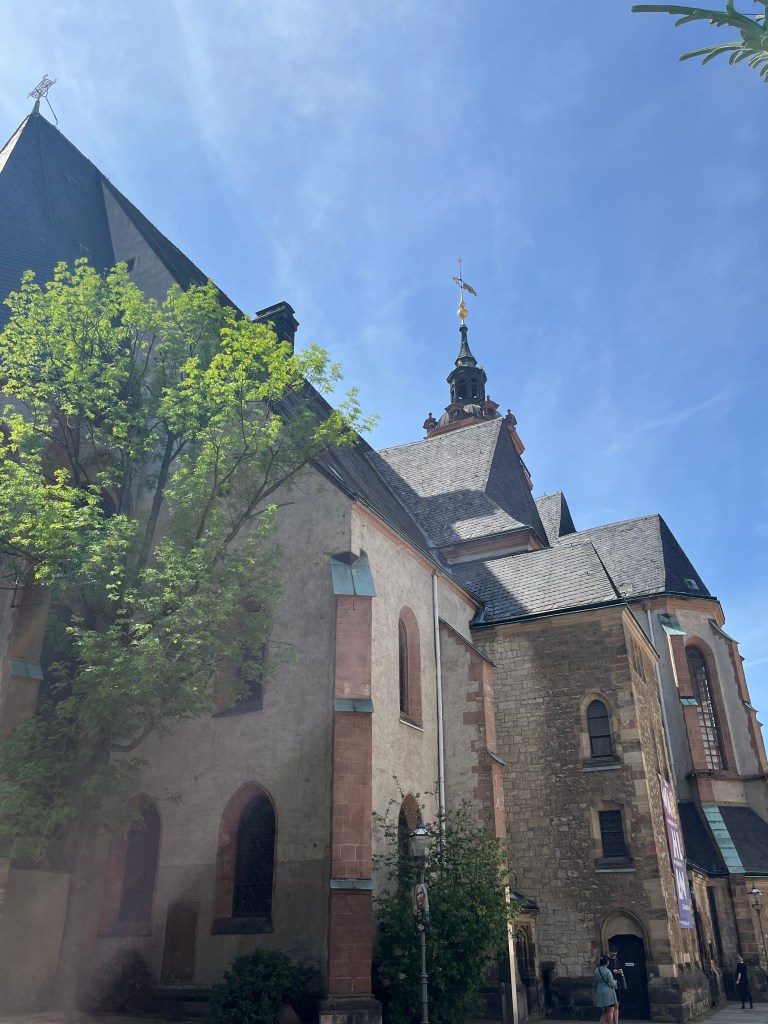


At the end of the tour, we viewed a famous Art Nouveau coffee shop and the renovated Stock Exchange, one of the three oldest in the world.



After a late lunch, I took a five-mile round trip walk down Pragersraße to the Völkerschlachtdenkmal (Battle of the Nations Monument) built in 1813 to commemorate the defeat of Napoleon’s retreating army by the forces of Prussia, Austria, Russia and Sweden. Over 600,000 troops were involved in the Battle of Leipzig and there were 120,000 casualties, the biggest battle in European history until the First World War.
The monument stands over 330 feet high.
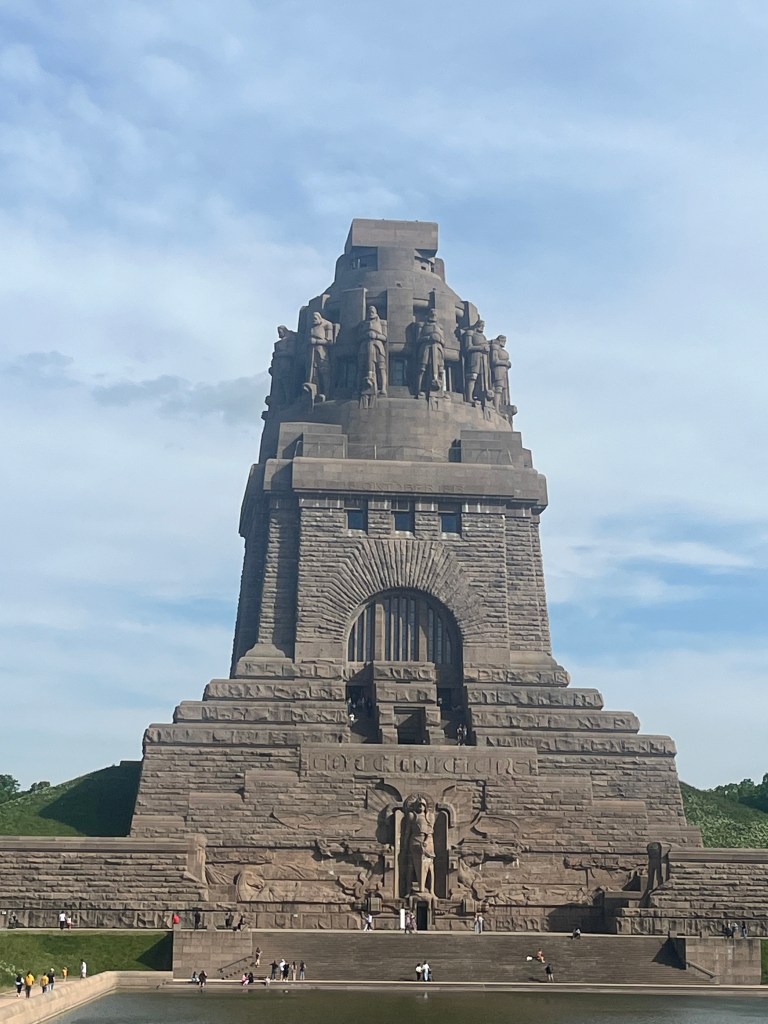

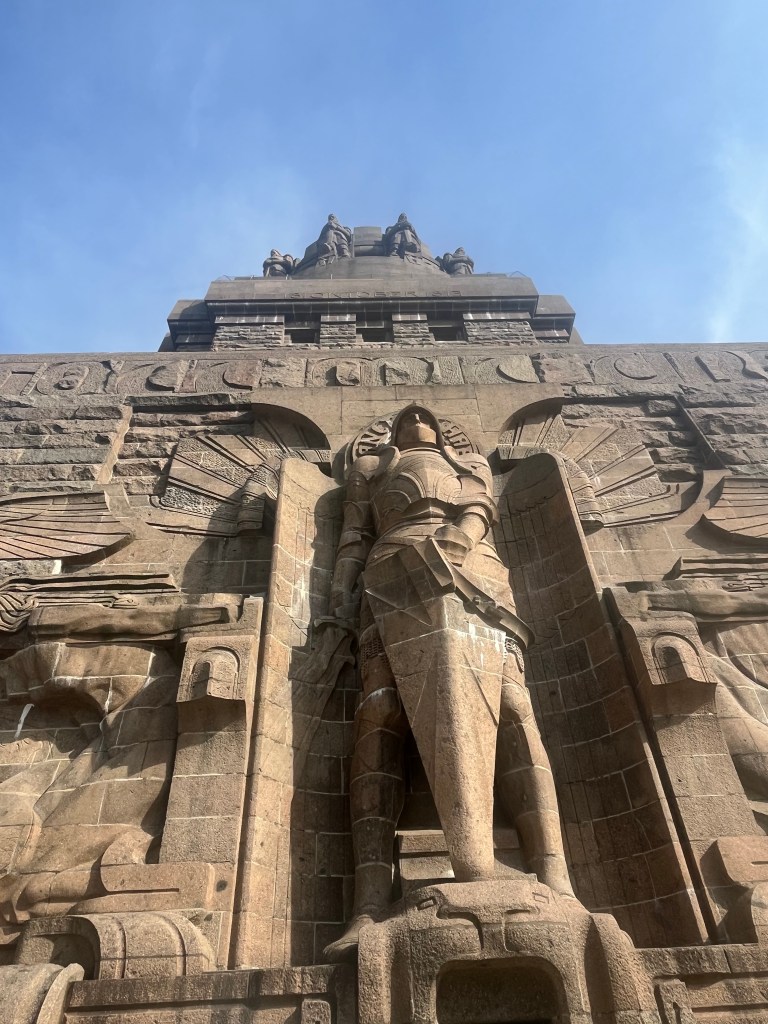
-
Arrival in Leipzig: April 30
As I mentioned in the previous post, I was impressed with the size of the Leipzig Hbf and the ease of grabbing a tram to my Airbnb. My host gave excellent directions and he greeted me on the plaza in front of a massive Stalinist neo-classical building, behind which stood my beautifully renovated 1862 apartment building.
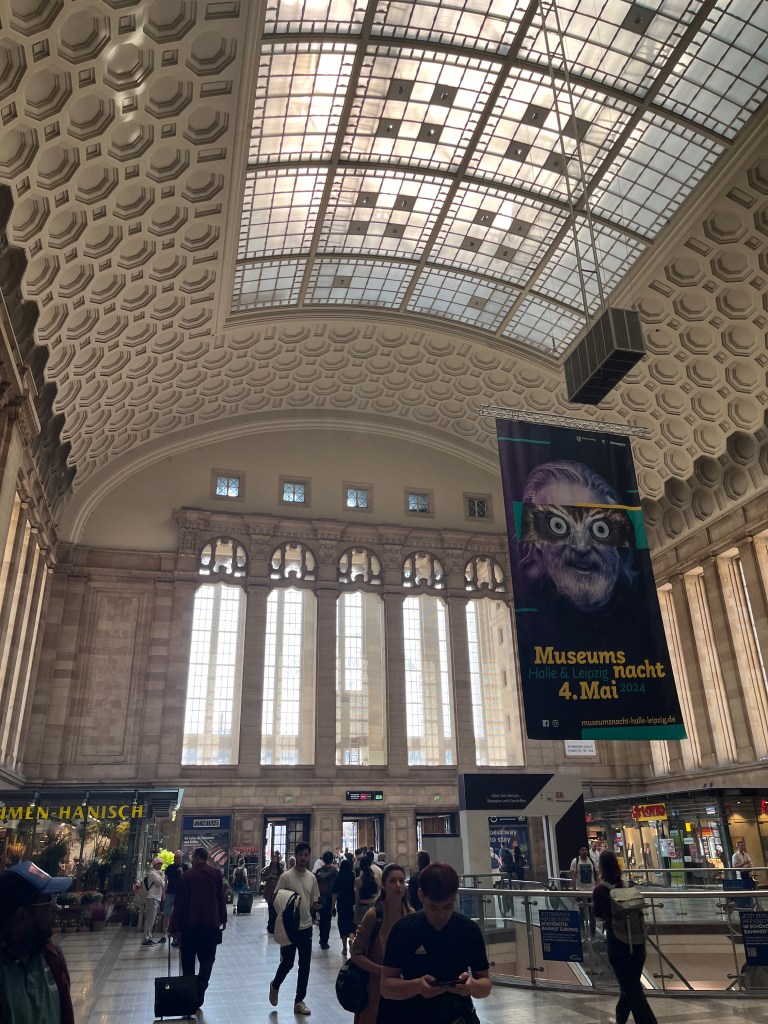
Leipzig Main Station 
Stalinist block 
Facade The Airbnb was the nicest one in which I’ve stayed in over 6 years of traveling to Europe. Spotlessly clean and superbly equipped, it’s going to be a fantastic home base for the next three days.
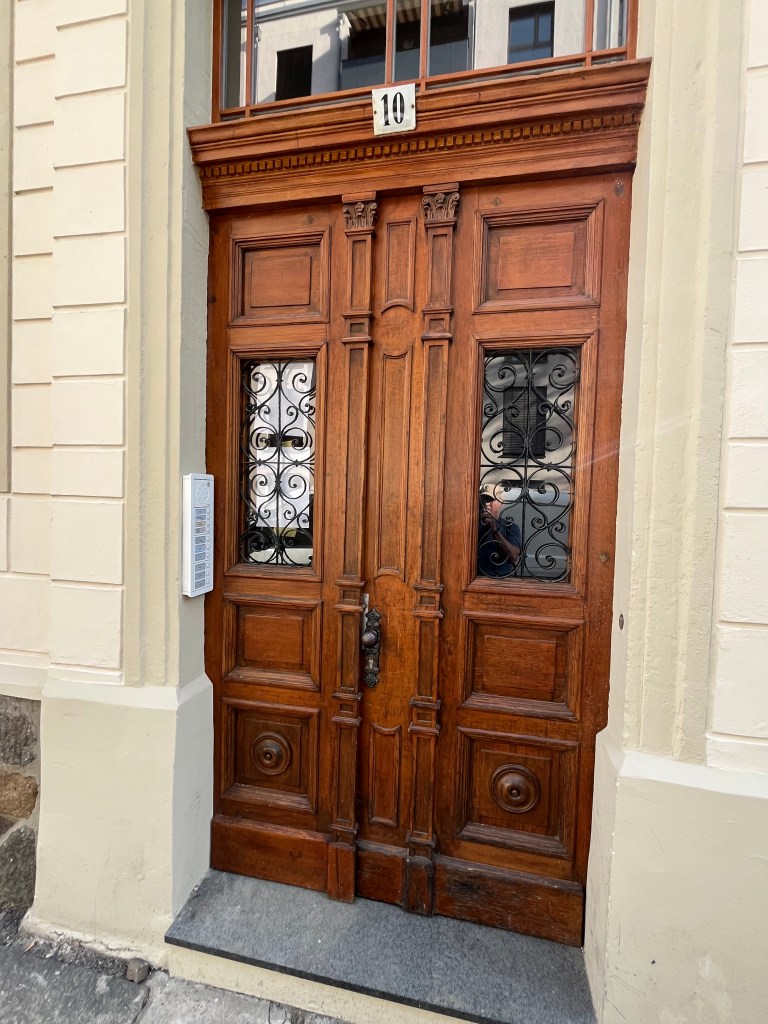
Main entrance 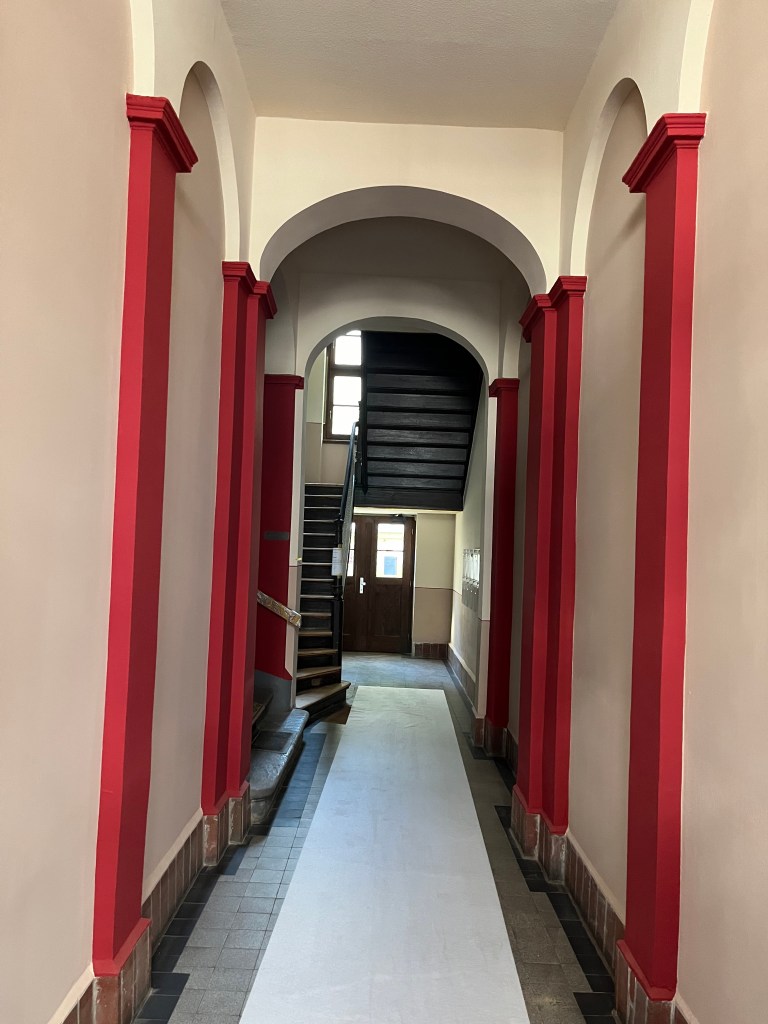
Newly painted hallway 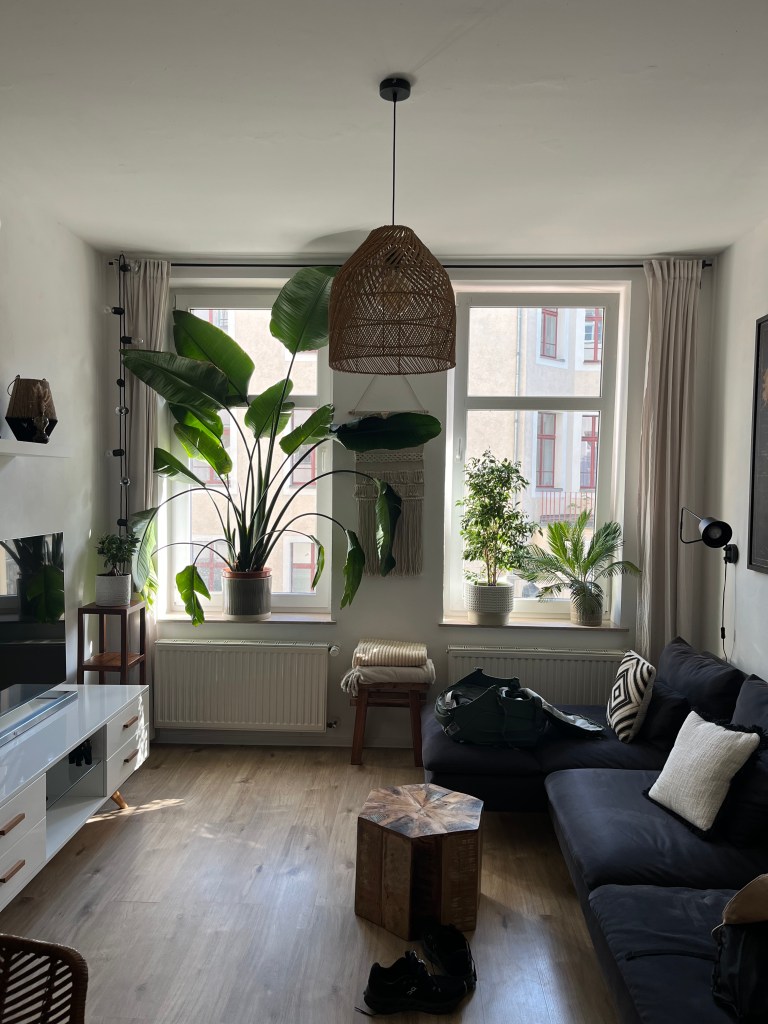
Living room 
Kitchen and balcony 
Bath 
Bedroom My host showed me suggested biking routes, recommended restaurants and shops and showed me the flat’s bikes. He and his girlfriend have bought several old apartments in the historic core. Leipzig is less expensive than the rest of Germany but is currently experiencing a mini-boom. It’s a hidden gem, and my first impressions are high.
After a little orientation stroll, I ate al fresco at Macis, which is also connected to a premium grocery and wine shop. I stocked up on some supplies since virtually everything will be closed for the May 1 national holiday. I had two delicious dishes, one of which was a sea bass ceviche. I also tried a dry Riesling recommended by my server, one not available abroad.


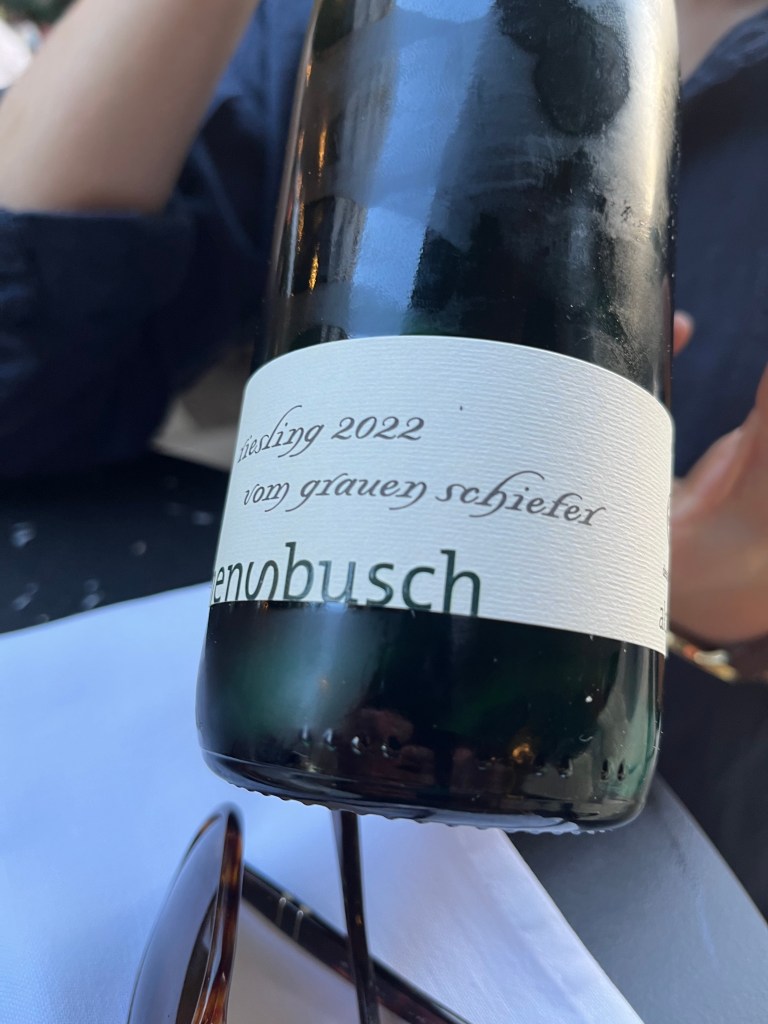
On the way back to my place, I snapped a few pictures of the streetscape. It was twilight and there was a rock concert in the park adjoining Martin Luther Ring, which circles the central core. In Germany it’s common for people to walk around with beer bottles in hand and the police presence is minimal. Unlike the US, I’ve never seen bottles broken on the streets the next morning. It’s a very different urban experience, as travelers to Europe are aware.
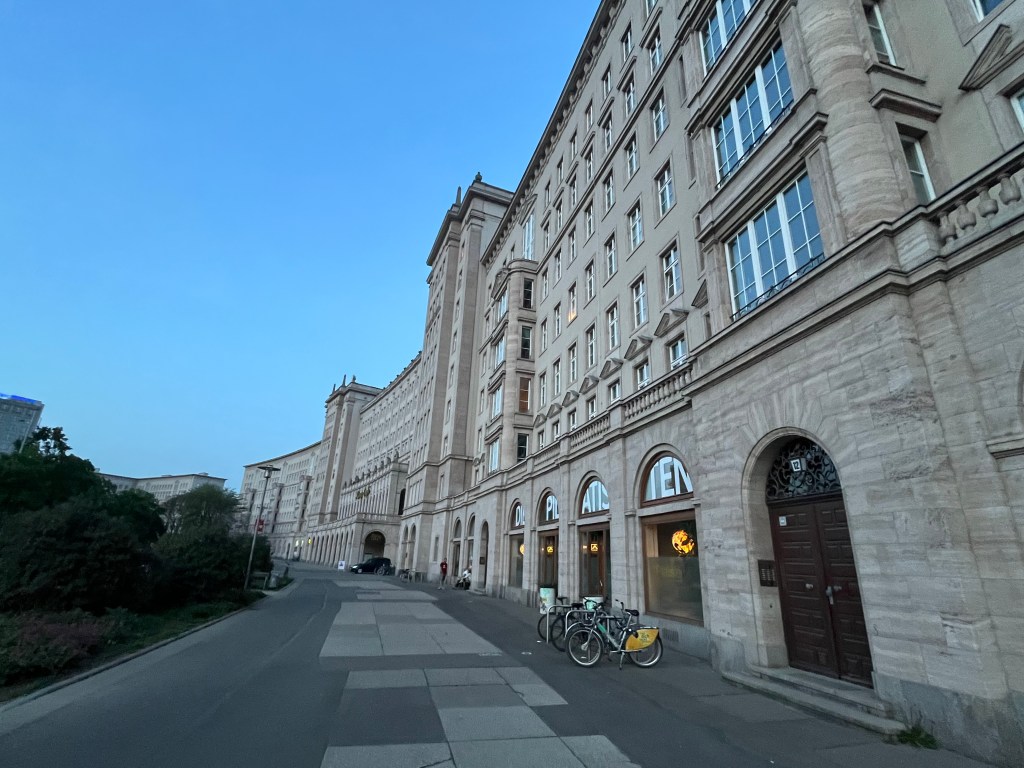
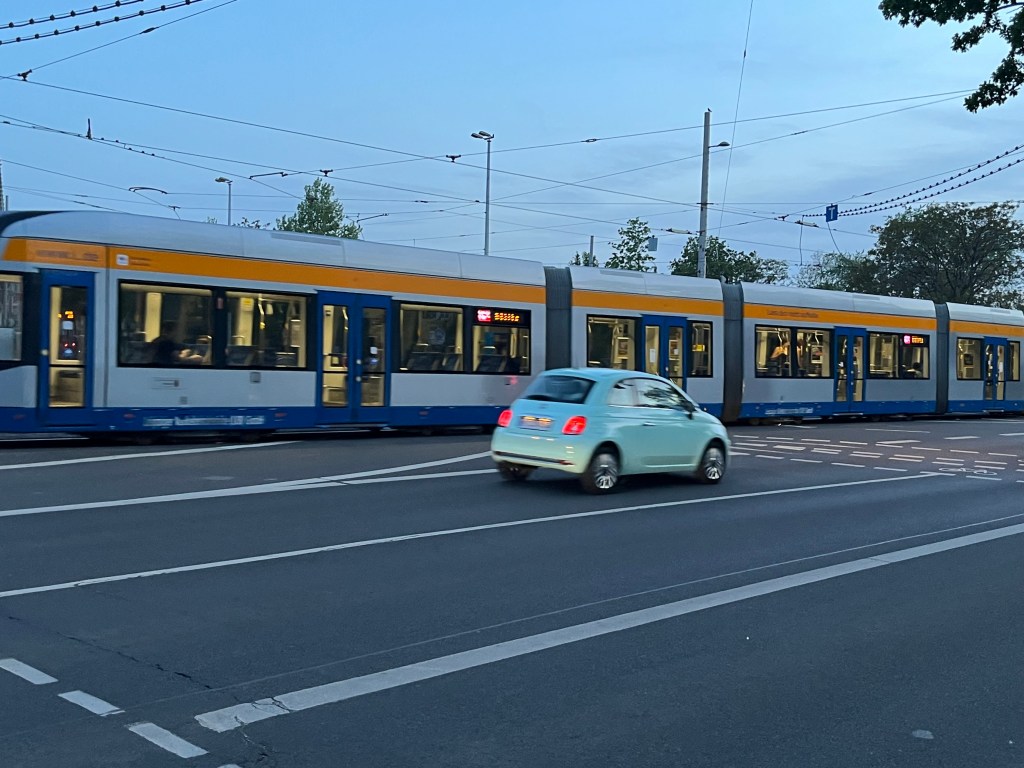

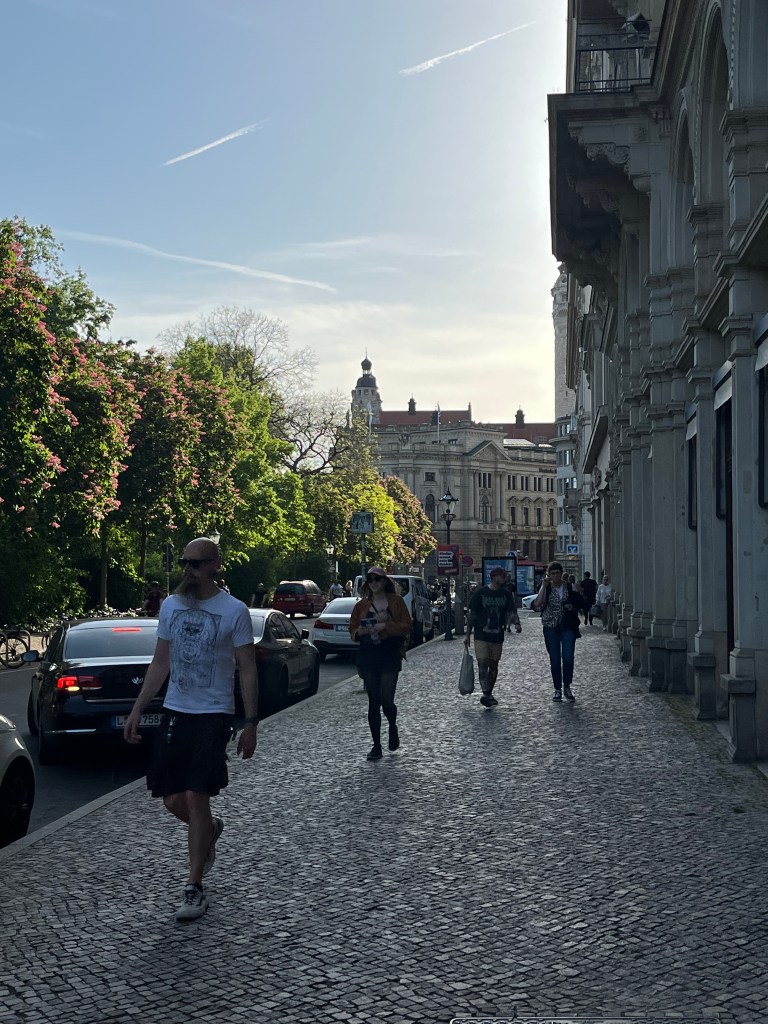
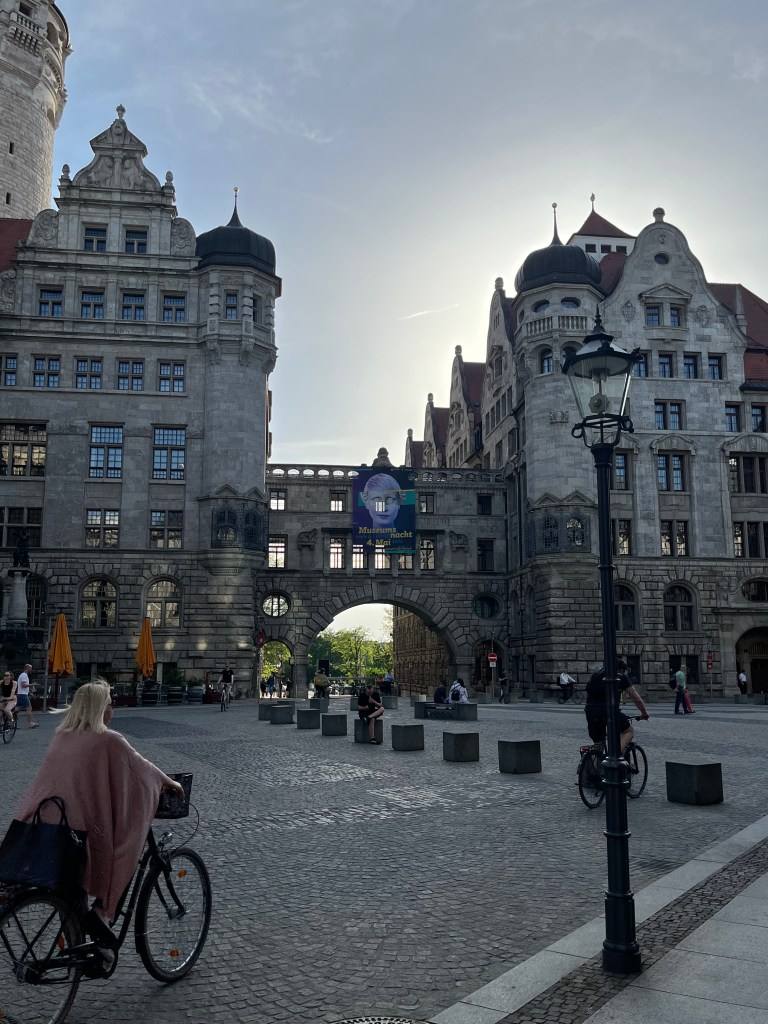

Tomorrow should see a high of 78 F. I’m looking forward to exploring the city and its famous cultural landmarks and historic churches and perhaps taking a long bike ride in the afternoon. Leipzig has a rich cultural history as the home of Bach and Friedrich Schiller. It was also the epicenter of mass peaceful protests that played a large role in the collapse of the DDR in late 1989.
-
April 30, 2024: Auf Wiedersehen, Berlin
It’s suddenly summertime in Germany. A week ago in Hamburg it was a high of 42.
I booked a 1:30 ICE train to Leipzig, so I decided to hit a museum in the morning. Unfortunately the Neues Museum had an endless queue and my time was limited, so I thought the Altes Museum would work but, strangely, it is closed on Monday and Tuesday. My next choice was the Museum of German History but the main building was closed for renovations. Fortunately, the modern annex was open and had an exhibition of German history from 1848 to 1990, which held my interest for two hours.
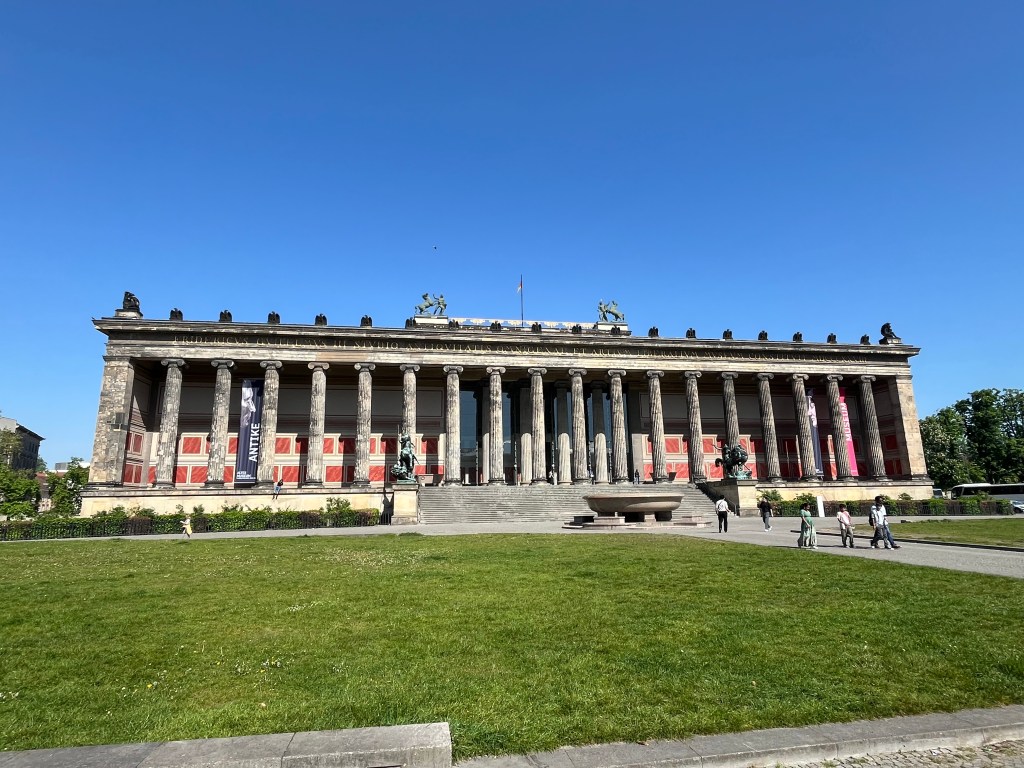
The Altes Museum 
Altes Museum closeup 
The German Historical Museum Annex I took an Uber from my hotel to the Berlin Hbf to wait for my train to Leipzig. The station was full of people on holiday since tomorrow is May Day which, despite its Communist reputation, has always been a German holiday to celebrate labor and springtime.
Since the rest of this post has been languishing in autosave mode for the past ten hours, I deleted the evening portion and will repost shortly.
-
A Day in the old East Berlin: April 29, 2024
Since virtually all of the museums in Berlin are closed on Monday, I decided to head into the heart of the old East Berlin to visit the landmarks of the former capital city of the DDR. From my hotel, it was a short walk to the Unter den Linden U-Bahn station from where I could jump on the U5 to the Magdalenenstraße station to begin my 3.5 km walk to the Alexanderplatz.

U-Bahn station last night 
Waiting for the train 
Inside view When I ascended to the street, Frankfurter Allee, I confronted a far less rarified neighborhood than the one in which my hotel is situated. A short walk took me to the ominous buildings of the dreaded Stasi, short for the Ministerium für Staatssicherheit (Ministry of State Security), which at its peak employed 1% of the DDR’s population. As I’ve often seen in the East, many of the buildings are already decaying. The Stasi complex is expansive, though. I was pleased that the 4-story Stasi Museum was open, so I took the tour. The long-time Stasi chief, Erich Mielke, kept his large office there, and even had a bedroom and shower. As was typical with the first generation of Stalinists, he had barely a high school education and the physiognomy of a peasant. This was the ideal totalitarian type whose innately brutal nature was one that the State could count on to cow the population.
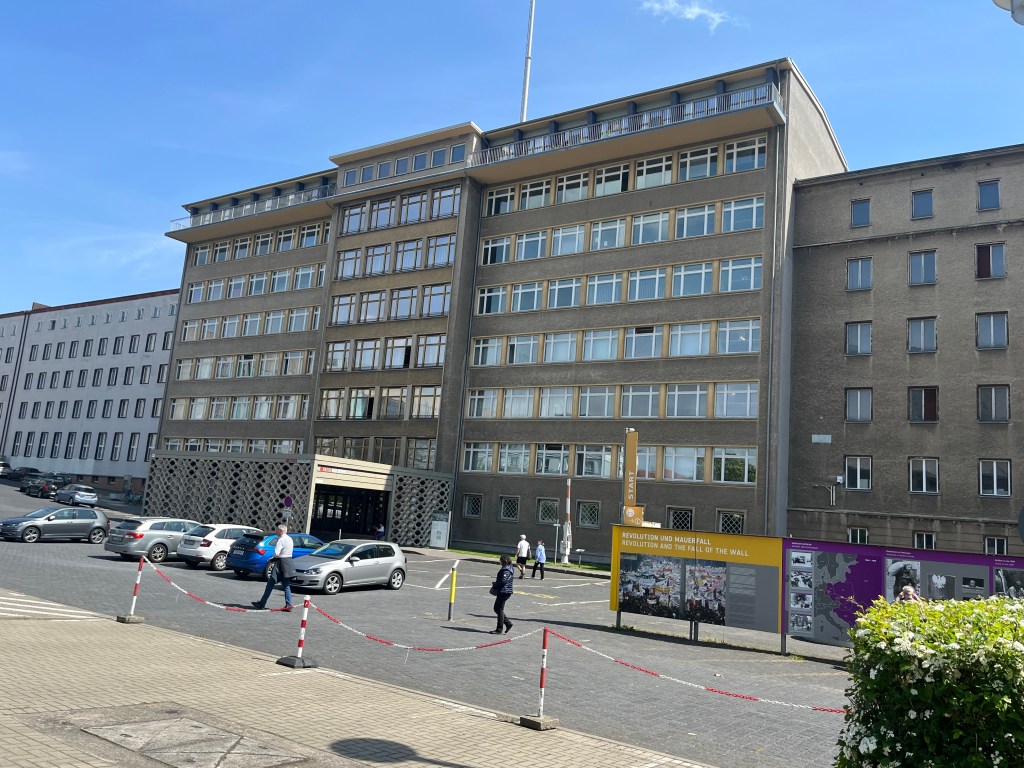
Stasi headquarters 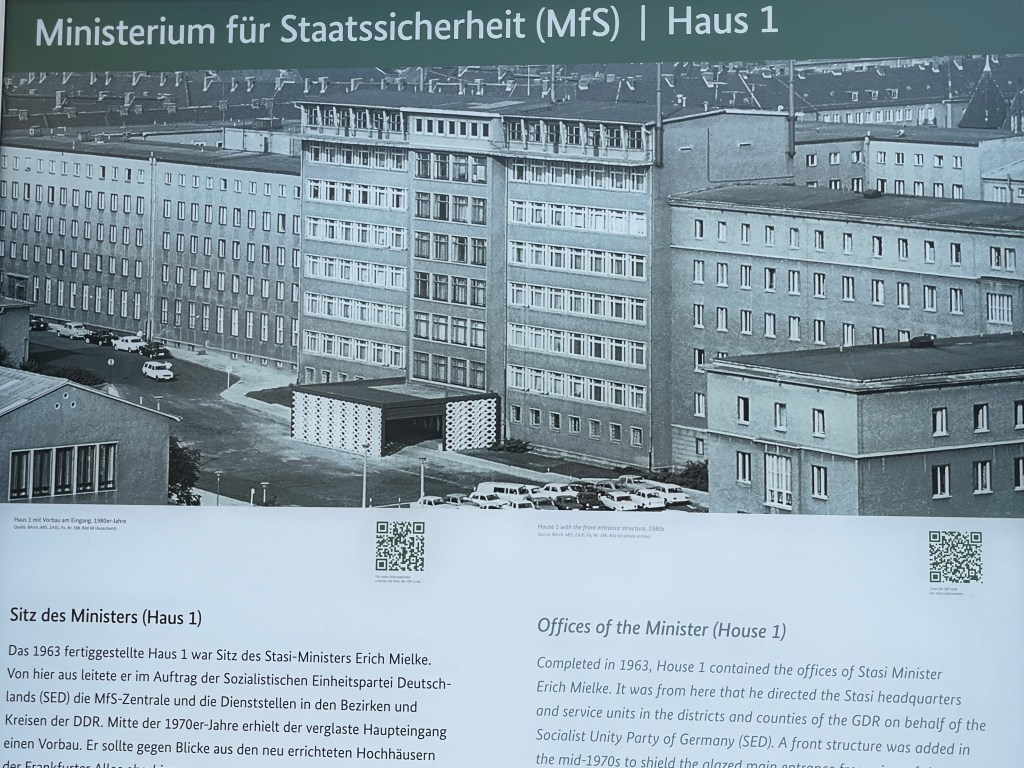

L: KGB; R: Stasi The Sword and Shield of the Party 
Stasi leaders’ curious physiognomies 
Part of Erich Mielke’s office suite 
The moldering Stasi “campus” Milch survived until his boss, Erich Honecker, fled the DDR within weeks of the huge parade celebrating the 40th birthday of the DDR. The new Politbüro ousted him and disbanded the Stasi within weeks of the first democratic election in the East in early 1990.
After leaving the museum, I continued down the Frankfurter Allee towards the Frankfurter Tor, two identical “gates” built in the Stalinist neo-classical style. Shortly past the twin towers is the old Kosmos Cinema, which was the premiere film palace of the DDR and which closed in 1989. It reminded me of a similar theater in Pripyat, the city where the Chernobyl catastrophe occurred in April 1986 and which I saw during my visit there in 2018.
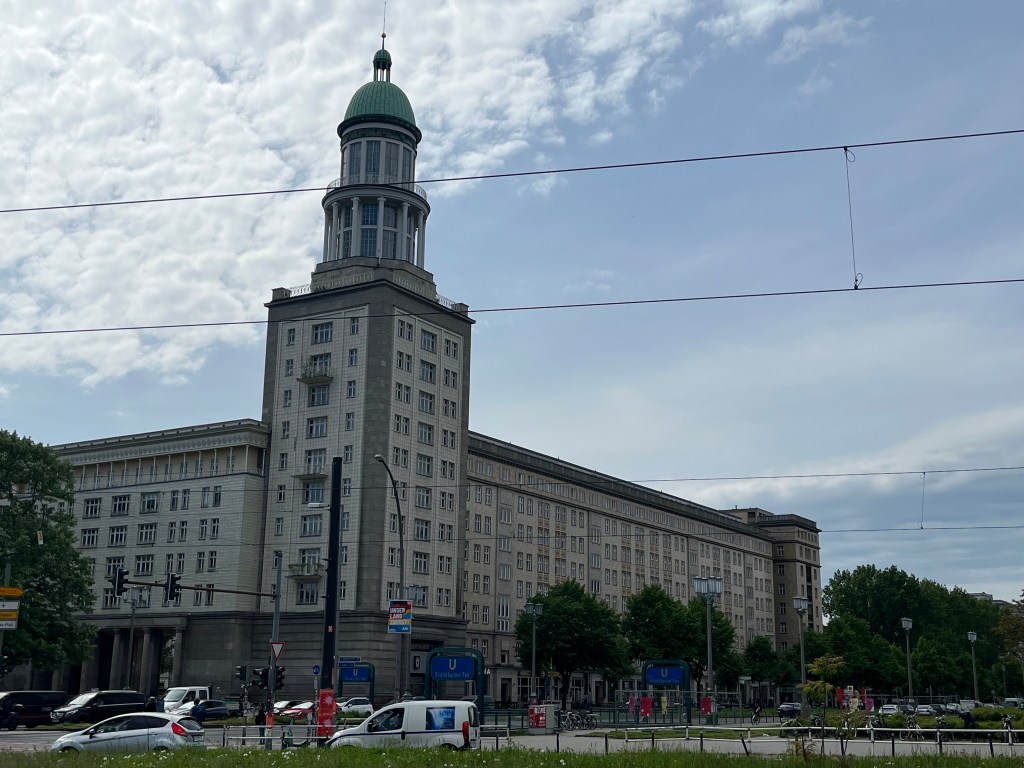
Frankfurter Tor 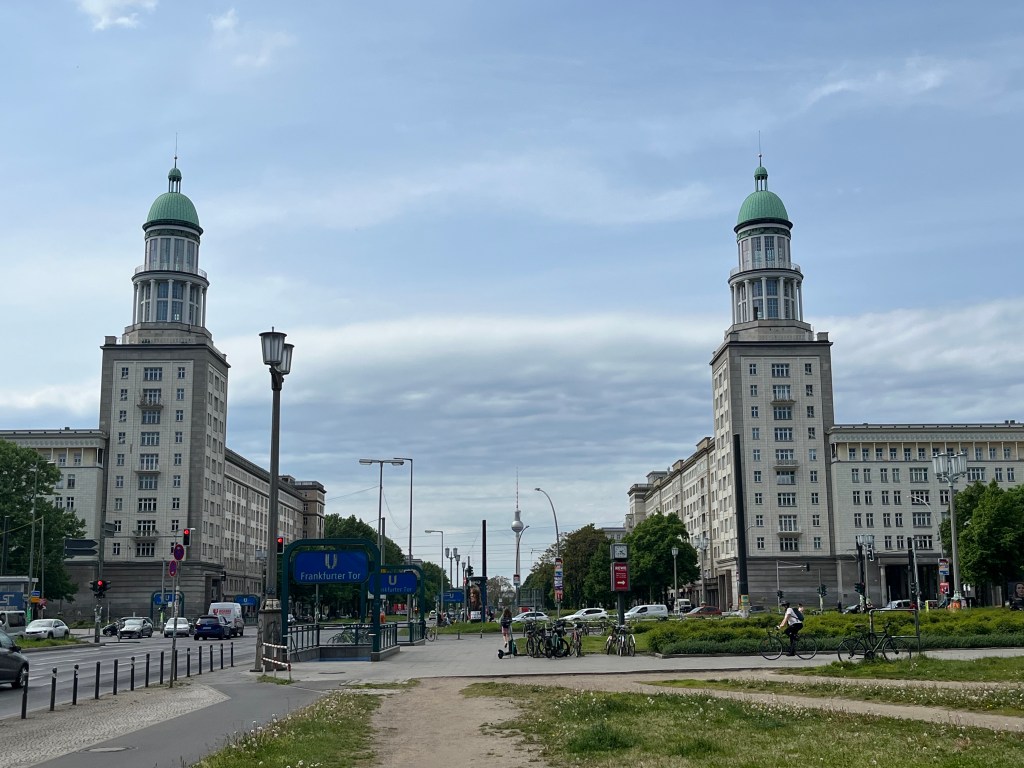
Twin Frankfurter Tor buildings 
Neo-classical Stalinist housing blocks 
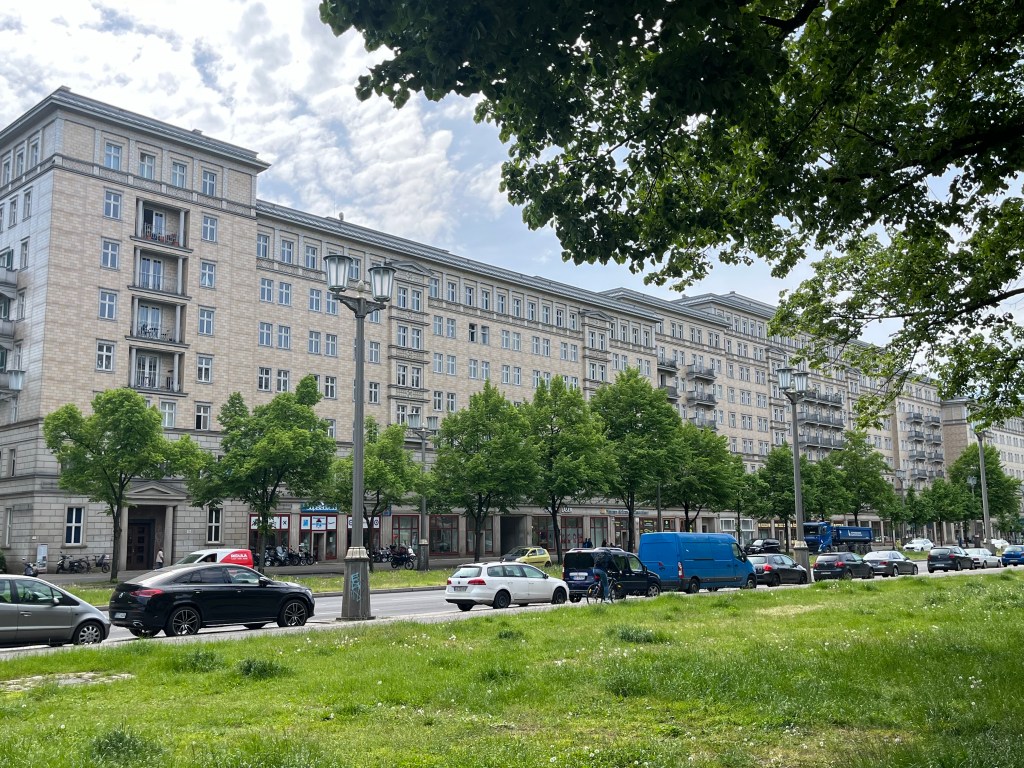
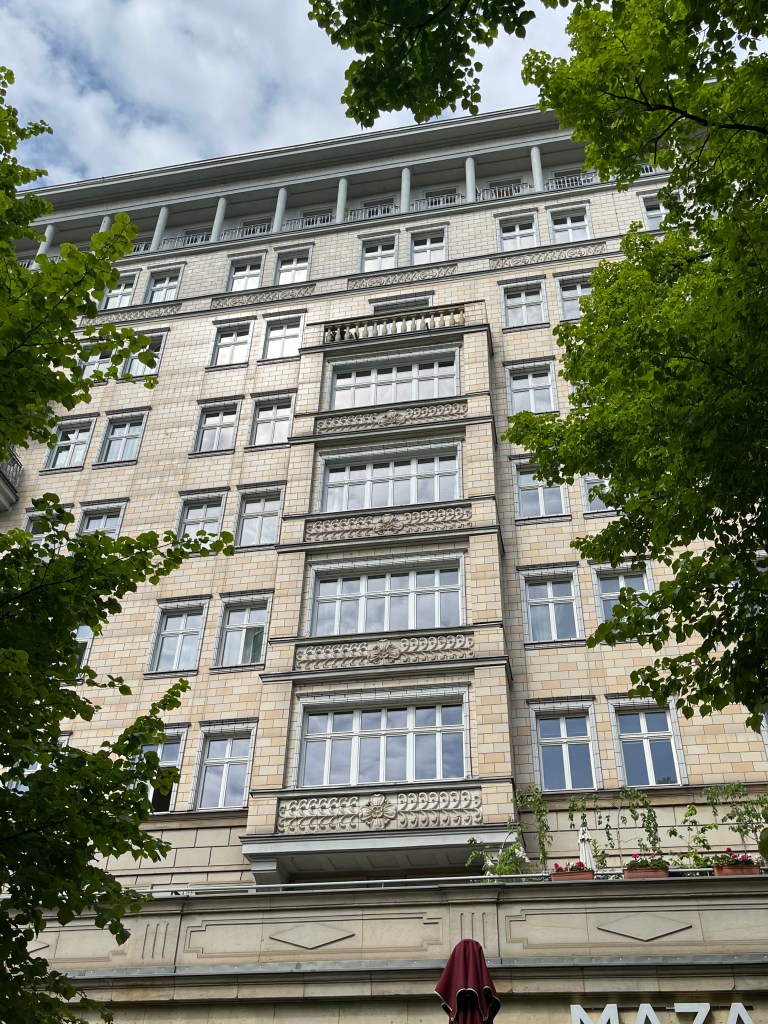
Close-up 
Kosmos cinema The next stop was the Karl-Marx-Allee, also lined with Stalinist and “catch-up” Modernist apartment blocks. Before reunification, there was no tree-lined median strip since it was used for massive May Day and military parades during the Communist-era. Further on, one arrives at another “gate” pair of Stalinist buildings at the Strausberger Platz.

Pariser Kommune refers to the 1871 protocol-communist uprising in Paris 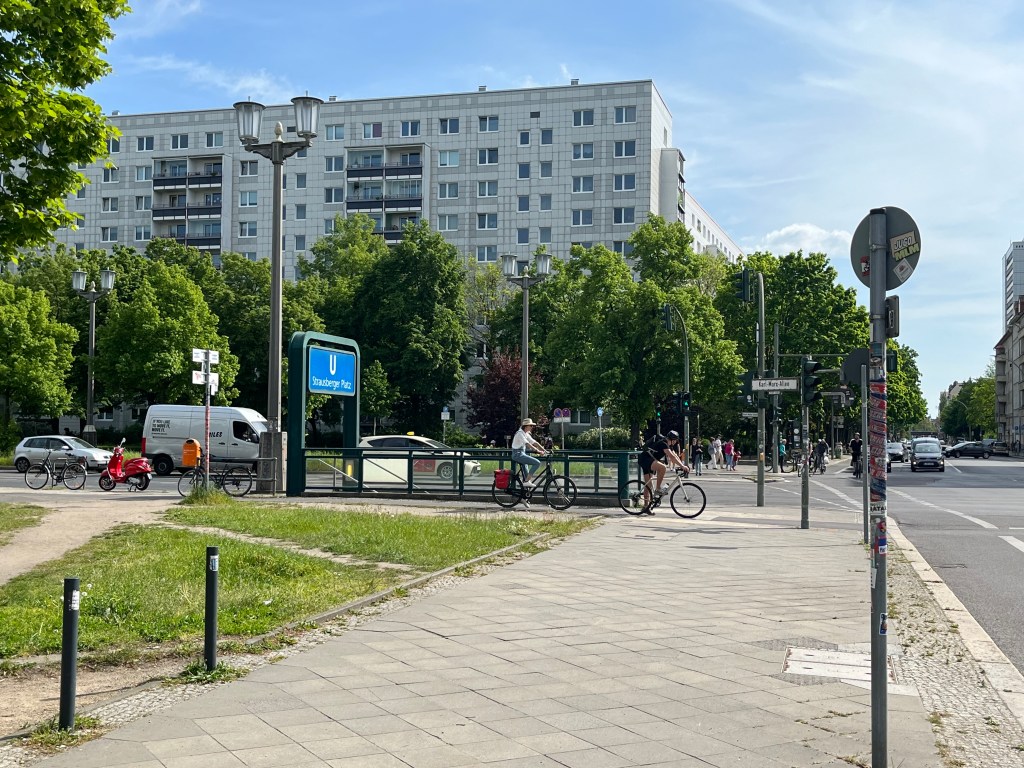
Modernist housing blocks 
Stalinist blocks 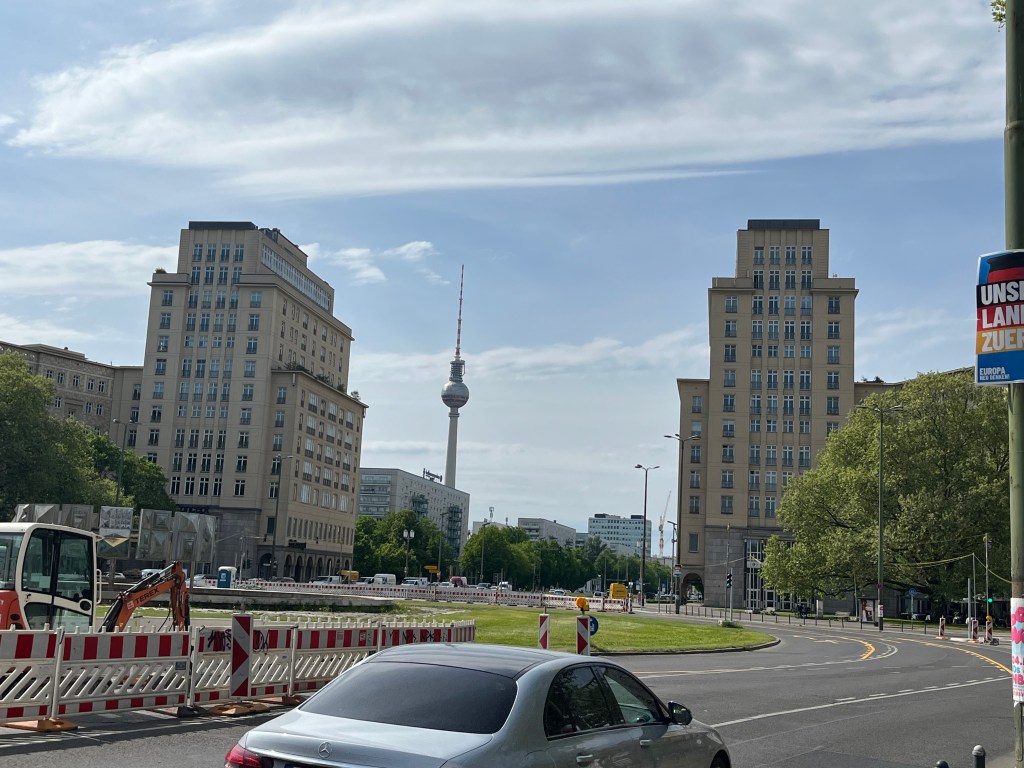
Strausberger Platz Towers 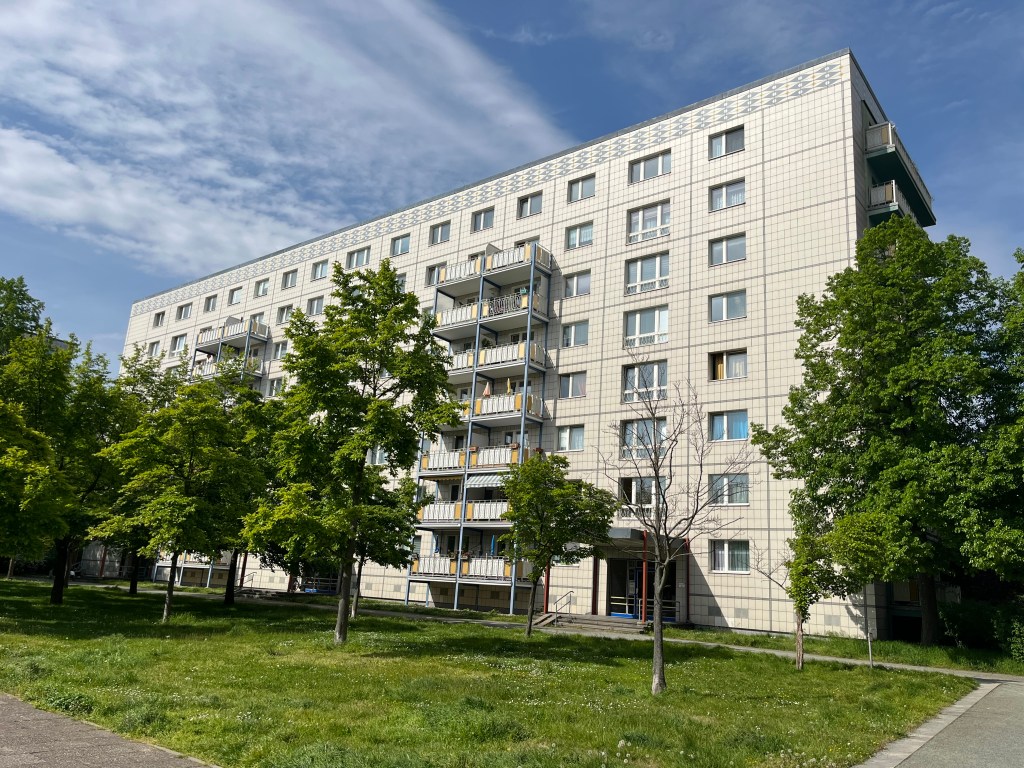
More Modernist blocks Karl-Marx-Allee and Frankfurter Allee are lined with these housing blocks, some of which were prefabricated. I wonder if there’s a certain retro chic attached to these structures. This part of Berlin resembles Moscow and Minsk more than it resembles the western part of Berlin, and is a bit shabby, though perfectly safe.
As I got closer to the Alexanderplatz, I spotted two more interesting buildings: Kino International, another old cinema, and Café Moskau. After some research, I discovered that during the DDR era, there were cafes named after all of the Eastern Bloc capitals, but that only Café Moskau remains.

Kino International 

Café Moskau 
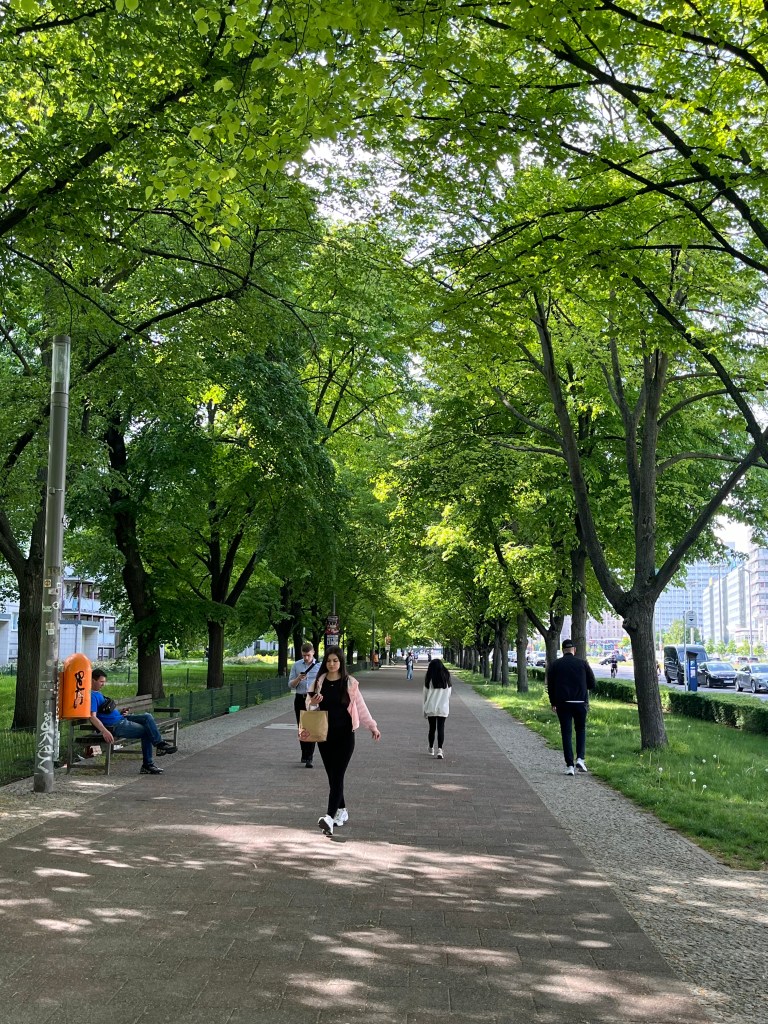
Nearing Alexanderplatz 
Alexanderplatz For a then and now look, this photo is from the 40th anniversary parade of the DDR in October 1989, where Gorbachev was the honored guest. It’s amazing that the dictatorship dissolved a few weeks later. There’s also a short clip of the parade: https://www.youtube.com/watch?v=m_9jqxCVpLI&t=28s

The tribunal on the Karl-Marx-Allee October 1989 This part of Berlin is largely unknown to tourists. It’s still a bit shabby and run-down but well worth exploring.
-
Berlin: Day 4-April 28, 2024
Today I’d hoped to visit both Tempelhof Airport and the Olympiastadion, but the latter had to be postponed since the S-bahn line 7 was out of service.
The S-barn has a circle route which girdles the city, making it easy to visit sites on the periphery. A few stops east of Schöneberg lay Tempelhof. From the station, it was less than a kilometer to what was once the largest airport building in the world. Although decommissioned in 2005, Flughafen Tempelhof is being redesigned as an office and creative space by the Berlin City government.
One approaches the airport by way of an immense playing field, where the Prussian Army once drilled. A 2015 referendum passed that permanently dedicated this acreage for recreational use. While I was walking to the terminal building, I passed runners and cyclists.
The vast buildings loom in the near distance. The former airport has a larger footprint than Central Park. The following photos give a sense of its immensity. 2024 is also the 75th anniversary of the Berlin Airlift, when the US and UK delivered millions of tons of supplies after the Soviets cut off access from 1948 to 1949.
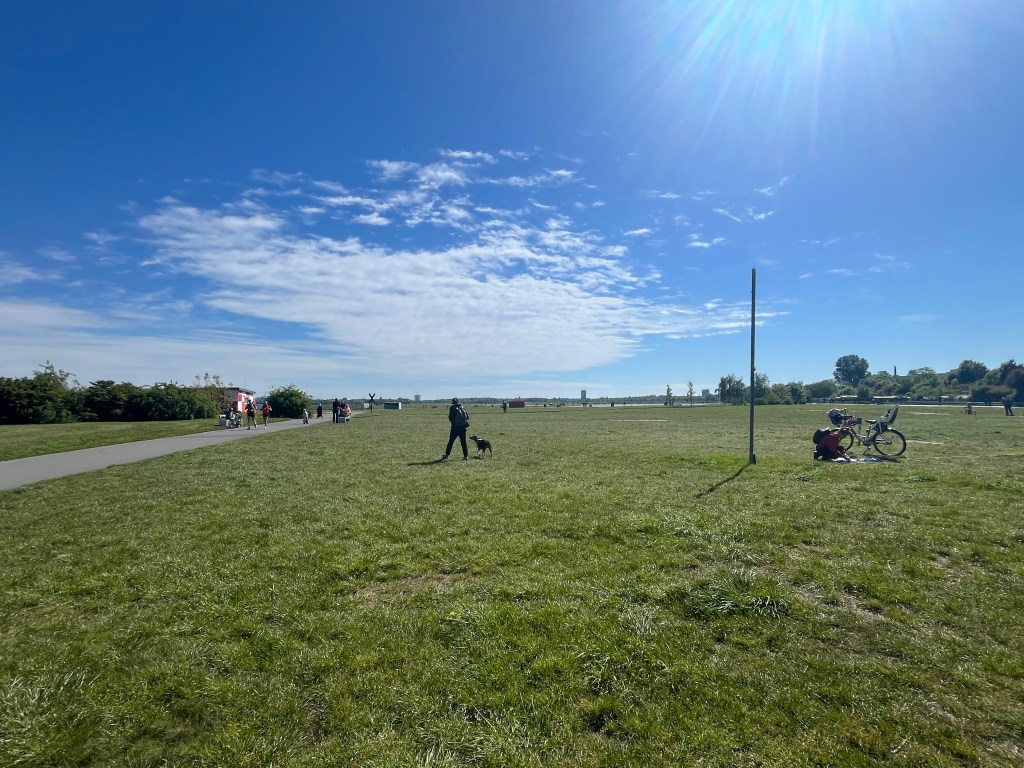
Tempelhof recreational space 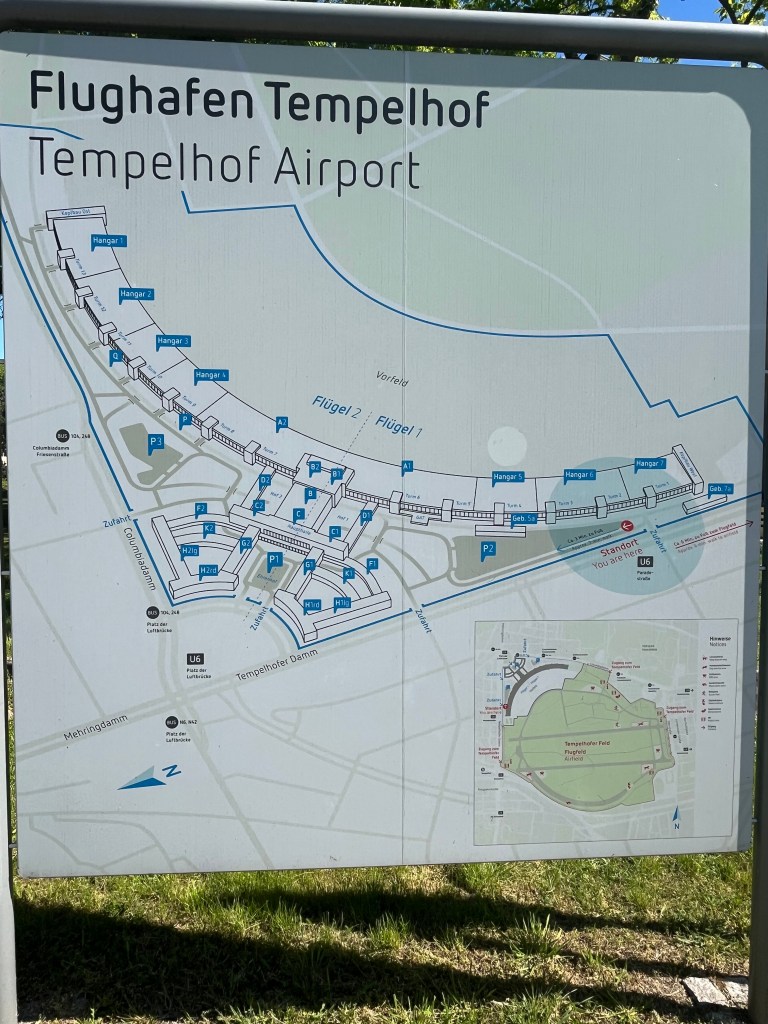
Map 
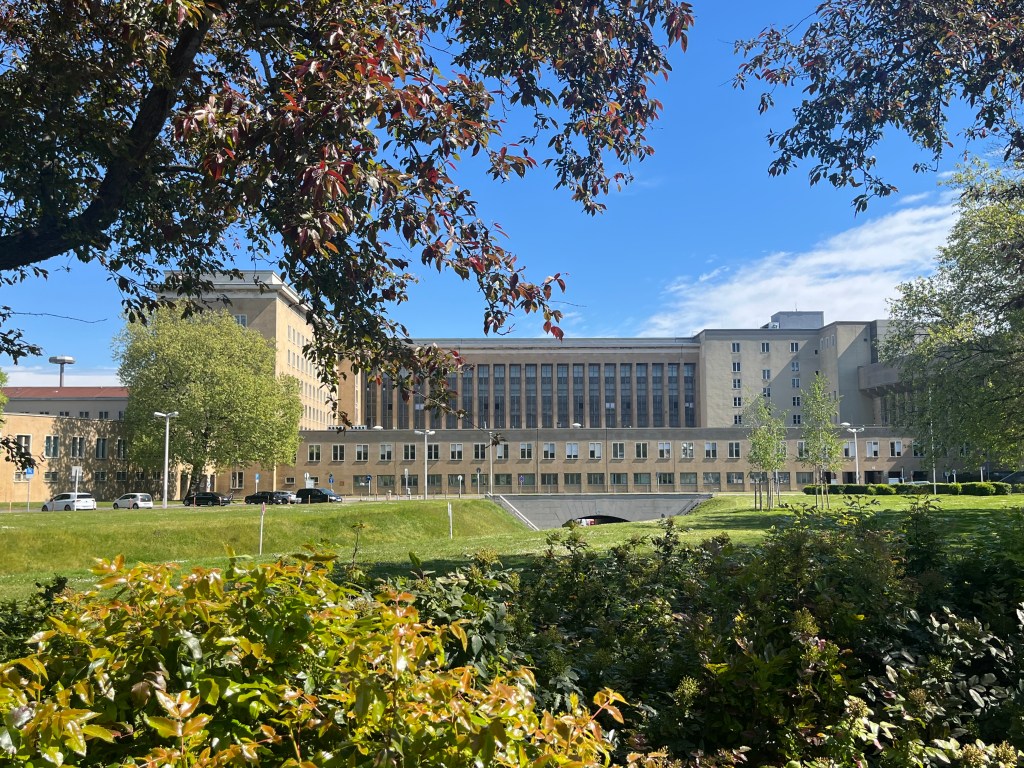
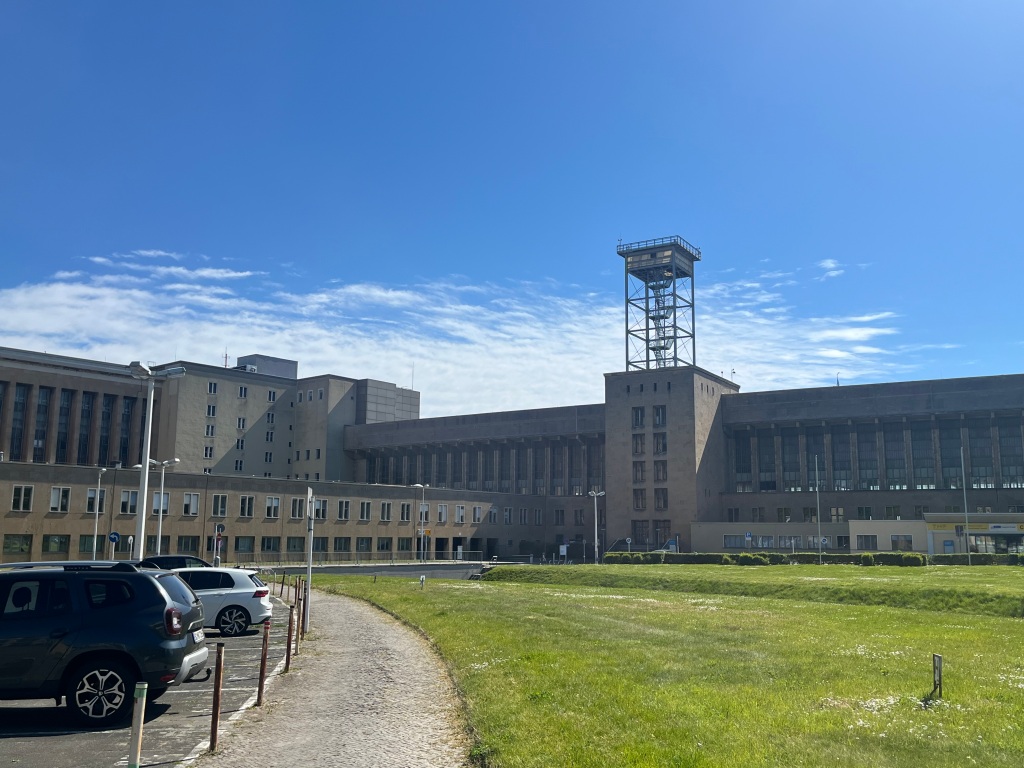



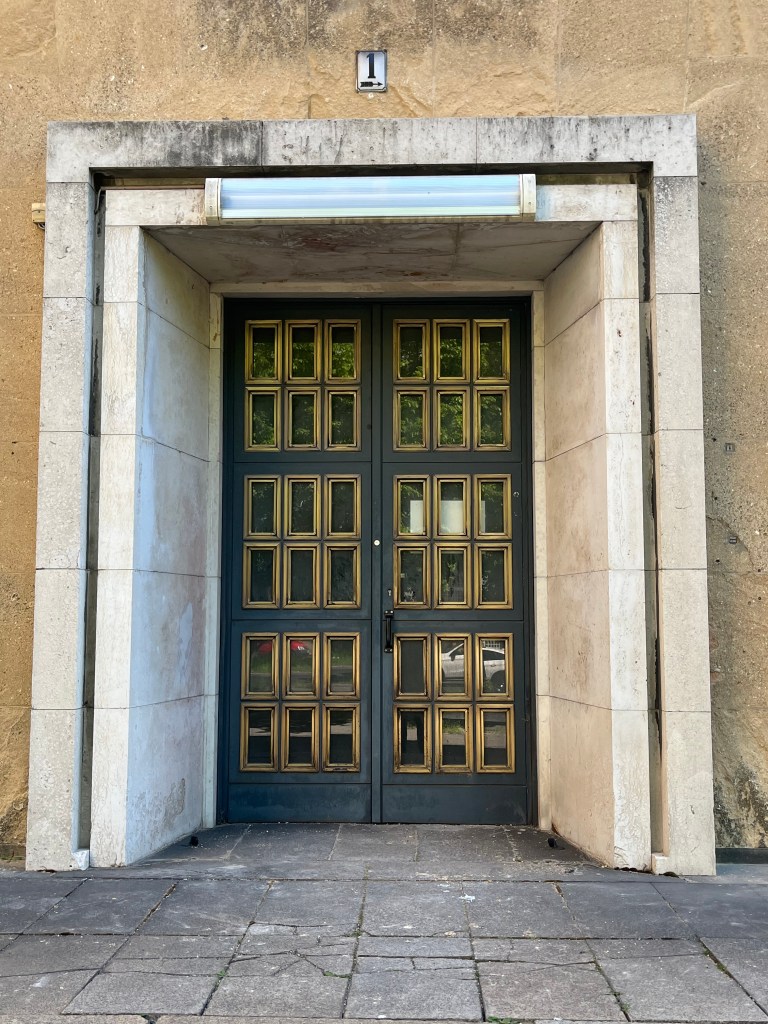
Doorway detail 
NS insignia 
Nazi eagle 
Berlin Airlift 
Main entrance 

Interior lighting detail 

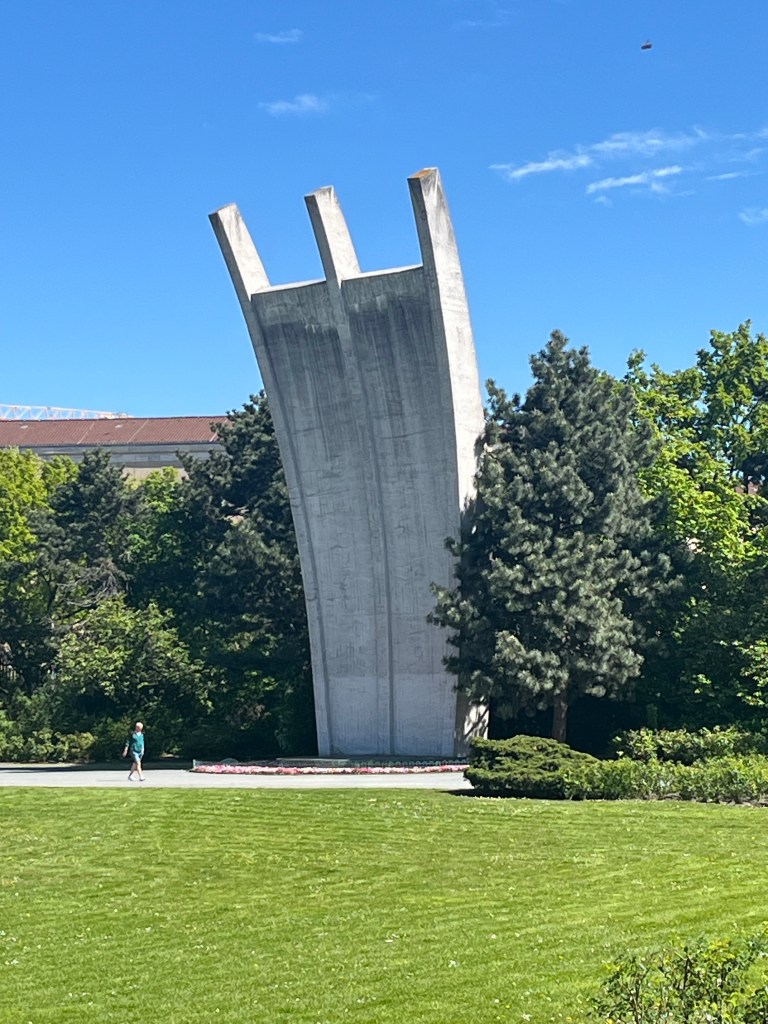
Berlin Airlift Memorial Unfortunately I wasn’t able to tour the interior since tickets had to be ordered online and my visit was spur of the moment. Nonetheless, there was a fine photo display in the visitor’s center showcasing the building’s history and the hall to the WC was open, so I was able to get a photo of the original ceiling lights.
There are only a few examples of Nazi architecture remaining in Berlin: Tempelhof Airport, Olympiastadion and the Reich Air Ministry Building, which I featured in Friday’s post.
Since the S-Bahn line to Olympiastadion was out of service, I made my way back to my Airbnb and packed up and headed for Hotel Luc, in the center. After check-in I walked around the Unter den Linden again, venturing up to the TV Tower and eventually to Alexanderstraße, where I took some pictures of some East German apartment blocks, which have that uniformly decrepit look. On Monday I plan to take the U-Bahn deep into the old Stalinist quarter and walk back to the TV tower along Karl-Marx-Allee.

The French Huguenot Cathedral 
View 2 
Humboldt Forum, built by Frederick the Great 
Royal Seal 
Forum Interior 
Berlin Cathedral 
French Cathedral dome 
French Cathedral entrance 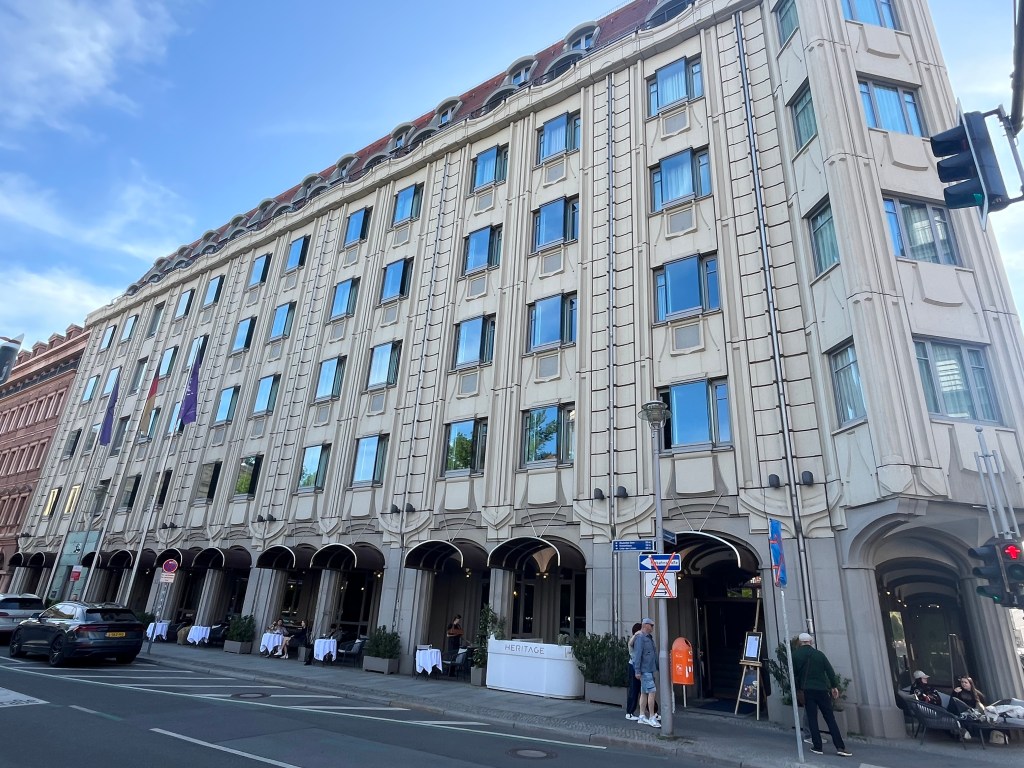
Hotel Luc Unter den Linden becomes Karl-Liebnecht-Straße near the TV Tower, named after a 1920’s Communist leader. The neighborhood becomes a bit shabbier at this point. The tallest building is the Park Hotel, which was built during the DDR era for visiting dignitaries from the USSR and other Warsaw Pact countries.
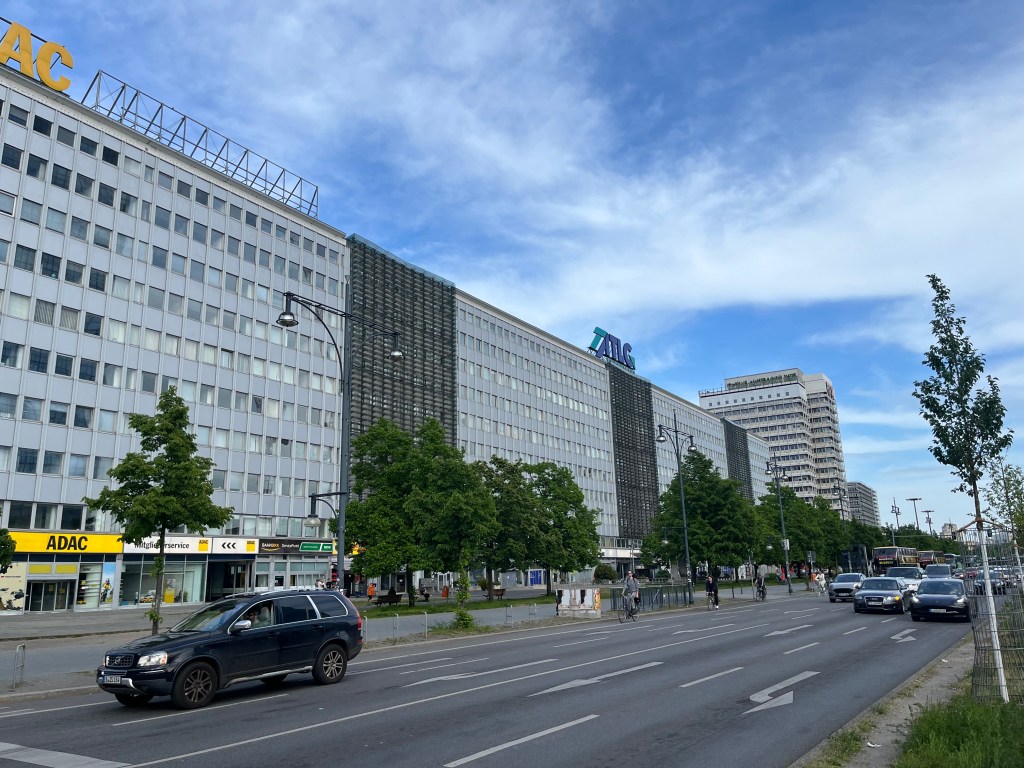
Communist housing block 
Another block 
The Park Hotel Finally, I headed over to Museum Island, where I plan to visit the massive art museum and the German Museum of History. Sadly, the famous Pergamon Museum is closed for remodeling.

1871 German Art Museum 
Closeup 
The Colonnade 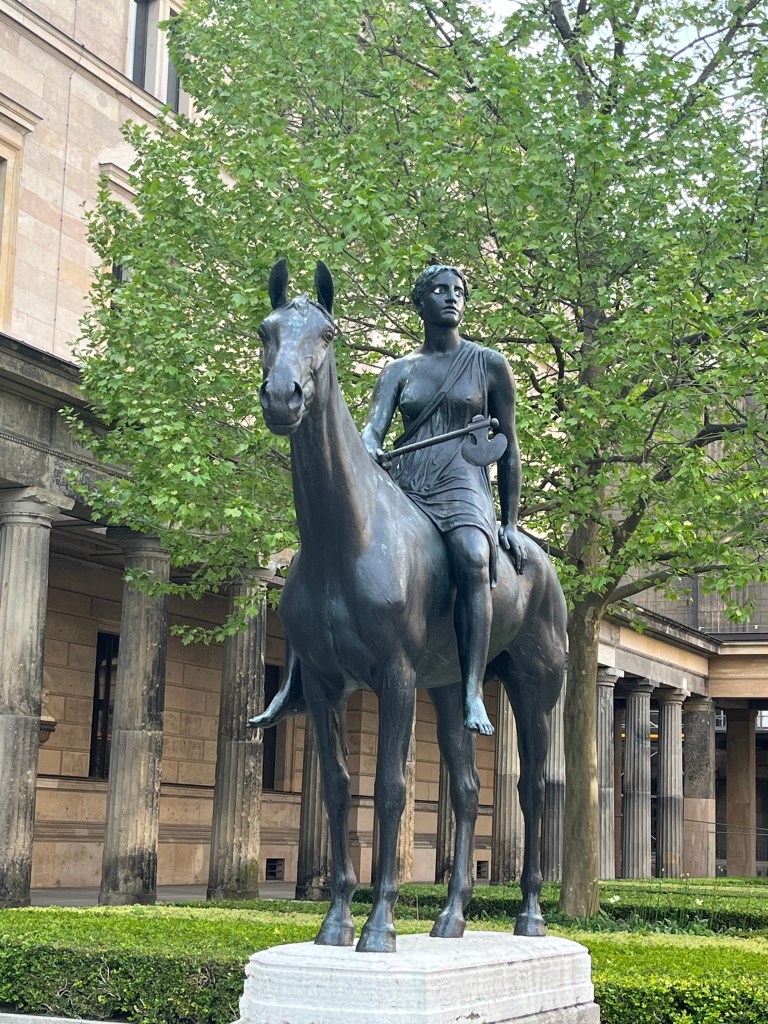
Equestrian statue 
Garden & colonnade view 
Other museums I walked almost 12 miles on Sunday and hadn’t had much to heat, so I grabbed dinner and then headed back to the hotel for a deep sleep.
-
An afternoon in Potsdam: April 27, 2024
Although I had planned to visit Kustrin, just over the border in Poland, I decided to stay in Berlin and take the train 30 minutes’ west to the city of Potsdam. I wanted to visit Frederick the Great’s Sans Souci, which is now written as Sanssouci.
As our guide explained during yesterday’s bike tour, Frederick the Great (Frederick II) wanted to be outside of Berlin owing to his obsession with privacy. He let his younger brother, Heinrich, live in the two city palaces. Young Frederick is alleged to have had two intimate male friends, one of whom was beheaded by his father while he was forced to watch. Although Prussia was a garrison state during his father’s reign, young Frederick preferred more rarified pursuits, including music, philosophy and art. He was a close friend of Voltaire, from whom he acquired his humanistic character. Nonetheless, he developed notable military prowess after becoming king, and after a series of successful military campaigns, especially against Austria, he established Prussia as a major European power and greatly expanded his crown lands.
His father forced him to marry Elisabeth Christine of Brunswick-Beven, but they separated early and rarely saw one another. They never had children.
From the Potsdam Hbf, I took the tram to the vast Sanssouci Park, which covers 300 hectares. There Frederick built his favorite palace, Sans Souci, where he is buried. It was completed in 1747 and has been referred to as the Prussian Versailles. In 1769, he completed a much larger palace, the Neues Palais, although Sans Souci was his favorite. He also built massive gardens dotted with classical statues, a huge Orangerie and other large buildings, including the currently closed Chinese House. The forest also has a botanical garden and dozens of pathways, so it’s not hard to get lost.
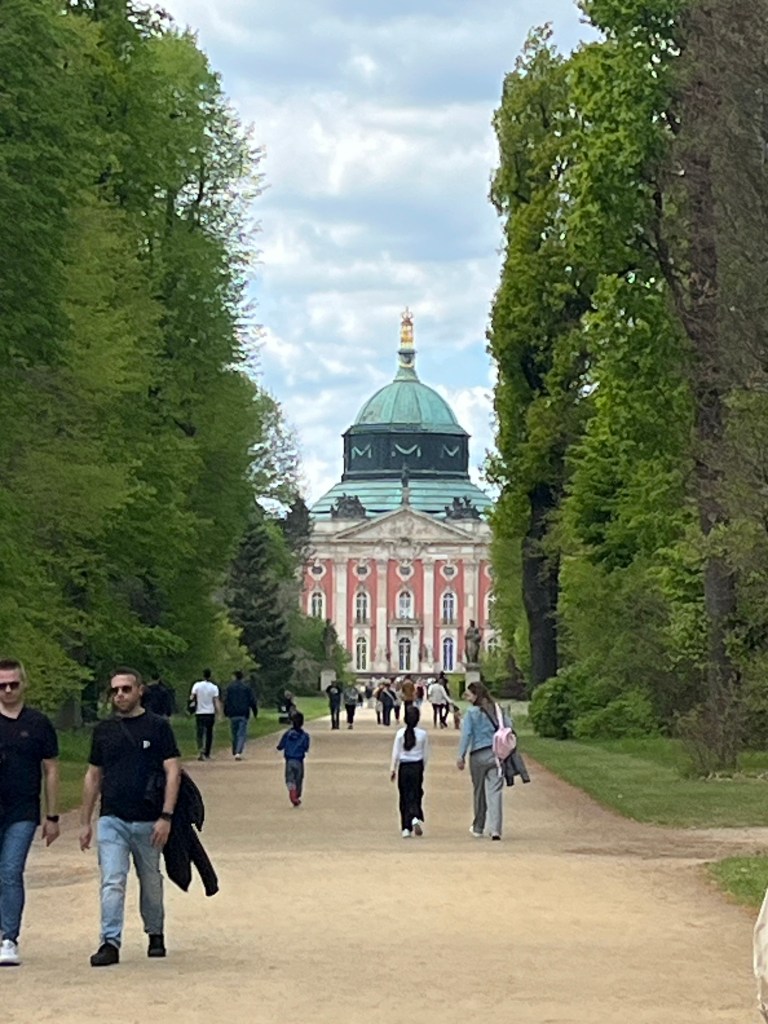
Approaching Neues Palais from the park 
Rear view of the Palais 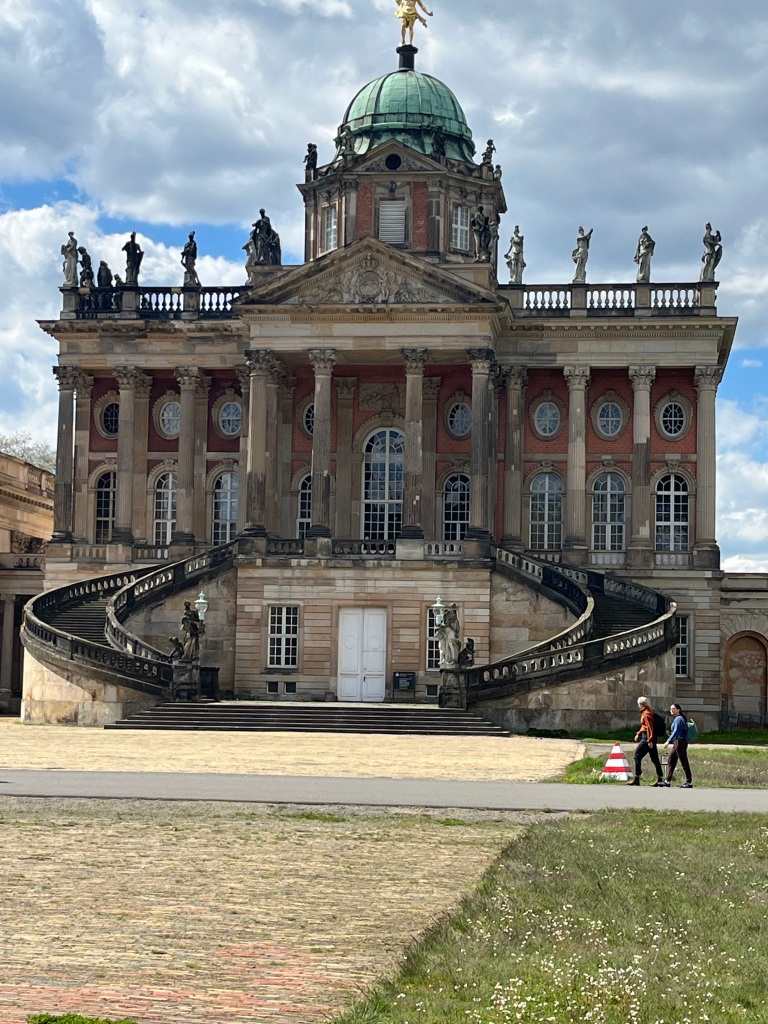
One of two identical entry rotundas 
Main entrance of Neues Palais 
The southern rotunda 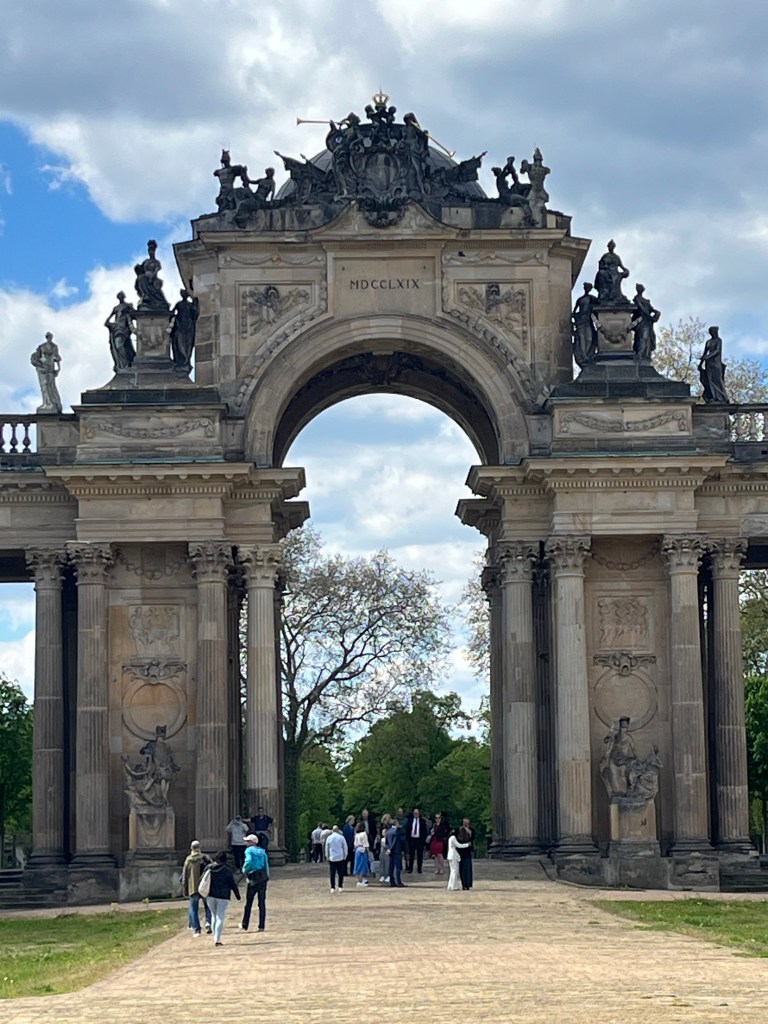
The grand arch entrance Sans Souci is a long walk from Neues Palais. There are other notable sites along the way, including the Orangerie and a number of statues. I imagine today’s pathways were originally trodden by Frederick and his courtiers on horseback.

Map of the Royal Park 
Orangerie 
Copper classical archer Finally I arrived at San Souci itself. In the front of the palace are immense gardens and a fountain. I had hoped to see the interior, but timed reservations had to be made in advance.
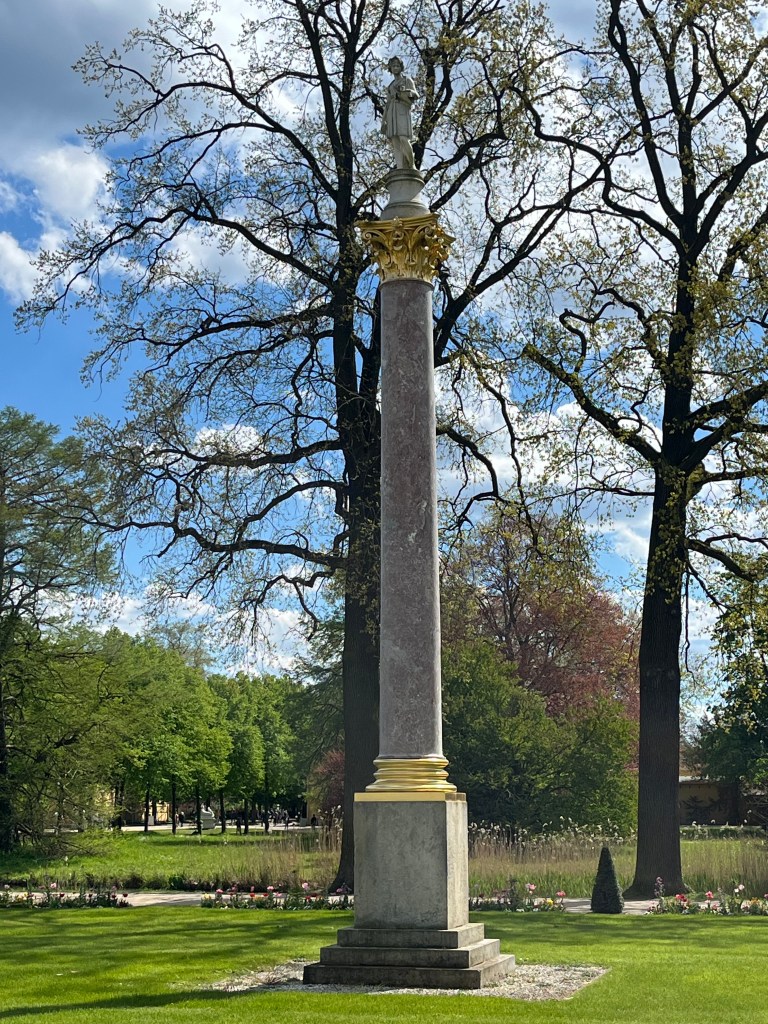
One of many classical statues 
The hilltop Sans Souci 
Tulips 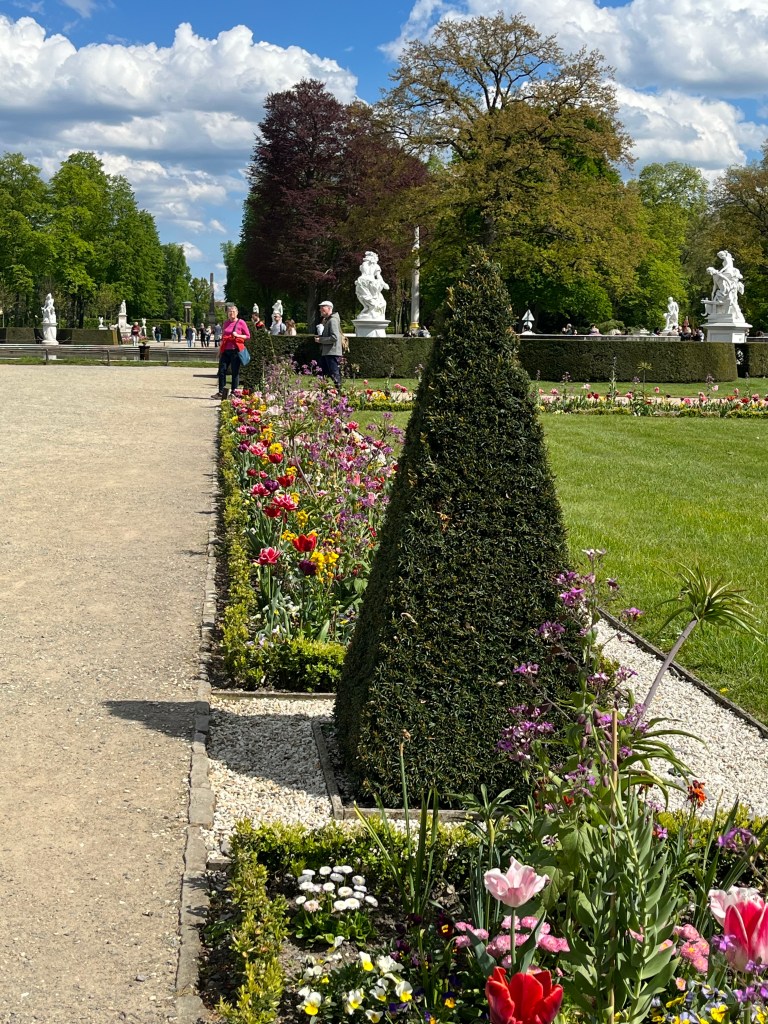
Part of the front gardens 
Looking towards Potsdam over the pool 
Iconic view of the palace front 
The rear colonnade 
Looking toward the Roman Baths from the rear plaza After spending about thirty minutes enjoying the palace grounds, I walked down a hundred steps to the broad pathway leading to the Luisenplatz, where visitors were enjoying the spring afternoon eating al fresco. From there I grabbed a tram back to the Potsdam Hbf and was lucky to jump on the S-1 back to Schöneberg just as it arrived.
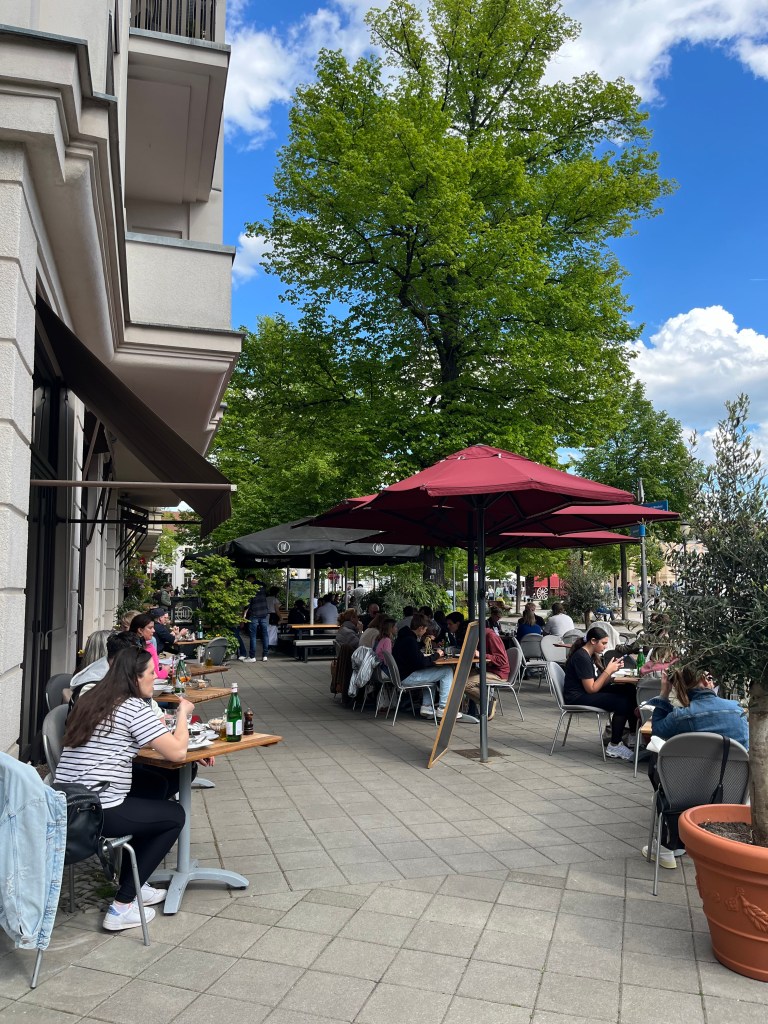

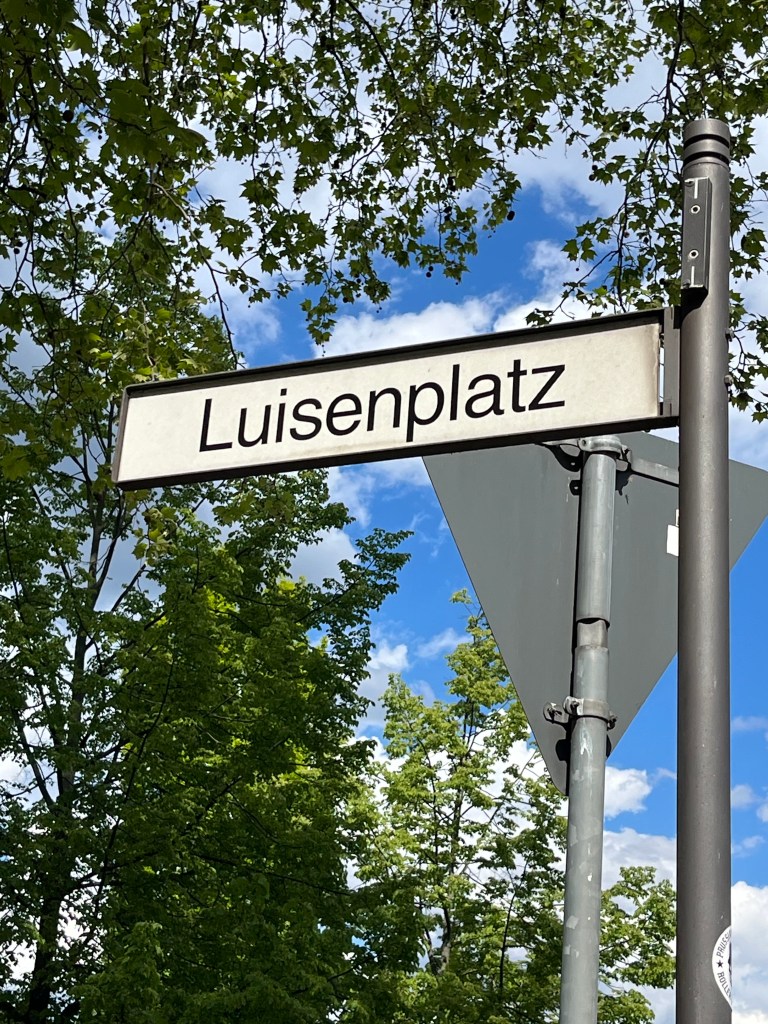
Tonight I’ll research some local restaurants. Tomorrow I plan to visit Tempelhof Airport and the Olympiastadion, two structures that weren’t destroyed during the WW2 Allied bombing campaigns.
-
Berlin Walking & Biking Excursion: April 26
Since the weather had improved, I decided to walk to the center and kill some time before the 2:00 pm three-hour bike tour. With its broad boulevards and landmarks, Berlin is pretty easy to navigate; nonetheless, it’s a huge city.
Notably, Berlin is a very green city. About 2 km in, I was in the vast Tiergarten, where I caught some glimpses of the Victory Column. Later, Anton, our bike tour guide, informed us that the original column was near the Reichstag, but Hitler moved it farther away to be a focal point on the new East-West Axis, which his court architect, Albert Speer, designed. He also built four buildings with tunnels to go under the boulevard to get to the column. Our guide pointed to the many bullet holes left over from the street fighting during the Battle of Berlin in April 1945 as the Soviet forces fought their way into central Berlin.

Tiergarten path 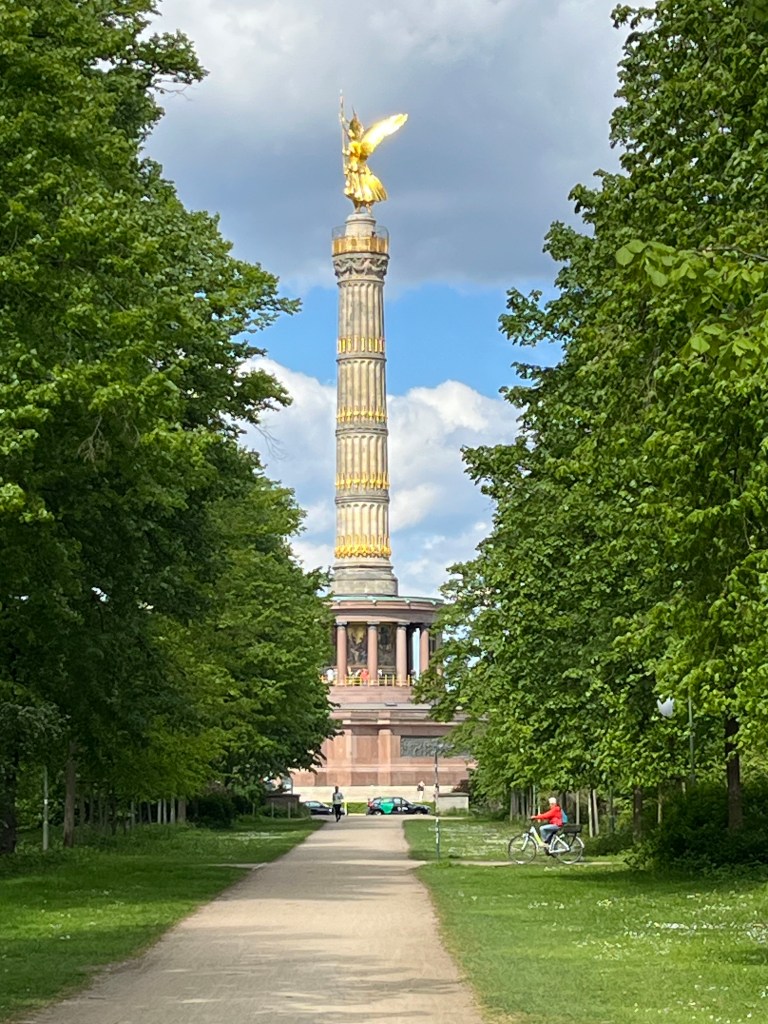
Victory Column from Tiergarten 
Victory Column From the Victory Column I continued east towards the Brandenburg Gate, passing a heavily policed pro-Palestinian demonstration near the Reichstag. I also passed the Bellevue Palace, where the largely unknown Bundespräsident lives. It was formerly the palace of Frederick the Great’s younger brother Heinrich, who held sex parties there in the 18th c.

Bellevue Palace 
Close-up 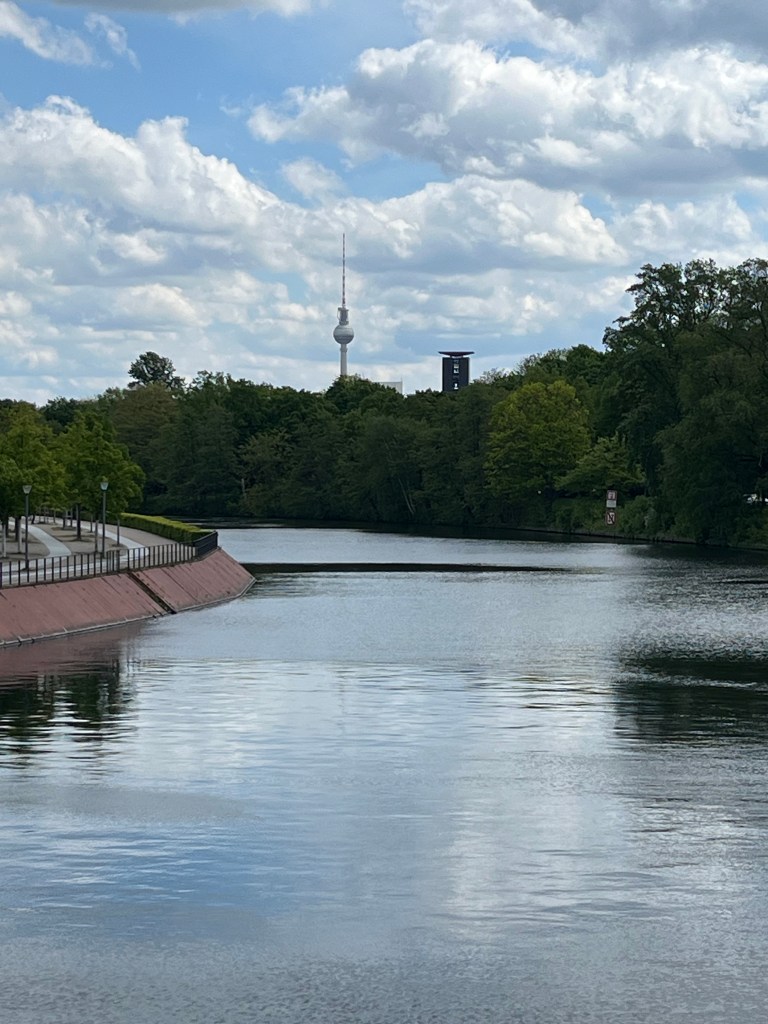
River Spree looking east 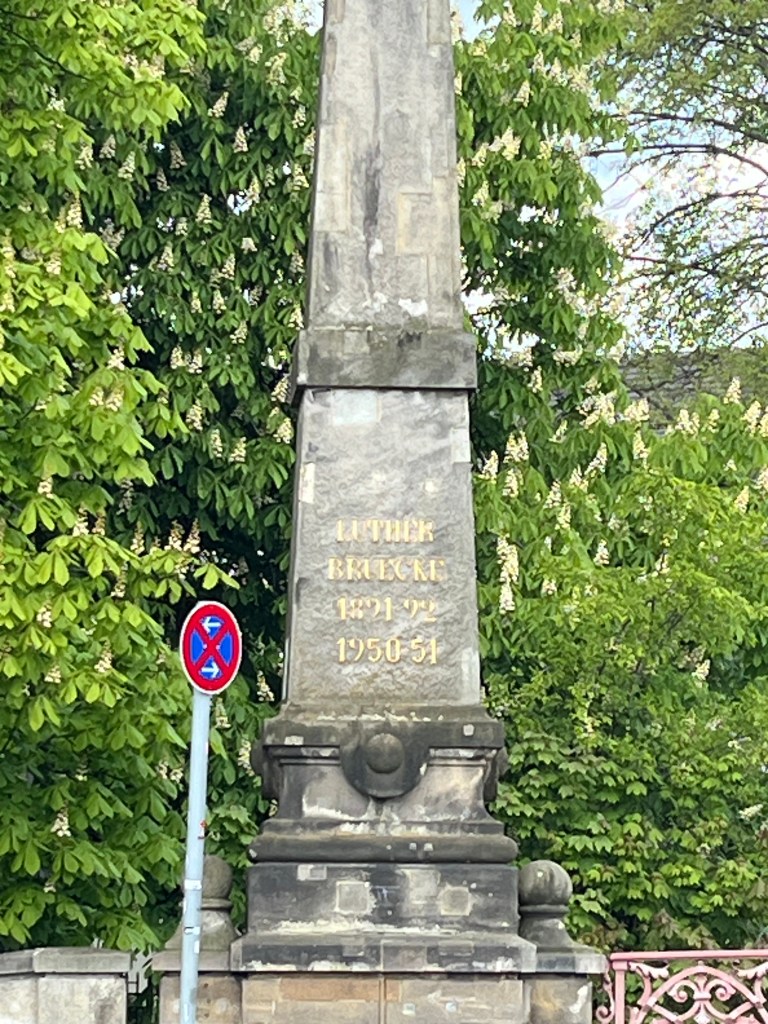
Martin Luther Bridge over the Spree 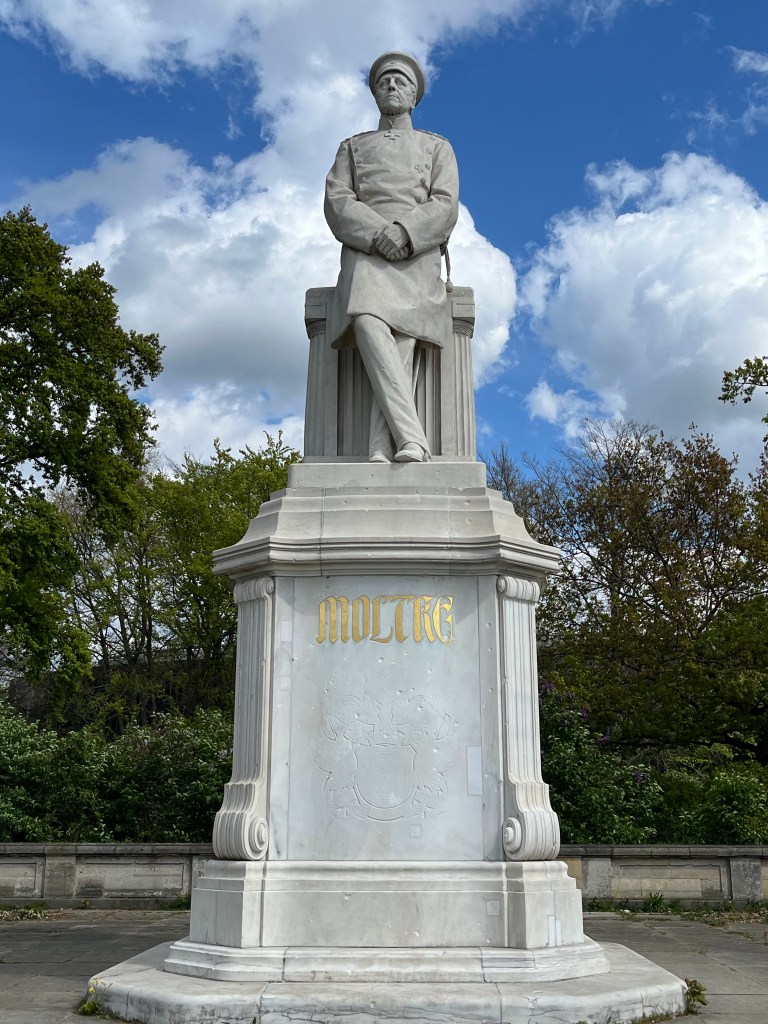
Field Marshal von Moltke from WWI 
Demonstration As I neared the Brandenburg Gate, I realized that the former DDR (Deutsche Demokratische Republik) retained the monumental buildings of the old Germany. Although 70% of the city was destroyed by the Anglo-American air raids and the Red Army artillery in the Battle of Berlin, the Germans have managed to rebuild all of the lost buildings. The Berlin Wall encircled West Berlin and even the Brandenburg Gate was in East Berlin. The equestrian statue of Frederick the Great, Humboldt University, the State Opera and the Neue Wache are all situated along the Unter den Linden. During the DDR era, goose-stepping National People’s Army honor guards were a regular sight at the Neue Wache, which used to have an eternal flame to the memory of “victims of Fascism and militarism”. Videos are easily found on YouTube.

Russian Embassy gate 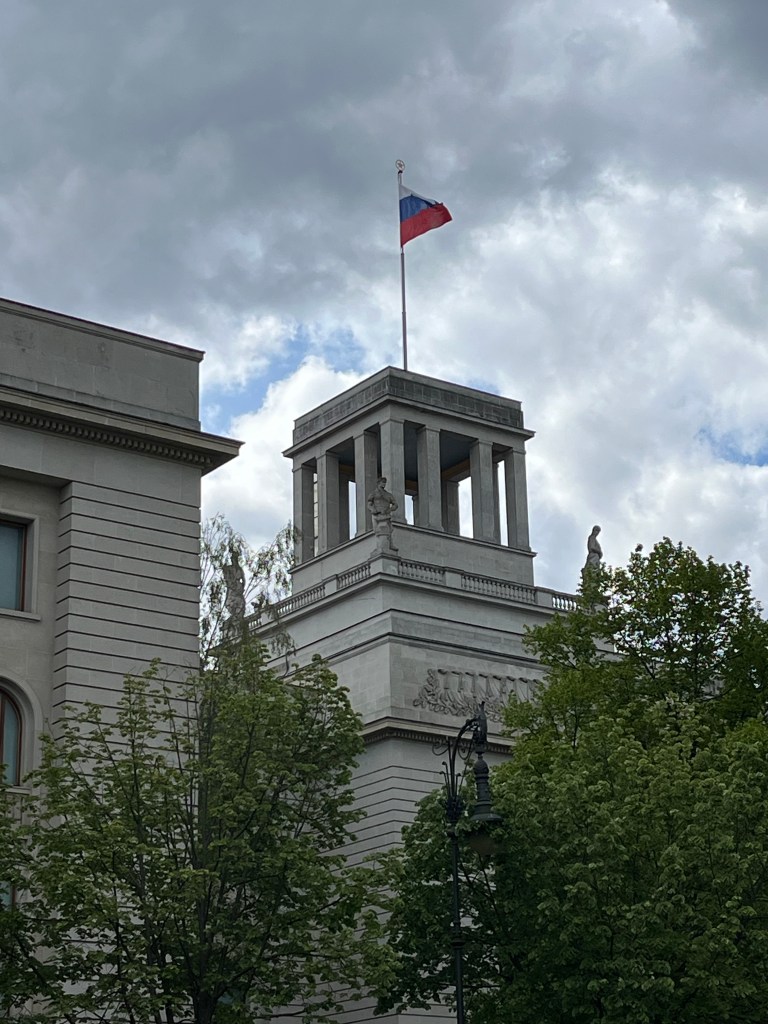
Russian Embassy 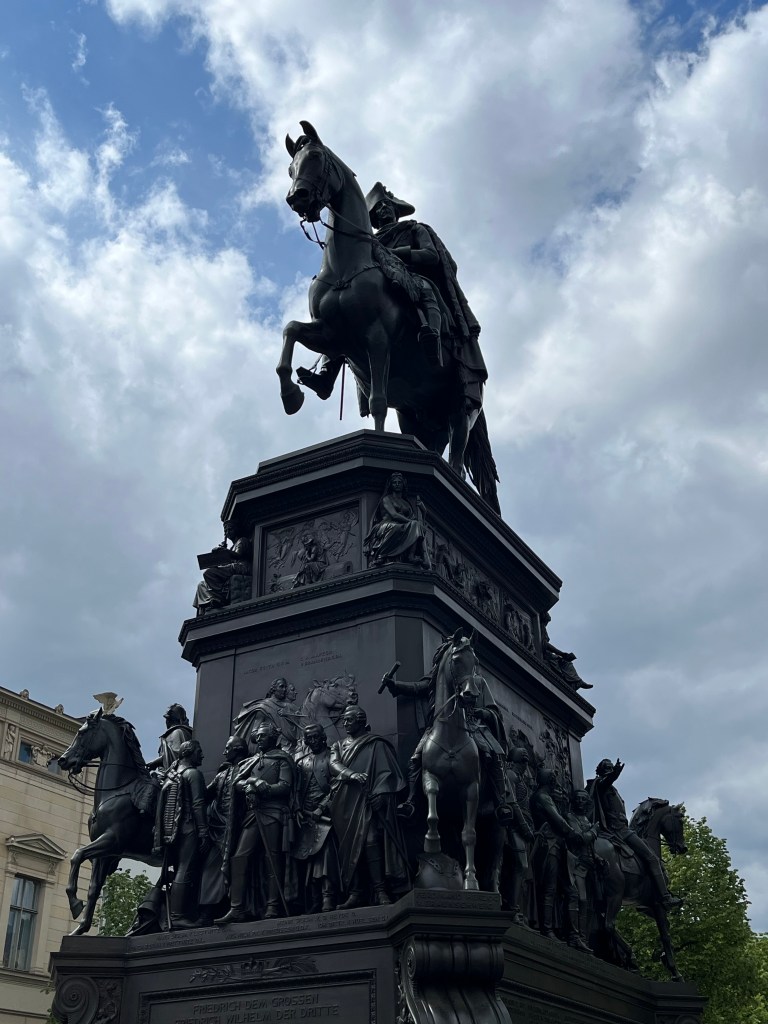
Frederick the Great 
Detail 
Humboldt University 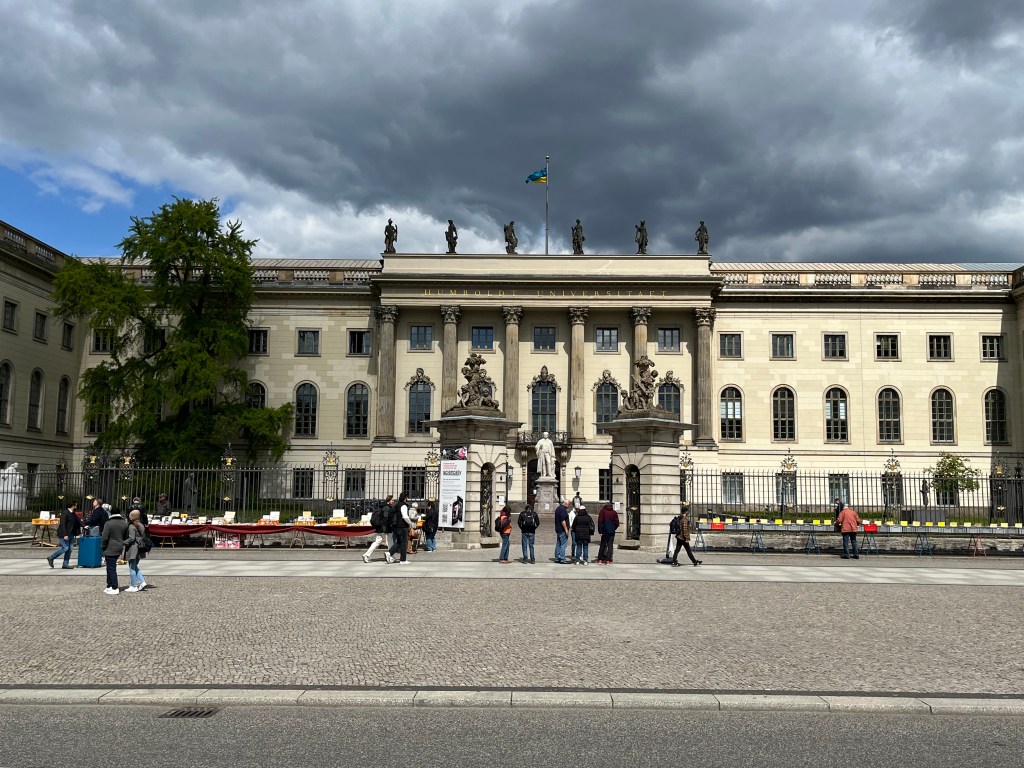
Humboldt University 
18th c. Berlin Palace of Frederick the Great, recently rebuilt for €800 million 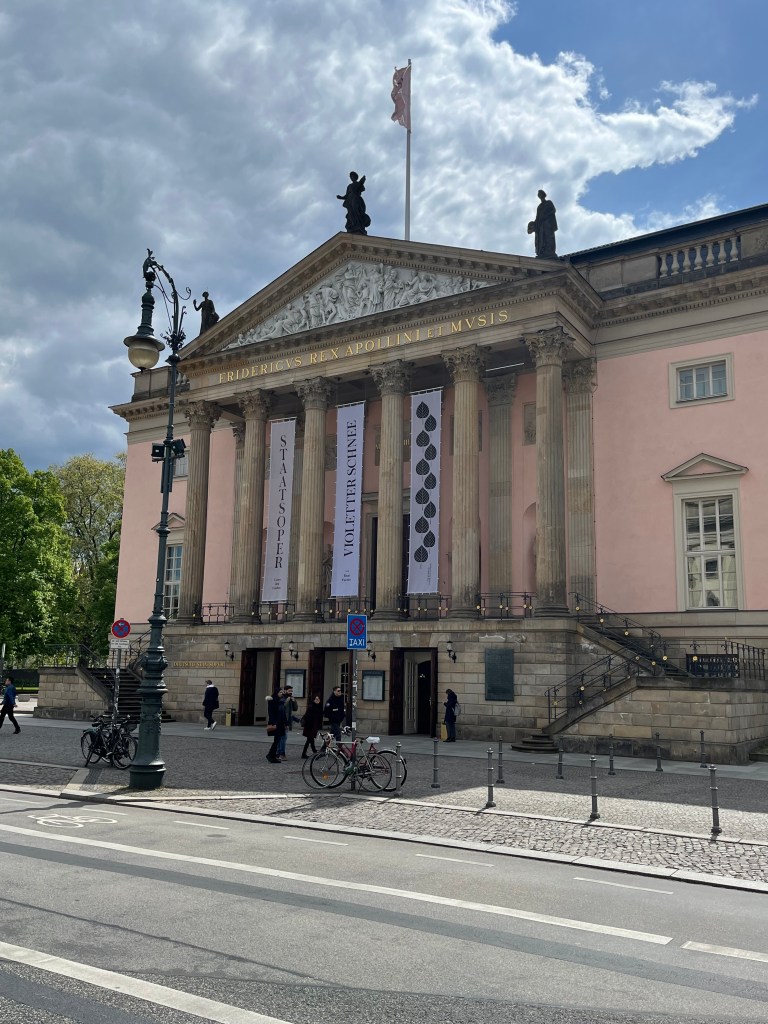
Berlin State Opera 
Interior of Neue Wache 
Neue Wache 
Unter den Linden looking East 
The Protestant Cathedral 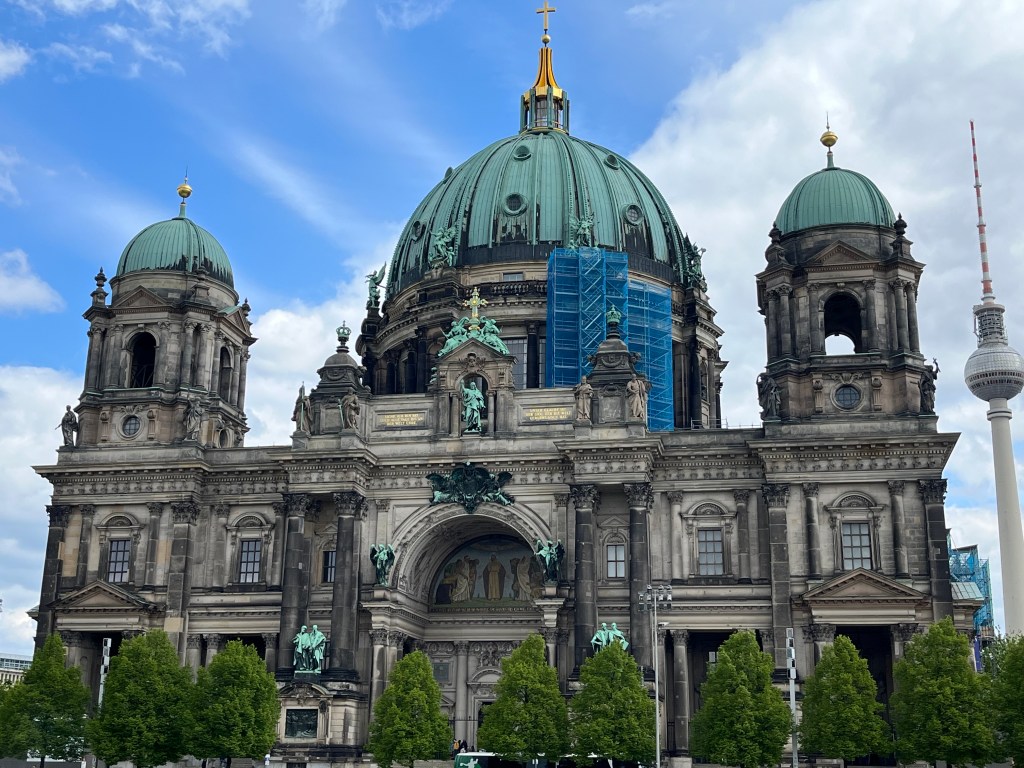
Close-up 
Humboldt University Museum 
The DDR TV tower, over 1,000’ tall 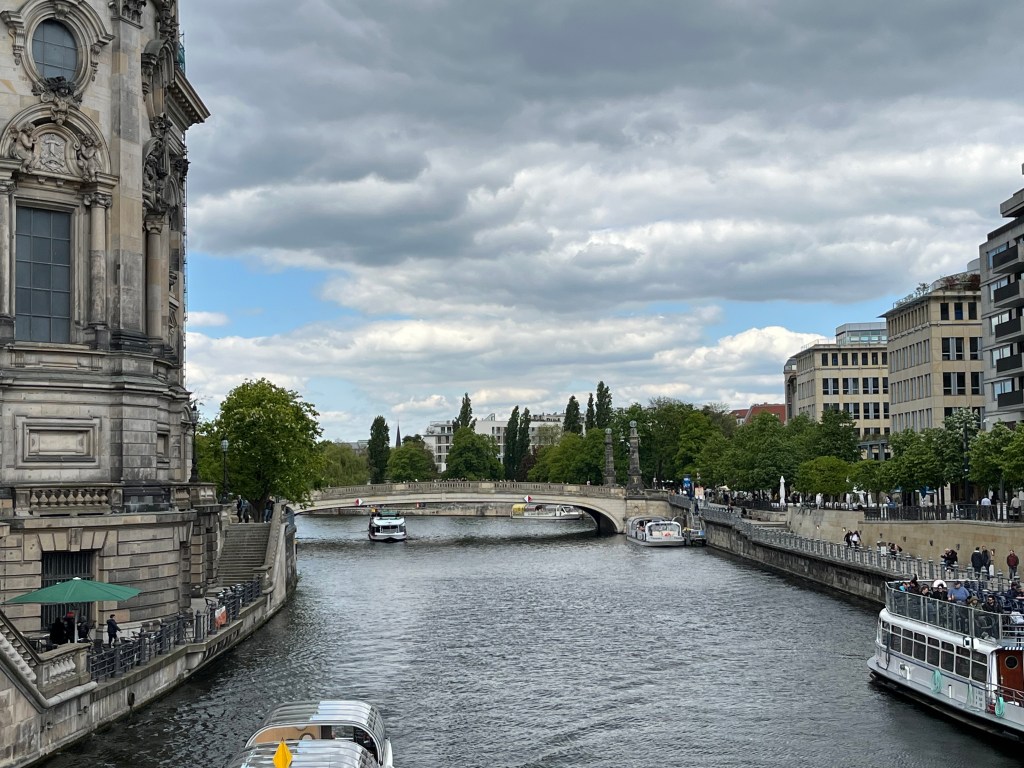
Museum Island 
St Mary’s Church 15th c. The bike tour was fun. Anton, a history graduate from Humboldt, spoke perfect English and had a great sense of humor. The group was small: an English woman, two guys from Boston, a couple from New Zealand living in Switzerland and me. It’s wonderful biking in such a bike-friendly city. Germany and Northern Europe are way ahead of us in bike safety and dedicated lanes.
Before joining the tour, I went through the DDR Museum. I’ve always had a fascination with the old East Germany, from my early philately days. I always found their stamps interesting. The DDR was a curious state, unrecognized by West Germany until 1972. They always pointed to West Germany as the Third Reich successor state, thereby absolving themselves of any guilt. They established the most totalitarian regime in the former Warsaw Pact, with the exception of the pre-Gorbachev USSR. A significant percentage of the population collaborated with the Ministry of State Security (Stasi). I recommend the films “The Lives of Others” and the satirical “Goodbye Lenin!” for perspectives of life in the final days of the DDR.
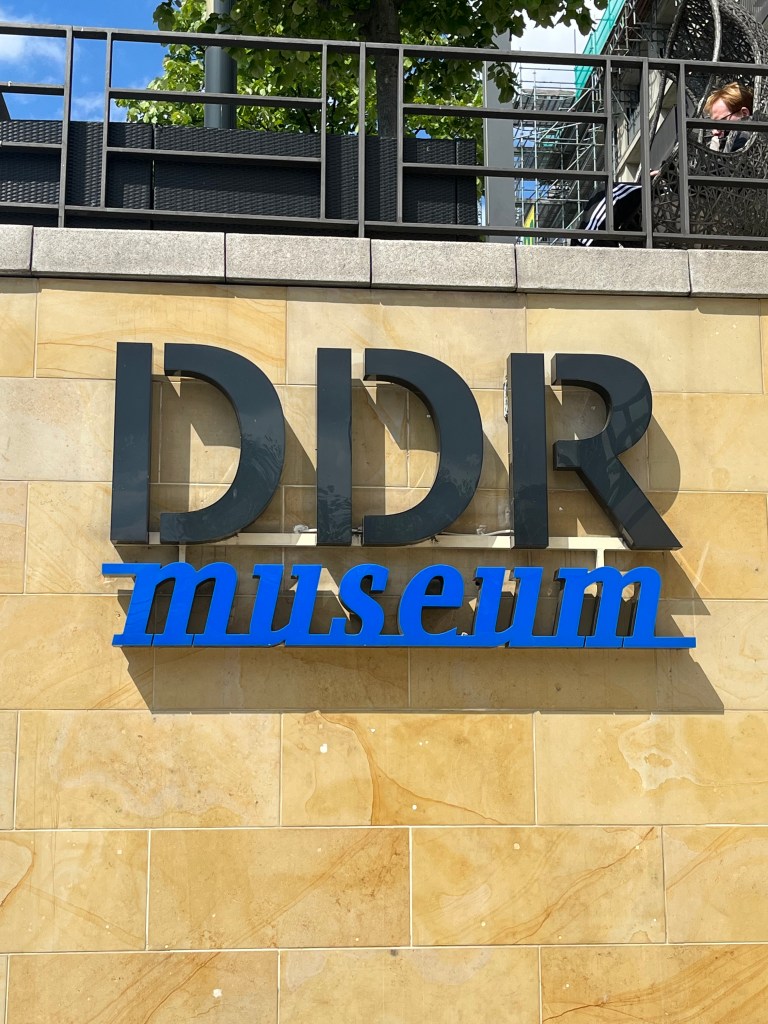

East Berlin city plan with the curious Masonic symbol of the SED (Communist Party) 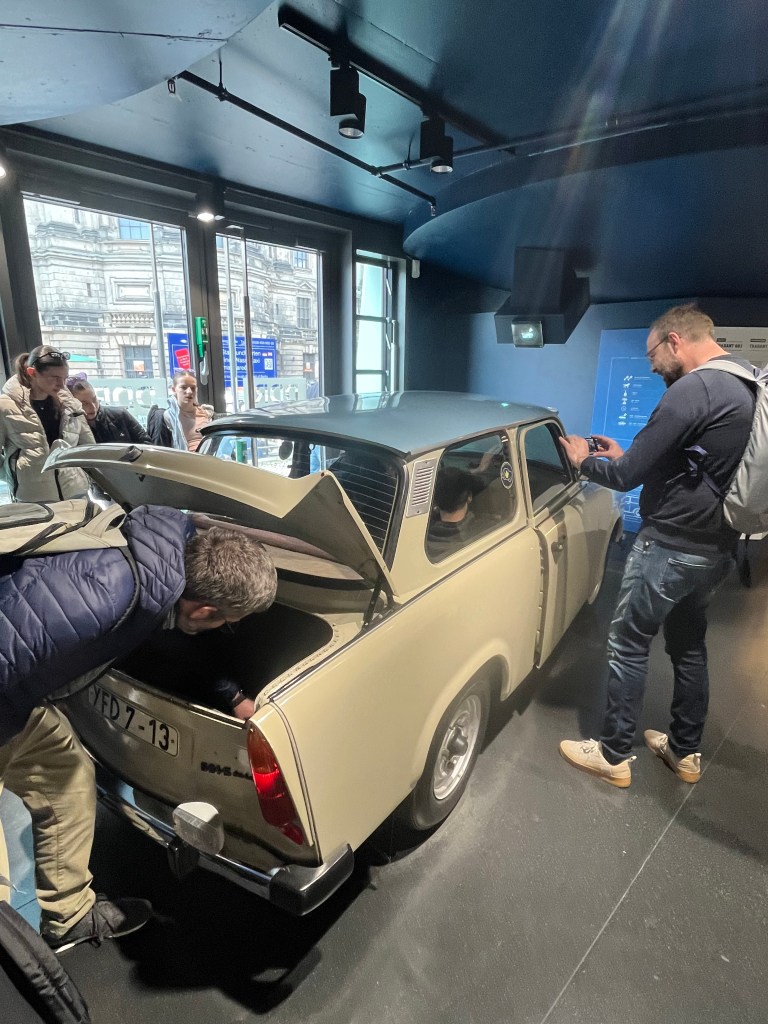
The awful Trabant 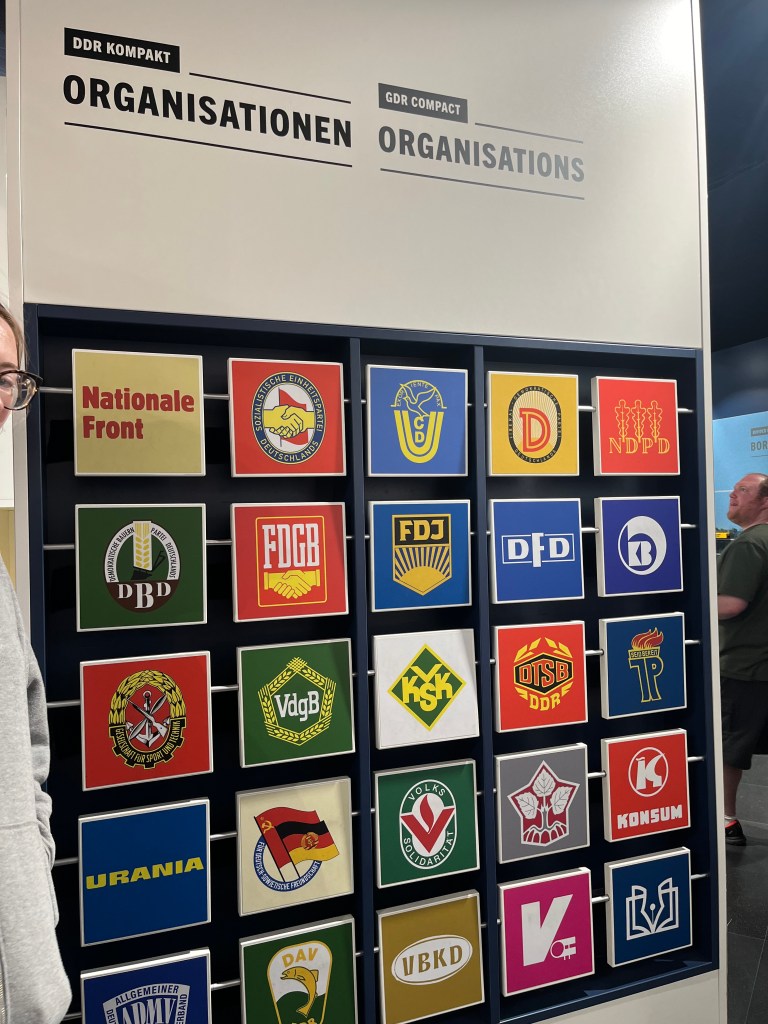
Mass totalitarian organizations 
Nationalvolksarmee Ideal Soldier 
USSR-DDR brotherhood 
Massive celebration a few weeks before the Wall fell 

The Socialist Unity Party’s symbol 
A party for ex-Nazis, some of whom became avid Stasi officers! 
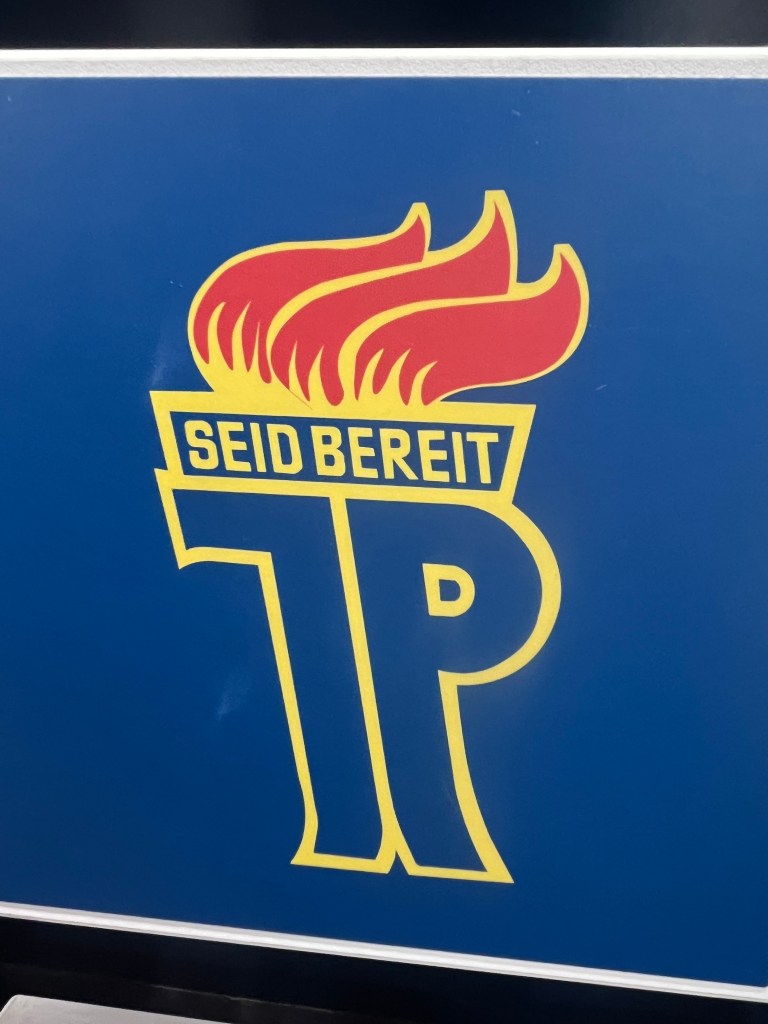
The youth group 
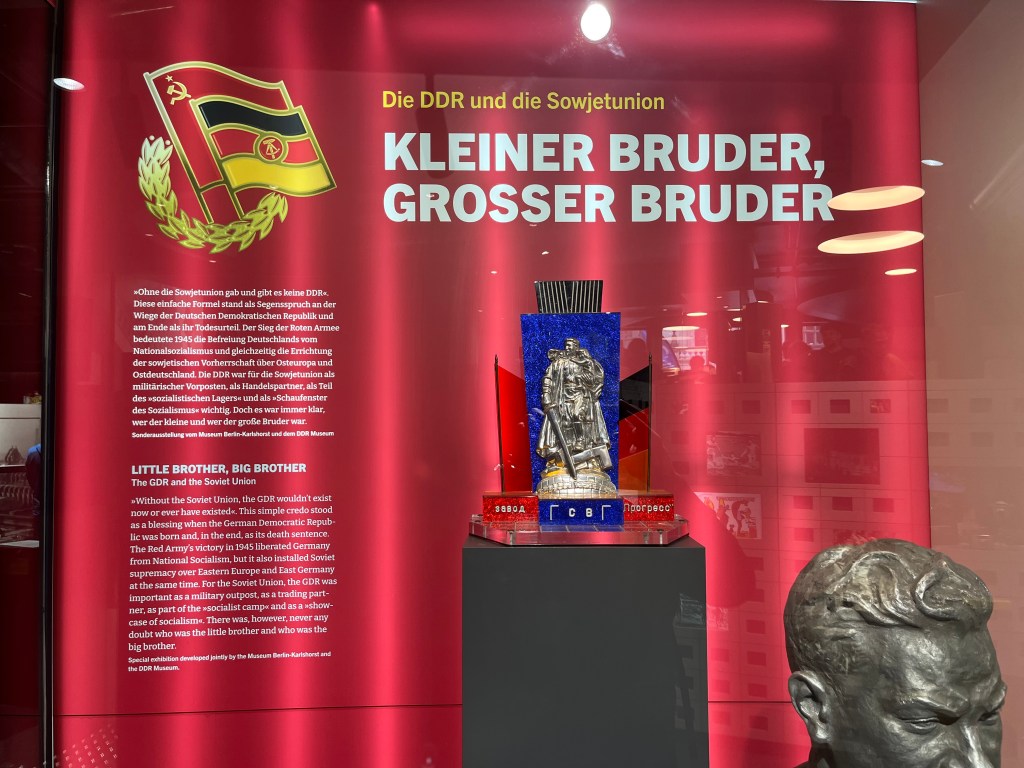
The East Germans were the “little brothers” 
Hygiene was important for die Jugend 
Always the photo of General Secretary Erich Honecker 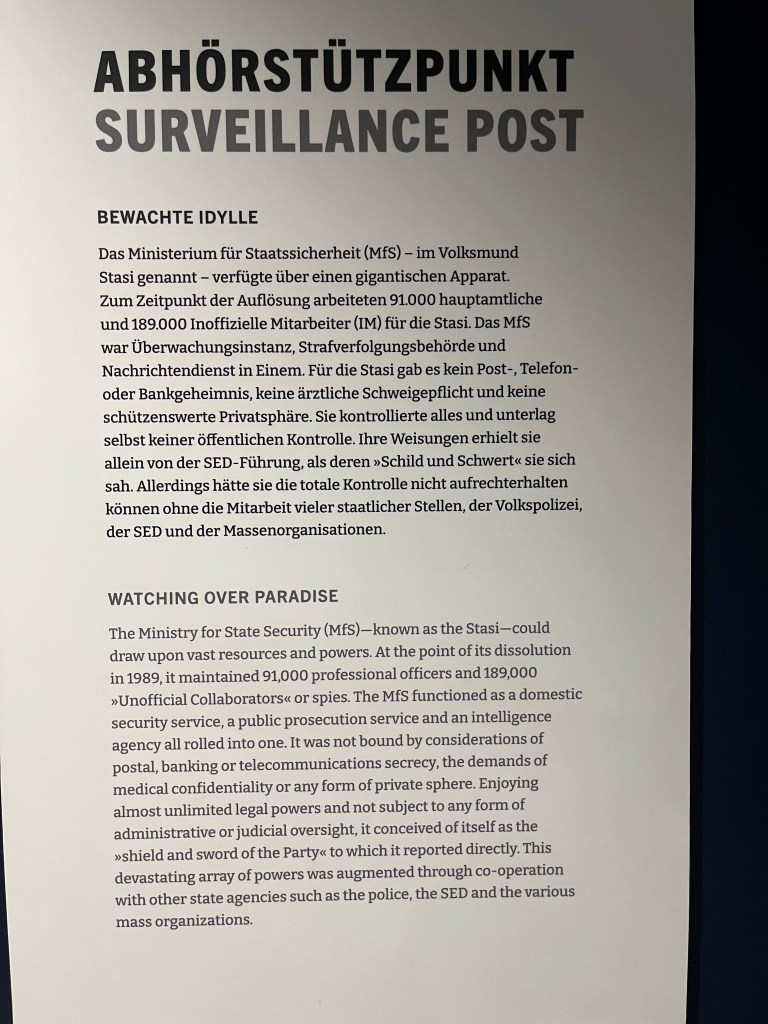

During the bike tour, I took some pictures of the remaining parts of the Berlin Wall, of which only 3 km remain. We also passed one of the few remaining structures from the Third Reich era: the massive Luftwaffe (Air Force) headquarters building. Other interesting sites included the Rote Rathaus, the new City Hall, which was formerly in East Berlin. I mentioned this in the past post.
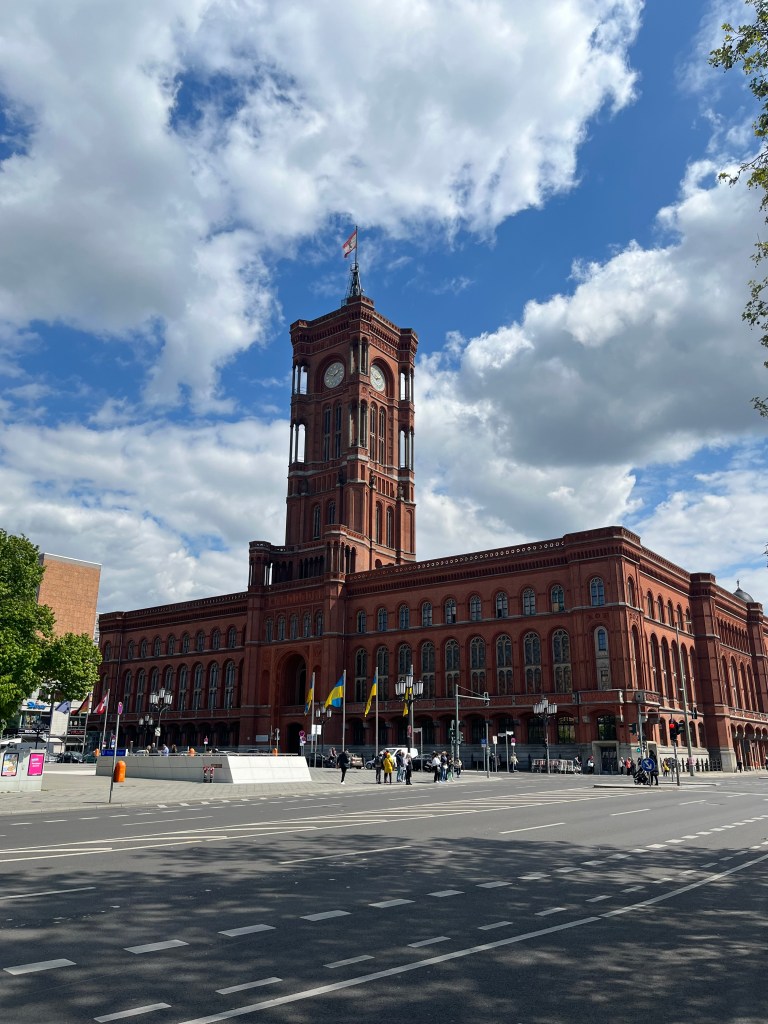
Rote Rathaus 
Former DDR TV tower 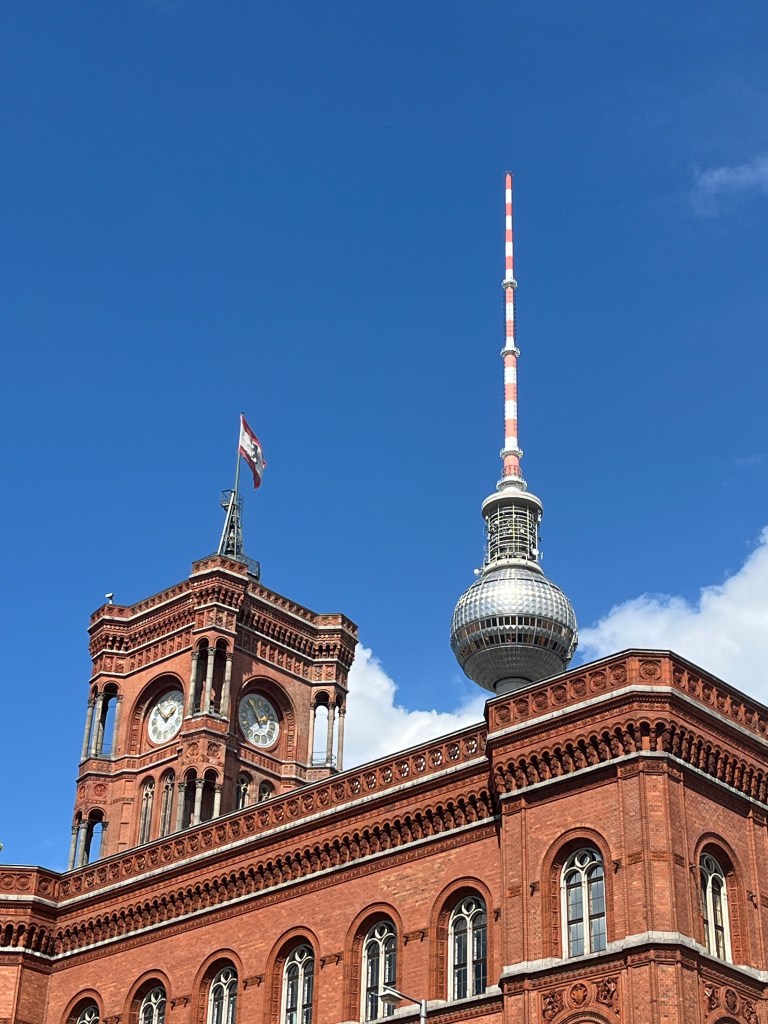
Juxtaposition of Rote Rathaus and Fernsehturm 
St-Nikolaus Church where the bike tour met 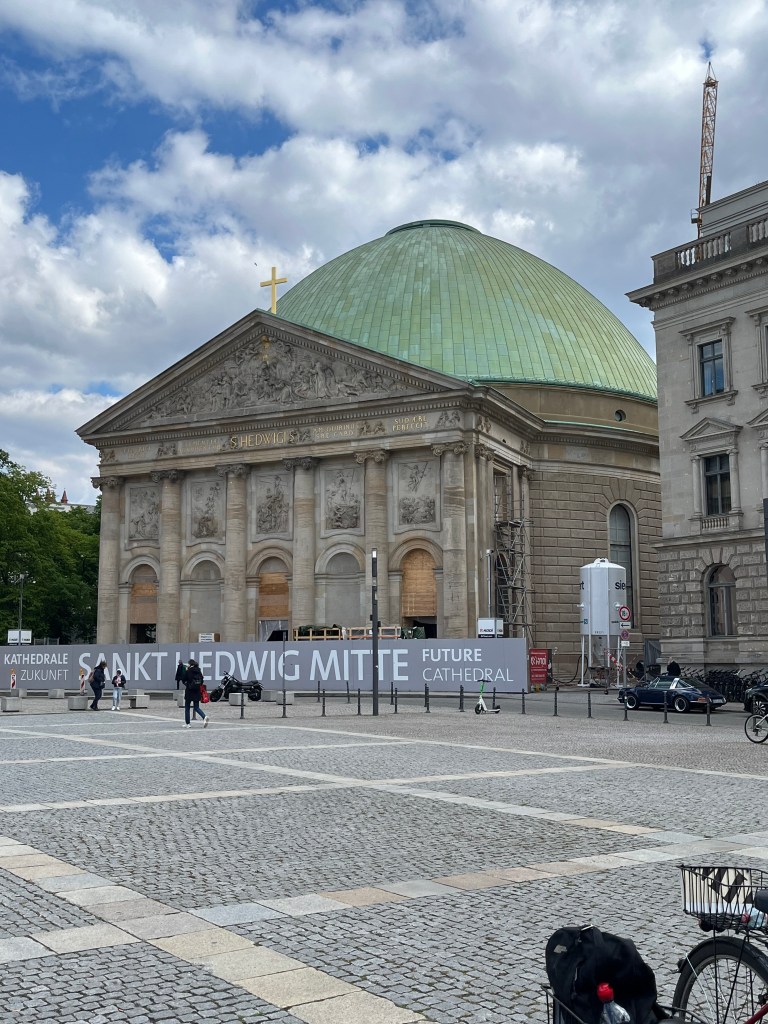
St-Hedwig Catholic Church funded by Frederick the Great 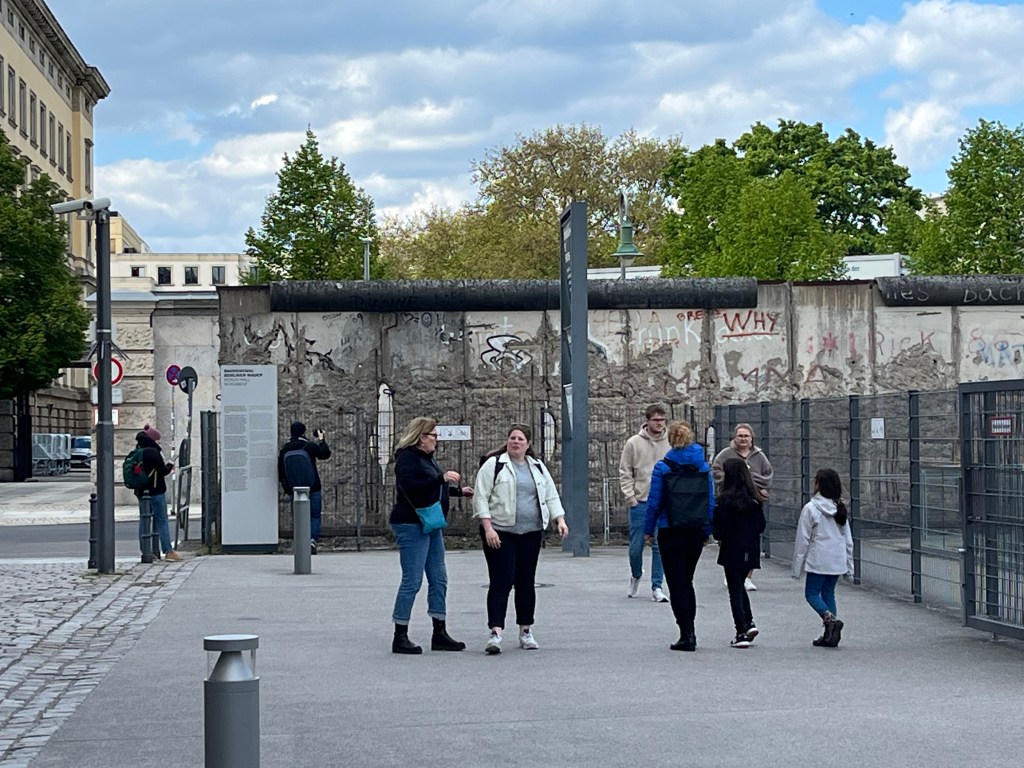
A remaining portion of the Wall 
Third Reich-era Luftwaffe Headquarters After the tour, I walked back to my Airbnb after clocking in 15 miles and three hours on a bike tour. I suppose I got my cardio in for the day!
-
Berlin: April 25 & morning of April 26
After a pleasant ride on the high-speed ICE to Berlin Hbf , I walked out of the massive glass station onto a vast plaza and was pleased to see the famous Bundestag, originally known as the Reichstag, looming in the near distance. Readers may be familiar with the famous 1933 Reichstag fire, which Hitler used as a pretext for claiming dictatorial power and later the sight of the choreographed raising of the Soviet flag over its semi-ruins in April 1945. Unfortunately, an ongoing construction site obscured the full view, but I was able to grab a few decent shots.

Arriving in Berlin 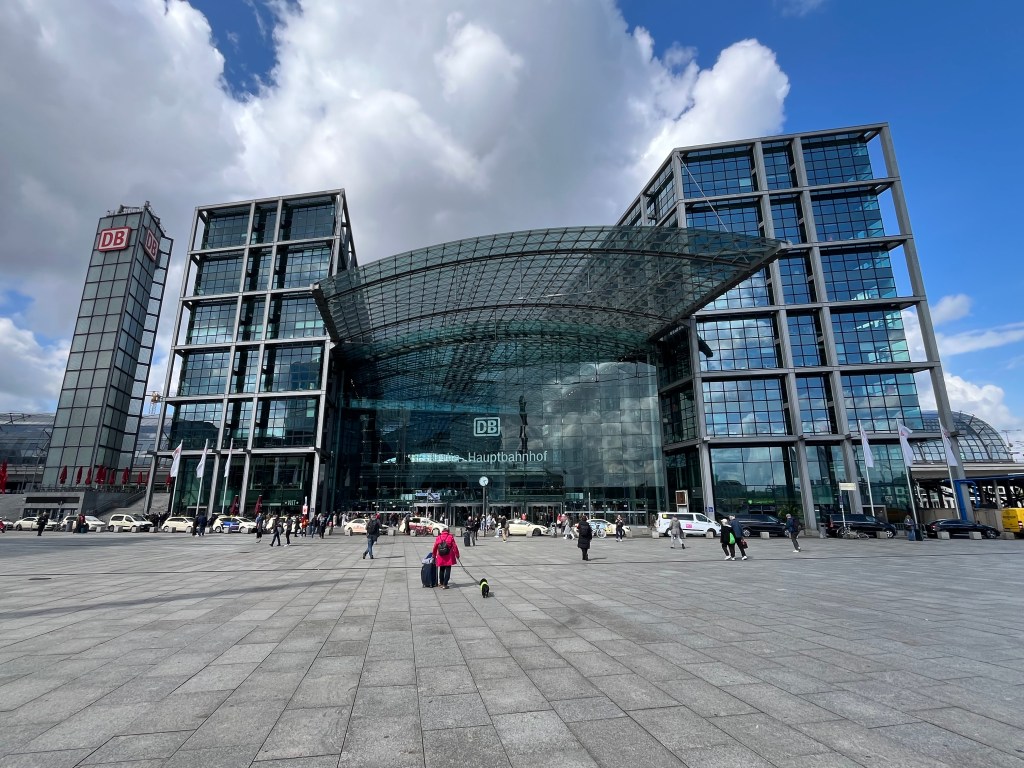
Berlin Hauptbanhof 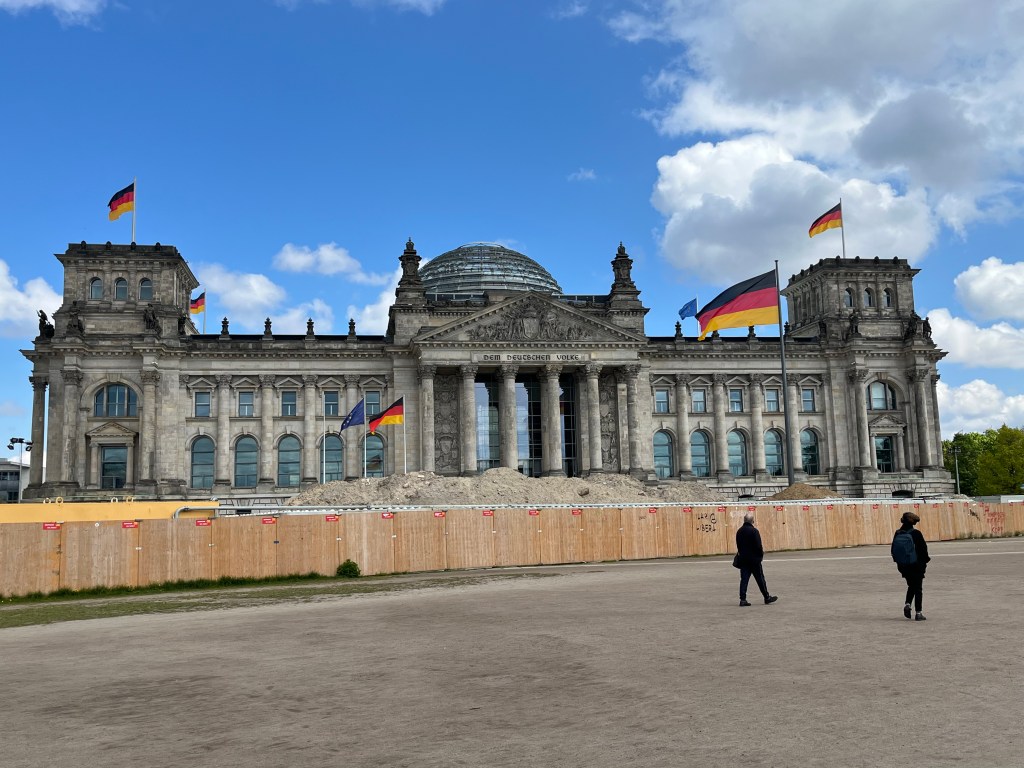
Bundestag, seat of the German government 
Front view over construction 
Iconic columns & inscriptions From the Bundestag, it was a short walk through the park to Unter den Linden and the famous Brandenburger Tor (Brandenburg Gate) on the Pariser Platz. Looking north, I could see the 368 m. Fernsehturm TV tower and the Rotes Rathaus, both in the former East Berlin. I also saw the venerable Adlon Hotel, famous from Nazi and Cold War spy novels and movies. Looking down the Unter den Linden, I could pick out the 67 m. Victory Column, built after a 19th c. victory over Denmark.

Walking toward the Brandenburg Gate 
Brandenburg Gate 
Looking toward the former East Berlin with the TV tower & Red City Hall 
The TV tower 
Hotel Adlon 
Looking down Unter den Linden towards the Victory Column I considered taking the U-Bahn to my Airbnb in Schönberg, but given how massive Berlin’s transport system is and with my luggage in tow, I called an Uber, which is cheaper than in the US, and rode a nice Mercedes sedan to my destination.
The host met me at the door and even carried my bag to the apartment, which I imagine was built over 100 years ago and escaped the bombing campaigns. He showed me how the washing machine worked and told me to call if I needed anything. He’s a student at a local university and had a big exam the next day, so I wished him luck. His family owns several apartments in the area. The entry with two keys was a bit tricky. When I returned from the grocery store, I had a tough time getting in. I told him they needed to install a modern lock.
As readers of my blog are aware, over 90% of the accommodations I choose are excellent, but there are always a few misses. While this Airbnb is in a nice neighborhood and is very quiet, it won’t work for me. For example, it has a small twin bed, no coffeemaker and drapes that are missing a hook. I haven’t told the host yet, but I’ll check out tomorrow and stay at a luxury hotel (Hotel Luc, a Marriott property) near the center since this location is a bit far. Hotels are pretty cheap in Berlin compared to comparable US cities. I also decided to spend Saturday night just across the border in Kostrzyn. I want to check out the former Prussian city where the Red Army launched its final drive to Berlin. I’ll write about this later.
Last night I slept until about 4:45 am. After a few minutes, though, I fell back to sleep and arose around 7, feeling well rested. My lower back was sore from the bed, so I sat in a chair and put my hands on the floor while stretching for a minute, which felt great. With no coffeemaker, I walked down the Martin-Luther Strasse a few hundred meters and had, in succession, a cappuccino and a flat white, the price for both less than for one latte in Nashville. The morning is sunny and finally warming up, reaching about 60 today and hitting the 70s by Sunday.

My street 

Ah! Caffeine! On my way to the cafe, I noticed that I was passing through John F. Kennedy Platz, adjoining the Schönberg Rathaus. I read that this was the exact spot where JFK delivered his famous “Ich bin ein Berliner” speech on June 26, 1963. The Rathaus was West Berlin’s temporary city hall since the original Red City Hall was located in East Berlin.

JFK Platz 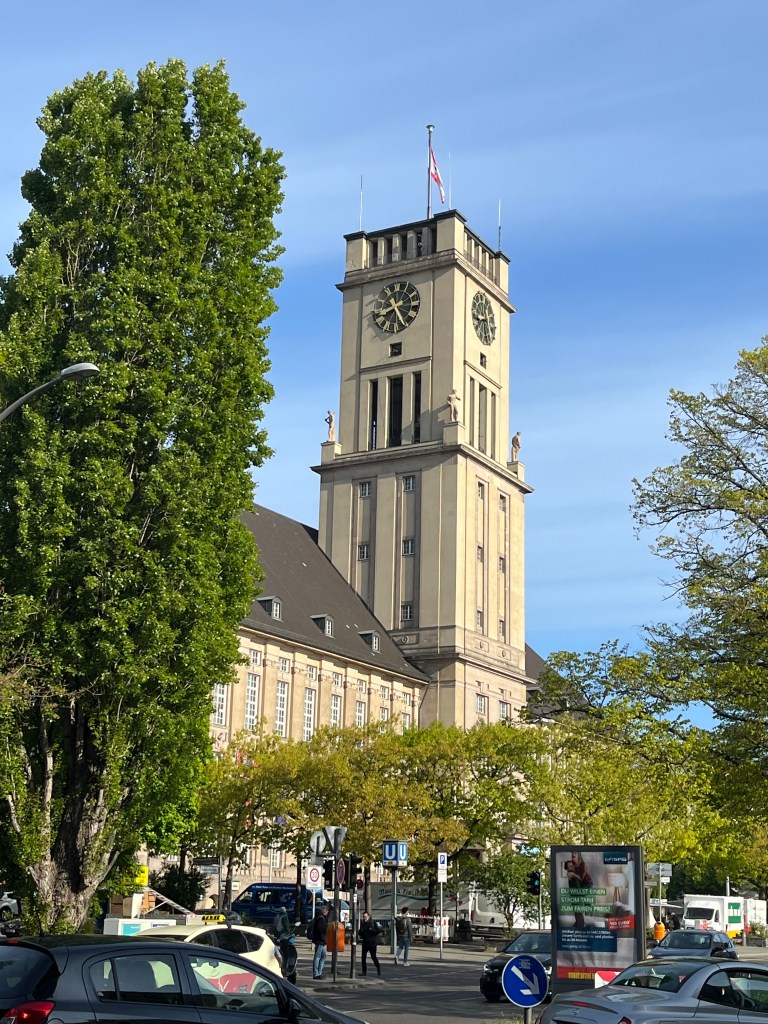
Schönberg Rathaus Later this morning, I’ll head back to the center for a long walk and then join a small group for a 3-hour guided bike tour of the sites. Looking forward to much warmer cycling weather than in Amsterdam a week ago!
-
Subscribe
Subscribed
Already have a WordPress.com account? Log in now.